- WV App Login
- Site Search
- Report Templates
- Speech Helpers
- SLP Resources
- Top 10 Tips
- Getting an Eval
- Certified SLP
- How to Say the R Sound
- 0-18 Months
- 18-36 Months
- 18-30 Months
- 30-36 Months
- 10-11 Years
- Articulation
- Cleft Palate
- Phonological
- Dysphagia Causes
- Dysphagia Treatment

195 Memory and Attention Tasks for Speech Therapy Practice
As promised here are the words for your unlimited use.
If you know others who can use our lists...
...please share this page using the share buttons above.
Explore Our Goal Reaching, Client Centered Products

Attention Tasks
- Begin with "A-1" and continue alternating between numbers and letters until I say "Stop". For example: A-1, B-2, C-3…
- Begin with the number "1" and name an object for each letter of the alphabet starting with "A" and continue until I say "Stop". For example: 1 Apple, 2 Balls, 3 Cars...
- Tell me boys names for each letter of the alphabet starting with the letter "A".
- Tell me girls names for each letter of the alphabet starting with the letter "A".
- Imagine the alphabet printed in capital letters. Now from the beginning recite only those with curves in them." (Answer: B C D G J O P Q R S U)
Memory Tasks
Immediate memory - number sequences.
17 92
23 17
60 58
64 12
92 39
65 78
61 85
43 59
21 66
83 24
7 1 3
6 8 6
8 3 2
1 6 5
4 9 2
9 4 3
8 1 7
1 4 3
9 2 4
7 4 1
68 92 74
13 27 92
58 65 31
64 12 22
99 32 19
17 75 47
60 81 11
43 59 61
27 46 86
84 23 53
3 9 6 2
9 7 4 1
1 5 9 7
2 1 5 8
8 6 3 9
3 3 6 4
6 2 8 3
4 8 2 5
5 4 1 6
7 5 7 1
68 92 74 21
13 27 92 48
58 65 31 72
64 12 22 49
99 32 19 46
17 75 47 53
60 81 11 92
43 59 61 70
27 46 86 51
84 23 53 67
9 3 8 2 7
4 9 7 6 1
7 5 9 1 6
2 8 5 1 3
3 6 4 9 8
6 4 3 5 2
1 3 8 7 5
5 2 6 3 9
8 1 2 4 4
2 7 1 2 6
35 21 68 74 92
56 92 13 48 27
49 72 65 58 31
22 64 58 49 12
87 46 32 99 19
17 28 47 53 96
73 11 92 60 81
62 59 43 70 61
93 51 27 86 46
39 53 67 84 23
SEE ALSO: The Best Free App for Speech Therapy

Immediate Memory - Word Sequences
cat bear
ball star
cup chair
cup top
door month
foot light
hair dust
horse bird
hot pear
ice kite
pad plane
rug bike
shoe fix
spring seen
time night
truck book
wing bath
wood pen
zoo milk
step ear air
bean rose plane
bear shovel pants
bed clip box
beets pill slide
board vase horse
book tag shirt
doll game sand
door light glass
lamp toe silk
leaf eye floor
light hair plant
lock dot bed
log bath tree
nail cup bed
pan shoe knife
pen sled beef
soap hat bus
soap jacks dog
watch pick knot
ball stand comb owl
ant paint bell whale
bell flag ink clay
brick nut frog pie
dress lamp bed plant
drum pond bag cake
dust broom can tea
foot land back fish
hole tug shop lake
jam skate moth pan
peach beard spoon pot
race cat desk tack
scale oil bead salt
seed tie fork eye
silk ghost bin shelf
sit crib bow train
soap fort tray nurse
stove grass pail jet
tape fire key spool
wheel gown blue box
bone heart ice sand tin
ball pin ant saw tent
boot chest hair oar board
cloud brush mop cave rink
coach star dog boot coal
dance dump dirt bull ox
felt fish beach oar skate
kite glue rock stone smoke
paste milk chalk clock wall
rail spike gate barn nest
rake toy vase chest sheet mop
sand sun mud wire print
seed pond fly dock lamb
shell house string drop rain
sit squash net cage pole
stalk suds glass barn rose
stool queen egg shell dig
switch stork stairs swan coat
wheel cone clown car horn
wrench sheet cup drop bee
Recent Memory
- Besides the people who work here, who have you seen today?
- How long have you been in this location?
- What building are you in?
- What day of the week is it?
- What did you do right before you came to see me?
- What did you eat for breakfast today?
- What is the first thing you did this morning?
- What month is it?
- What will you do when you finish here?
- Who is your doctor (or teacher for a child)?
SEE ALSO: The Best Books for Speech Therapy Practice

Remote Memory
- What are two primary political parties?
- What war involved the North and the South?
- Where is our nation's capitol?
- Where is the state capitol?
- Who discovered America?
- Who freed the slaves?
- Who is our Governor?
- Who is our President?
- Who was Helen Keller?
- Who was the first President?
Temporal Orientation
- About what time do you think it is?
- How long have you been in this building?
- What date is it?
- What is next month?
- What season are we in?
- What was last month?
- What was our last holiday?
- What year is it?
We know life is busy , but if you're reading this you're probably someone who cares about helping their loved one as much as you can.
Practice 5-10 minutes whenever you can, but try to do it on a consistent basis (daily).
Please, please, please use this list to practice.
It will be a great benefit to you and your loved one's progress.
Return to top of Memory and Attention Tasks
Freebies, Activities, and Specials, Oh My! Sign up for Terrific Therapy Activity Emails
See Past Email Examples
Your information is 100% private & never shared .

Hi! We're Luke and Hollie.
We are both MS CCC-SLPs and fell in love while studying for our degrees. Since then we have done everything together - graduated, worked, and started a family. We spend most of our time with our family and the rest making this site for you.

Top Free Resources

Word Vault Essential

# 1 Chronological Age Calculator

Popular Materials
All in one printable flashcards.

Multiple Meaning Word Mega Pack

Complete Articulation Word Search

New! 111 Articulation Stories

Teaching the Sound Books

Multi-Syllabic Words Flashcards

Apps to Save You Time & Help Your Clients
Articulation therapy + pirate adventures = awesomeness.

This App Will Get Your Kids Talking

Image Credits
Copyright © 2010 –
HomeSpeechHome.com | All Rights Reserved

This website contains affiliate links, meaning if you buy something from them we may make some money (at no cost to you). By using our affiliate links, you are helping to support our site which is a U.S.-based, family-run small business :)

Auditory Memory and Processing in Speech Therapy
- allisonfors
- March 21, 2024
- No Comments
- Hearing Loss , Literacy , Speech Therapy Education

Auditory memory plays a crucial role in speech therapy, particularly for individuals who have difficulties with language, communication, or speech disorders. They are essential for understanding speech, following directions, filtering out background noise, and distinguishing between similar sounds.
What is auditory memory and processing?
Auditory memory refers to the cognitive ability to store, retain, and recall information presented orally or through sound. It involves the brain’s capacity to temporarily or permanently retain auditory stimuli for later recall or use. Auditory working memory plays a crucial role in various cognitive tasks, particularly those related to language learning, comprehension, and communication.
Examples include:
- Remembering a phone number after hearing it.
- Recalling a spoken conversation.
- Memorizing and recalling instructions given verbally.
- Recognizing and recalling familiar sounds or voices.
Auditory processing and memory is essential for everyday functioning, as it enables us to understand and retain information communicated, whether it is spoken language, music, or environmental sounds. It is closely related to other cognitive processes, such as attention, perception, and language processing.
Why are they important?
Difficulties in auditory memory and processing can impact learning, communication, and other aspects of cognitive functioning. Overall, they are essential for various aspects of daily life, from communication and learning to social interaction, safety, and cognitive functioning.
Auditory working memory is important for:
- Language Development : Auditory memory is closely linked to language development. Children with language delays or disorders may have challenges in processing and retaining auditory information, which can hinder their ability to learn vocabulary, syntax, grammar, and follow directions.
- Auditory Discrimination : Some individuals may struggle with distinguishing between similar sounds or phonemes, leading to difficulties in speech production or comprehension. Learning to differentiate between sounds, syllables, or words with subtle differences in pronunciation is important.
- Auditory Comprehension : Individuals with language disorders or learning disabilities may experience difficulties in understanding spoken language due to poor auditory processing or memory. Auditory comprehension is a fundamental aspect of communication and language processing, allowing individuals to understand what is being said to them and to respond appropriately.
- Following Directions : Auditory processing is essential for following verbal instructions. Children and adults with language disorders or attention deficits may struggle to remember multi-step directions or sequences of tasks.
- Reading and Literacy : Auditory skills are important for phonological awareness, which is the ability to recognize and manipulate the sounds of language. It includes skills such as rhyming, segmenting, and blending sounds, which are critical for reading and literacy development.
- Cognitive Functioning : Auditory processing and memory are interconnected with various cognitive processes, including attention, memory, and problem-solving. Strengthening these skills can enhance overall cognitive functioning and academic performance.
Auditory Memory Games and Activities
Auditory memory maps.

A comprehensive packet focusing on following directions, word and sentence recall, reading/auditory comprehension, and inferencing for speech therapy and the classroom. Use these multileveled activities to work on auditory memory in a functional AND engaging way! Whether adapting these resources for different age groups or specific learning needs, these auditory processing activities are great for creating a more inclusive and effective learning journey for every student.
Boom Auditory Memory Maps

Perfect for strengthening auditory processing! These NO PRINT, self-grading cards focus on following directions, word and sentence recall, reading/auditory comprehension, and inferencing for speech therapy and the classroom. Use these multileveled activities to work on auditory memory in a functional AND engaging way! No print activity – great for speech teletherapy.
No Print Hawaii Language Activities

Language activities for speech therapy! Includes: verbs, pronouns, auditory memory, social skills, and conversation prompts. Great for speech teletherapy! This is a NO PRINT, interactive PDF. No printing, cutting, or laminating! Just download, save, and open on your computer or tablet.
You may also enjoy reading:
Using the Auditory Sandwich as a Language Intervention Tool

Leave a Reply Cancel reply
Your email address will not be published. Required fields are marked *
You Also Might Like...

7 Prepositions Activities for Speech Therapy
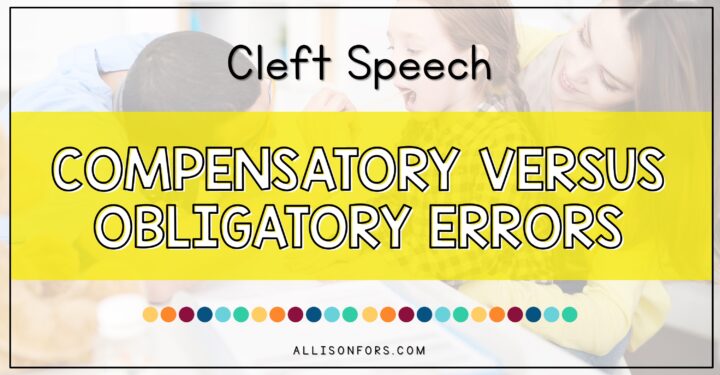
Compensatory Errors Versus Obligatory Errors in Cleft Speech
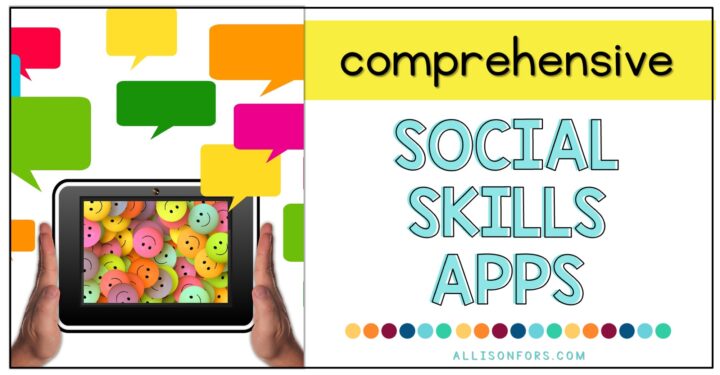
7 of the Most Comprehensive Social Skills Apps

OT and PT Development Norms

COPYRIGHT © 2024 · ALLISON FORS, INC.
TERMS & CONDITIONS
PRIVACY POLICY
5 Constant Therapy exercises to target working memory
With a smartphone always handy, it’s easy to forget how much information we keep in our heads on a regular basis. If you have to add up how many dinner plates you need for a party you’re hosting, do you grab your calculator to figure out an answer? Most likely, no, because you can keep and access small chunks of information—your working memory is what allows you to access and manipulate that info.
Our working memories are a sort of a mental clipboard for both auditory and visual information that we use in order to do daily activities such as following instructions, planning our days, and making calculations. Verbal information is stored in an area of working memory called the phonological loop, and visual information is stored in an area called the visuospatial sketchpad.
After a stroke , traumatic brain injury , or other neurological impairment, often this mental clipboard may hold less information. However, research shows that regular practice can increase working memory capacity.
Using Constant Therapy memory tasks in-clinic
If you’re a clinician working on memory skills with your clients, you may be training internal memory strategies such as verbal rehearsal, chunking/grouping, associations, visualization, or remembering the total number of items in a list. Are you looking for materials to practice these memory strategies? Constant Therapy provides multiple tasks targeting visual working memory ( Match pictures and Match faces ), nonverbal auditory memory ( Match sounds ), and verbal working memory ( Match written words and Match words you hear ).
Using Constant Therapy memory tasks at home
To improve carry-over of internal memory strategies to environments outside of therapy sessions, homework is key. Your client can complete these memory exercises as a part of their Constant Therapy home program. As the clinician, you can stay connected and monitor performance on tasks done outside of the session. Can the client achieve similar accuracy and latency scores as they do in the clinic? If there is a discrepancy in scores, perhaps the memory strategies need to be revisited in the clinic.
Let’s take a look at these 5 memory exercises.
1. Match pictures Targeting visual memory skills, users tap on the cards to match pairs of pictured objects.
2. Match faces Targeting visual memory skills, users tap on the cards to match pairs of photographs of people.
3. Match sounds Targeting nonverbal auditory memory skills, users tap on the cards to match pairs of common sounds heard in a person’s environment.
4. Match written words Targeting verbal memory skills, user tap on the cards to match pairs of written words.
5. Match words you hear Targeting verbal memory skills, users tap on the cards to match pairs of spoken words.
How are working memory matching tasks leveled?
All matching tasks have five levels. As the levels increase, more items are added to the grid. Levels are as follows.
- Level 1: 6 items in a grid
- Level 2: 12 items in a grid
- Level 3: 20 items in a grid
- Level 4: 24 items in a grid
- Level 5: 30 items in a grid
How are working memory matching tasks scored?
The minimum number of moves is calculated, then any additional moves beyond that results in a reduction of score.
Ideas for addressing other cognitive and language skills
These matching tasks target memory and visuospatial skills, but you can use these exercises in other ways in your sessions, too.
- Alternating Attention: Set a timer and have your client work on a matching task for a period of time. When the timer goes off, the client must switch to a new task. Then, when the timer goes off again, have the client return to the matching task to finish.
- Divided Attention: Use the matching task as one stimulus. You can use other types of stimuli, such as listening to a podcast or news clip simultaneously. The client must complete the task while listening to the podcast, then answer comprehension questions about it.
- Left Inattention/Left Neglect: This task requires the client to scan the entire length of the screen in order to locate all of the target items.
- Delayed Memory: After the grid is completed, have the client recall the location of the items on the grid after a period of time elapses.
- Word Retrieval: For Match pictures, your client can say or write the name of the pictures as he/she finds the matching pictures.
- Oral Reading: For Match written words, your client can read the words aloud as he/she finds the matching written words.
- Repetition: For Match words you hear, your client can repeat the words as he/she finds the matching spoken words.
- Sentence Production: For Match pictures, Match faces, Match words you hear, and Match written words, your client can generate a sentence about the matching items.
- Planning and Disinhibition: Using trial-and-error to complete these tasks will result in low accuracy scores. Prompt your client to develop a plan for minimizing errors and not selecting the same incorrect matches multiple times.
- Self-Monitoring: This is a great task to work on self-monitoring skills. Your client can assess if he/she is implementing internal memory strategies effectively.
- Processing Speed: All Constant Therapy tasks provide information on latency times. You and your client can track how speed improves over time.
Check out our how-to video guides to learn more about our tasks.
References:
- Dunn, J., & Clare, L. (2007). Learning face-name associations in early-stage dementia: comparing the effects of errorless learning and effortful processing. Neuropsychological Rehabilitation , 735-54.
- Klingberg, T. (2010). Training and plasticity of working memory. Trends in Cognitive Sciences, 317-24.
- Westerberg, H., Jacobacus, H., & Hirvikoski, T. (2007). Computerized working memory training after stroke- A pilot study. Brain Injury , 21, 21-9.
Tackle your speech therapy goals, get top-notch support
Related articles, submit a comment cancel reply.
Your email address will not be published. Required fields are marked *
Constant Therapy Health
- Partner with us
- Constant Therapy
- Try for free
- Request a Demo
- Conditions we support
- For clinicians
- For patients
- For veterans
Support + Resources
- Downloadable Resources
- Testimonials
Join the Conversation
Home » Blog » General » Understanding IEP Goals for Enhancing Working Memory Skills

Understanding IEP Goals for Enhancing Working Memory Skills
As a Speech Language Pathologist and Social Emotional Learning expert, I often work with individuals who struggle with working memory skills. These skills play a crucial role in academic and social success, making it essential to address them through Individualized Education Program (IEP) goals. In this blog post, I will provide an overview of working memory, explain the importance of IEP goals for working memory improvement, share examples of IEP goals, discuss implementation strategies, and provide additional resources for further learning.
What is working memory?
Working memory refers to the cognitive system responsible for temporarily holding and manipulating information in our minds. It involves three main components: the phonological loop, the visuospatial sketchpad, and the central executive. The phonological loop processes auditory information, the visuospatial sketchpad handles visual and spatial information, and the central executive coordinates and integrates information from both components.
Working memory is crucial for learning and daily life activities. It allows us to follow instructions, solve problems, make decisions, and remember information. Individuals with weak working memory skills may struggle with attention, organization, planning, and information retention.
Why are IEP goals important for working memory improvement?
IEP goals are essential for addressing specific areas of need and providing individualized support to students. When it comes to working memory improvement, setting IEP goals can be highly beneficial. These goals provide a clear focus on enhancing working memory skills and guide the development of targeted interventions and strategies.
By setting IEP goals for working memory improvement, educators and speech-language pathologists can collaborate to create a supportive learning environment that addresses the unique needs of each student. These goals can be tailored to target specific aspects of working memory, such as attention, organization, planning, and information retention.
Examples of IEP goals to improve working memory
Here are some examples of IEP goals that can help improve working memory:
Goal 1: Increasing attention span and focus
Strategies to improve attention and focus, such as implementing visual supports, providing frequent breaks, and using mindfulness techniques, can be incorporated into the IEP goal. By enhancing attention and focus, students can better engage with tasks and information, leading to improved working memory.
Goal 2: Enhancing organization and planning skills
Improving organization and planning skills can significantly impact working memory. Techniques such as creating checklists, using calendars and planners, and breaking tasks into smaller steps can be included in the IEP goal. By developing these skills, students can better manage their workload and reduce cognitive load, allowing for improved working memory.
Goal 3: Developing strategies for information retention and retrieval
Information retention and retrieval are vital aspects of working memory. Approaches such as using mnemonic devices, practicing active recall, and implementing spaced repetition can be part of the IEP goal. By teaching students effective memory strategies, they can enhance their ability to retain and retrieve information, ultimately improving working memory.
Implementing IEP goals for working memory improvement
Implementing IEP goals for working memory improvement requires collaboration between speech-language pathologists and educators. Together, they can develop individualized strategies and interventions that address the specific needs of each student.
It is essential to regularly monitor progress and make necessary adjustments to the interventions and strategies. This ongoing assessment ensures that the IEP goals remain relevant and effective in enhancing working memory skills. By regularly reviewing and modifying the goals, educators and speech-language pathologists can provide the necessary support for continued improvement.
Additional resources for understanding and setting IEP goals
For further understanding and guidance on working memory and setting IEP goals, there are various resources available:
- Websites: Explore websites such as EverydaySpeech.com, Understood.org, and LDOnline.org for articles, strategies, and tools related to working memory and IEP goals.
- Books: Consider reading books like “Working Memory and Learning: A Practical Guide for Teachers” by Susan Gathercole and Tracy Packiam Alloway, and “The Working Memory Advantage: Train Your Brain to Function Stronger, Smarter, Faster” by Tracy Packiam Alloway and Ross G. Alloway.
- Professional organizations: Join professional organizations like the American Speech-Language-Hearing Association (ASHA) and attend conferences and workshops focused on working memory and IEP goals.
Working memory skills are essential for academic and social success. By setting IEP goals for working memory improvement, educators and speech-language pathologists can provide targeted support to enhance these skills. Whether it’s increasing attention span, enhancing organization and planning, or developing strategies for information retention and retrieval, IEP goals can make a significant impact on working memory. Take proactive steps in setting IEP goals and start your journey towards working memory improvement today.
Start your EverydaySpeech Free trial and discover a wide range of resources and activities designed to enhance working memory skills. Sign up now at https://everydayspeech.com/start-free-trial/ .

Related Blog Posts:
Pragmatic language: enhancing social skills for meaningful interactions.
Pragmatic Language: Enhancing Social Skills for Meaningful Interactions Pragmatic Language: Enhancing Social Skills for Meaningful Interactions Introduction: Social skills play a crucial role in our daily interactions. They enable us to navigate social situations,...
Preparing for Success: Enhancing Social Communication in Grade 12
Preparing for Success: Enhancing Social Communication in Grade 12 Key Takeaways Strong social communication skills are crucial for academic success and building meaningful relationships in Grade 12. Social communication includes verbal and non-verbal communication,...
Preparing for Success: Enhancing Social Communication in Grade 12 Preparing for Success: Enhancing Social Communication in Grade 12 As students enter Grade 12, they are on the cusp of adulthood and preparing for the next chapter of their lives. While academic success...

FREE MATERIALS
Better doesn’t have to be harder, social skills lessons students actually enjoy.
Be the best educator you can be with no extra prep time needed. Sign up to get access to free samples from the best Social Skills and Social-Emotional educational platform.
Get Started Instantly for Free
Complete guided therapy.
The subscription associated with this email has been cancelled and is no longer active. To reactivate your subscription, please log in.
If you would like to make changes to your account, please log in using the button below and navigate to the settings page. If you’ve forgotten your password, you can reset it using the button below.
Unfortunately it looks like we’re not able to create your subscription at this time. Please contact support to have the issue resolved. We apologize for the inconvenience. Error: Web signup - customer email already exists
Welcome back! The subscription associated with this email was previously cancelled, but don’t fret! We make it easy to reactivate your subscription and pick up right where you left off. Note that subscription reactivations aren't eligible for free trials, but your purchase is protected by a 30 day money back guarantee. Let us know anytime within 30 days if you aren’t satisfied and we'll send you a full refund, no questions asked. Please press ‘Continue’ to enter your payment details and reactivate your subscription
Notice About Our SEL Curriculum
Our SEL Curriculum is currently in a soft product launch stage and is only available by Site License. A Site License is currently defined as a school-building minimum or a minimum cost of $3,000 for the first year of use. Individual SEL Curriculum licenses are not currently available based on the current version of this product.
By clicking continue below, you understand that access to our SEL curriculum is currently limited to the terms above.
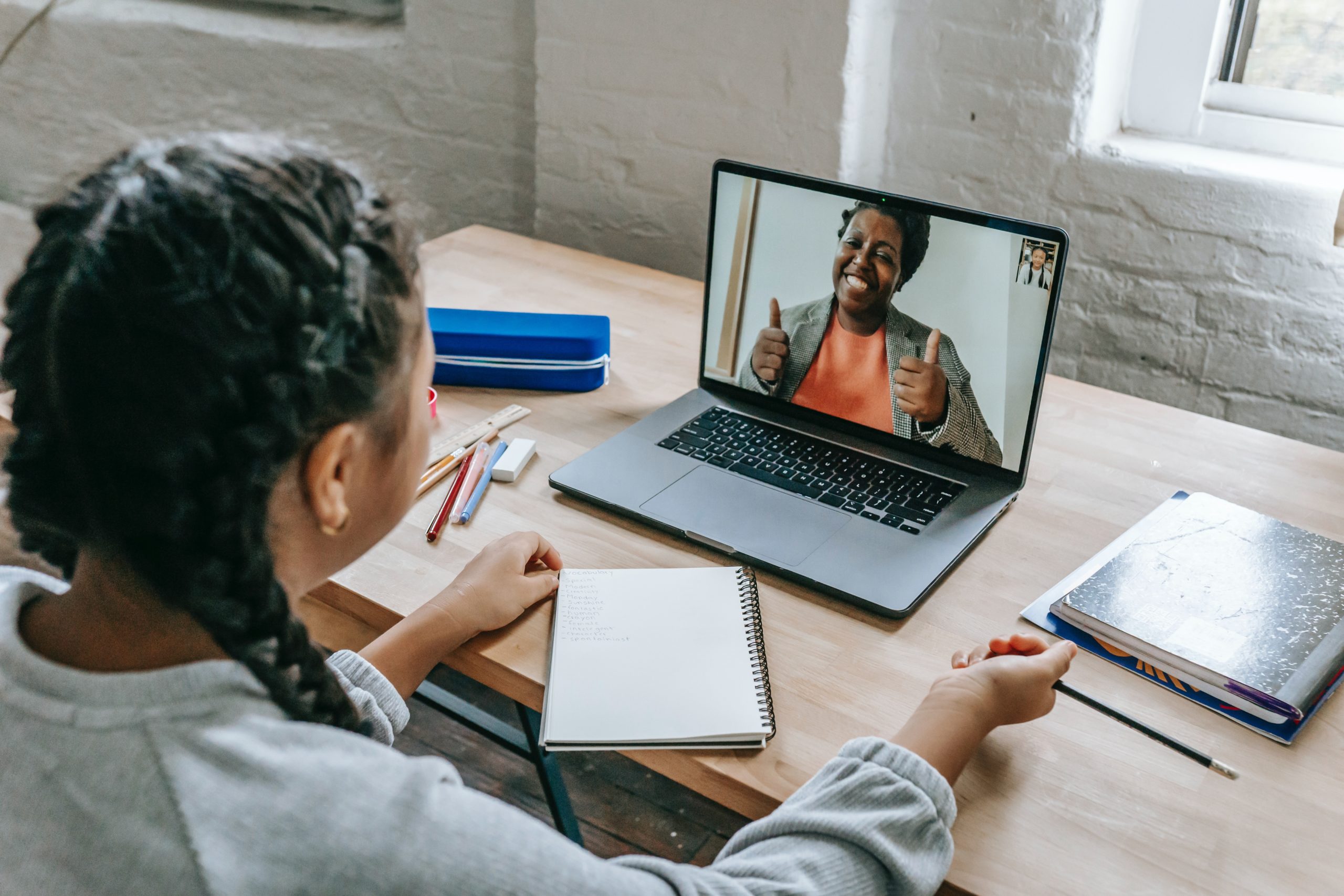
How Does Memory Affect Speech?
While speech and memory aren’t exactly directly related, children and adults with language or communication difficulties can also often struggle to recall certain information. This is especially true in cases where challenges with speech are a result of cognitive impairments. There are many strategies and exercises that can be used to help improve speech and memory, whether the speech and memory issues are related to a cognitive delay, a traumatic brain injury , or the result of a degenerative disease such as Alzheimer’s.
If you want to learn more about how speech and memory work together, schedule your free introductory call today with one of our highly specialized speech therapists.
What are Cognition and Memory?
Memory is the ability to recall or recount certain information in a timely manner. Many children who are affected by language or cognitive impairments struggle with the memory pieces that accompany the learning and mastering of new speech and language skills.
Cognition is the ability to think and analyze information. Cognitive impairments can also make it difficult for children to acquire and engage in new skills.
What are Word Retrieval and Recall?
Word retrieval is the ability to think of an appropriate or specific word at the moment that we need to. Everyone experiences getting stuck and being unable to think of a certain word despite knowing its meaning and having used it in the past. Some children with language disorders struggle with word retrieval due to disorganization within the language centers of the brain. Some children may have a very strong and expansive vocabulary but still struggle to retrieve the word they want during the conversation.
Recall is the ability to remember and recount a series of events logically and in the correct order to another person. This skill involves not only strong memory, speech, and language skills, but also the ability to plan and organize one’s thoughts.
What is Working Memory?
Working memory is the ability to hear something, understand and interpret it, and use that information to take action or complete a task. When we are given a simple math problem (“What’s 3 + 3?) We use our working memory to listen to the problem, interpret it, make our calculations and deliver our answer. Language abilities can be highly dependent on this skill set.
Language development and working memory work closely together and language skills depend significantly on working memory. When we are in conversation or watching a movie, we use working memory to listen to the words that are being spoken, interpret them and store the meaning or information we extract from them. This process occurs both at the sound and word levels. The sound level refers to the process of our brain decoding the sounds and translating those sounds into words. At the word level, our brain must take the words, decipher their meaning, and remember them long enough to complete whichever action is being asked of them.
In some cases, children who struggle with working memory can appear to struggle with attention or poor behavior. Efforts to improve their working memory can go a long way towards improving behavior as well as speech and language skills and lead which can ultimately lead to better academic success. Connect with one of our speech therapists to learn more about improving your working memory! Schedule your free introductory call today!
Do Speech Therapists Work on Memory? How Can Speech Therapy Help?
There are lots of fun and engaging games and activities that you can do with your child to promote their memory as it supports speech and language development. Speech therapists are dedicated to making sure that working with your child on memory skills will be fun and effective. Games and activities related to storytelling, Simon says and Broken Telephone can be excellent ways to exercise a child’s memory. Speech therapists create custom treatment plans that are completely unique to each of their client’s needs. Often speech therapists will also make suggestions to help the child compensate for deficiencies in working memory through the use of tools such as calendars, note-taking, engaging the other senses, and building routines.
Speech and language therapy has also been proven to be beneficial to adults struggling with memory loss due to a stroke, degenerative disease, or traumatic brain injury. Memory loss can deeply affect a person’s ability to function in their daily life. Often people experiencing memory loss experience feelings of isolation, anxiety, and feeling upset about a perceived loss of independence or dignity. Speech therapy can work to address memory and other cognitive deficits. Therapy can help to stimulate parts of the brain and aid in improving speech as well as improving information retention.
People who experience memory loss typically struggle with certain aspects of speech and language, such as struggling to understand certain meanings, as well as basic grammar and word-formation. They may also struggle with speech articulation as well as the fluidity and prosody of their speech. Speech therapists are experts at targeting these types of challenges as well as using memory to stimulate new growth and learning. Often family members are invited to join in therapy sessions, as familiar people can help to trigger past happy memories and positive emotions. Speech therapy has shown to not only improve speech and communication in Alzheimer’s patients but can also slow down the progression of the disease.
There is assistance available if you or someone you care about is having trouble speaking or communicating due to memory loss or impairments. Online speech therapy is an excellent resource that can benefit a wide variety of people who may be struggling with any number of challenges. You can meet with your highly specialized and qualified speech and language pathologist from the comfort of your own home. Start your journey towards improved memory and communication skills and schedule your free introductory call today!

Parent Press
a Goally Publication
Memory Strategies in Speech Therapy
Home » Parent Press » Parenting Hacks » Speech & Language » Memory Strategies in Speech Therapy
Imagine the thrill of watching your child finally recall a lesson they’ve been struggling with, their face lighting up with the joy of achievement. That’s the power of memory strategies in speech therapy, a game-changer for parents and caregivers of neurodivergent kids. In this blog post, we’ll explore the ins and outs of these memory strategies, from the science behind them to practical tips on implementing them at home. We’ll also discuss the impact of these strategies on a child’s overall development, supported by compelling research and real-life examples. So, if you’re looking for a way to boost your child’s learning abilities and make speech therapy sessions more effective, you’re in the right place. Stay with me as we look into the fascinating world of memory strategies in speech therapy.
Table of Contents
Unveiling the Power of Memory Strategies in Speech Therapy
As a professional working with kids, I’ve seen firsthand how memory strategies can revolutionize speech therapy sessions. For neurodivergent kids, these strategies can be a lifeline, helping them navigate their world with greater ease and confidence.
But what exactly are these strategies? Let’s look into the details. These are not just techniques but tools that can unlock a world of potential for your child. They can turn a daunting task into a manageable one, making learning not just possible but enjoyable.
Repetition is a fundamental memory strategy in speech therapy. Repeating information multiple times, we help encode it into a child’s memory. Think of it as a path in the woods – the more you walk on it, the clearer it becomes.

For instance, repeating a new word or phrase can help a child remember and use it correctly. It’s like planting and watering a seed daily; with time, it grows into a strong, sturdy tree.
Chunking is another powerful tool. It involves grouping information into smaller, more manageable units. For example, a phone number is easier to remember when we break it down into area code, first three digits, and last four digits.
Similarly, breaking down sentences into smaller parts can make them easier for kids to remember and understand. It’s like breaking a large puzzle into smaller pieces; each piece is easier to handle and forms a complete picture together.
Visualization
Visualization is a strategy that encourages kids to make a mental picture of something they hear. For example, if a child is learning the word “elephant,” visualizing an elephant can help them remember it and its meaning.
Goally | The Safest Tablet for Kids

Visual reminders like post-it notes, calendars, and alarm clocks can also aid memory. It’s like having a personal assistant, always there to remind you of what you need to remember.
Linking, Semantic Mapping, and Mnemonic Devices
Linking works well for lists, creating a chain of information where each item is connected to the next. Semantic mapping , which can be drawn out on paper or visualized in the head, helps organize information meaningfully.
Mnemonic devices, like acronyms or visual cues, can also be a fun and effective way to remember information. It’s like having a secret code, one that only you and your child know and understand.
The WRAP Strategy
The WRAP strategy involves writing things down, repeating them, and following routines . It’s a comprehensive approach that combines several memory strategies.
For example, a child might write down a new word, repeat it several times, and then use it in their daily routine. It’s like having a personal trainer guiding you through each step of the process and ensuring you stay on track.
Other Effective Memory Strategies
Other strategies include: Paying attention. Using mental pictures. Chunking and organizing information. Creating associations. Restating information out loud in one’s own words. Taking notes for review afterward.
These strategies can be tailored to a child’s specific needs and learning style, making memory strategies in speech therapy a flexible and personalized approach. It’s like having a custom-made suit designed to fit perfectly and enhance your child’s unique strengths.
Association Games
Speech pathologists can also make memory recall fun by creating association games. For example, a child might associate a word with a certain color or object. This not only makes learning more enjoyable but also strengthens memory recall.
Goally | 100+ Streaming Video Classes
Does your child need some extra guidance on building essential life skills? Goally’s skill building tablet for kids includes a TV app that has the most robust video library of skills training videos for kids. Ranging from content like “How to Brush Your Teeth” to “How to Make Friends at School,” we have dozens of interactive video lessons for kids with thinking and learning differences.

HERE’s a video explaining how to works.
Embracing the Journey with Memory Strategies
As we’ve explored, memory strategies in speech therapy are not just techniques but powerful tools that can transform the learning experience for neurodivergent kids. From repetition and chunking to visualization and association games, these strategies offer a range of options to enhance your child’s communication skills. Remember, every child is unique, and what works for one might not work for another. It’s all about finding the right strategies that resonate with your child. So, why not give these strategies a try? You might find that they open up a whole new world of possibilities for your child’s growth and development.
Emily is a seasoned blog writer for Goally, leveraging her extensive background in child psychology and special education to provide valuable insights and resources for parents. Her commitment to understanding and addressing the unique needs of these children, combined with her expertise in educational strategies, makes her a credible and empathetic voice for families.
- Kid-Friendly Time Management Tools for Neurodiverse Children
- Groundbreaking Tips to Tackle Child Aggression Towards Moms
- Summer Safety for Kids
- 5 Books About ADHD for Kids
Company info
Media requests
Our Services
Terms Of use
Privacy Policy
Our Website
Neurodiversopedia
Privacy Overview

Language, Working Memory, and Processing Speed

Working memory allows an individual to process language that is heard or seen. When a sound, word, or sentence is heard or seen, working memory holds this information in the brain. It then retrieves corresponding information from the long term memory and processes the new and old information together. If the information heard or seen is new, the working memory will store it to long term memory. Ideally, this new information can be used to make associations with information stored in the long term memory for use later on.
What is processing speed?
Processing speed is a basic cognitive skill. It refers to the amount of time that it takes for an individual to complete a mental task. Otherwise, it is defined as the speed by which an individual can understand and react to information that is heard or seen. If an individual’s processing speed is slow, they may experience greater difficulty processing information quickly and efficiently in order to think and learn.
Ways that we use working memory and processing speed:
We use working memory in a variety of ways to participate in activities of daily living. This includes, but is not limited to:
- Responding in conversation
- Following instructions
- Verbal comprehension
- Reading comprehension
- Reading a new word
- Paraphrasing information
- Organizing activities of daily living
- Problem solving (e.g. calculating a math problem in your head)
How does working memory and processing speed impact language?
Working memory and processing speed are crucial to language learning and use. Research disagrees on whether working memory and processing speed are the cause of language impairments. However, we do know that some (but not all) children with language impairments demonstrate poor working memory and processing speed. This tells us that we need to consider these skills when working with language impairments.
Working memory and processing speed are related to overall academic success. Working memory and processing speed correlate to comprehension and vocabulary. Specifically, vocabulary/word learning, working memory, and processing speed. Research reveals that children with good working memory and processing speed are better word learners.
Addressing working memory and processing speed related to language:
Research does not suggest that training working memory or processing speed will improve language. Instead, it suggests that we support working memory and processing speed using a strategy based approach. Firstly, we need to identify the working memory and processing speed demands of the environment and task. Then, we must provide supports to decrease demands for those children with language impairments. This might include: use of repetition, decreased instruction rate, task lists, detailed instructions, or use of visual supports. Use of supports will help provide children with strategies to manage their working memory and processing speed within the context of the environment or task. Meanwhile, intervention should remain focused on their language needs.
Strategies used to improve memory when addressing language:
Children are capable of learning memory techniques at a young age. Some positive techniques to use in therapy and at home include:
- Visualization – taking mental “pictures” of something heard or seen
- Rehearsal – repeating something aloud or to oneself over and over
- Chunking – remembering items, such as a phone number, in groups
- Visual reminders – use Post-It notes, calendars, schedules, or alarms
Memory games can also support a child’s ability to practice the strategies that they have learned in therapy. For additional information on working memory, processing speed, and language, seek support from your child’s therapist. The most appropriate supports, strategies, and memory games to use with your child will be determined by your therapist. Implement strategies and practice daily across a variety of activities and environments.
If you have concerns about your child’s working memory or processing speed, call MOSAIC to set up an evaluation with one of our speech-language pathologists.
References:
Abel, a. (2017). guest post: working memory, processing speed, and language disorder. the informed slp blog. retrieved online on 12/22/2020., boudreau and costanza-smith. (2011). assessment and treatment of working memory deficits in school-age children. lang speech hear serv sch. 2011; 42: 152-166. retrieved online on 12/22/2020., kid sense child development corporation pty ldt. (2020). working memory. retrieved on 12/22/2020., speech therapy talk services, llc. (2020). making speech therapy meaningful. working memory. retrieved online on 12/22/2020..
Working Memory Activities
The Working Memory Activities book is a valuable and easy to use resource that features dozens of challenging and fun activities which will not only engage your students but stimulate their memory skills. This workbook features a variety of highly engaging and inventive exercises that will help to improve your students' memory abilities.
To be efficient learners, children need to hold information in their memory just long enough to sort and manipulate it. Children with poor working memory skills may struggle to hold onto, and effectively 'work' , newly learnt information so that it ultimately fails to be retained.
In the classroom, this difficulty may present as students missing out on vitally important verbal information and struggling to sequence newly learnt material in a meaningful way.
The activities and instructions in the workbook have been designed so that students are encouraged to listen and attend to a specific sequence of instructions. Each sequence needs to be held in the students' memory systems long enough to manipulate the information so that they can successfully complete each individual exercise.
Please click on the PDF download icon to access table of contents and a sample chapter
The workbook has seven sections for your students to stimulate their memory skills. Each section has a series of activities that are graded from entry to intermediate to advanced .
Importantly, the workbook features a pre-test/post-test informal memory test and record sheets for each section so that you can monitor improvements in your students as they progress through the different sections.
The Working Memory Activities book was formed from games and strategies that the author has developed over the last several years to engage children when working on their memory and thinking skills.
This 186 page book will be of high interest to classroom teachers, speech-language pathologists and parents of children with language and literacy difficulties.
Purchase the Paperback Book
from Amazon.co.uk
from Amazon US
Return from Working Memory Activities to Home Page
Updated 07/2016
- Language Blog
Science of Learning
- Why your child cannot read
- Science of learning and teaching
- What is the Science of Reading?
- Rosenshine Principles for Classroom Practice
Language Intervention
- Inference Activities 2nd Edition
- Sentence Grammar Program
- Free Board Games
- WM Challenges
- WM Activities
- Board Games
- Language Therapy
- Language eBook
- Language program
- Inferencing
- Language skills
- Shared Reading
- Sentence Structure
- Sentence Builder
- Sentence Creator
- Free Activities
- Oral Language Program
- Best Resources
Information about Language
- Active Listening
- What is language?
- Language Disorder
- Working Memory
- Tips for Parents
- Advanced Lang
- Speech Intervention
- The Lateral S
- Minimal Pairs Theory
- Multiple Op
- What is Speech?
- Speech Errors
- Speech Structures
- Simple View of Reading
- Synthetic Phonics Resources
- Sounds to Graph
- Phonol Intervention
- Inference Program
- Inference-Reading
- Vocab Activities
- Vocabulary Comp
- Comprehension
- Dyslexia Defined
- Phonological A
Social Language
- Asperger's Syn
- Pragmatic lang
- Figurative lang
Book Analysis
Best books information.
- Book Activities
- Benefits...
- 1st Grade Books
- 3rd Grade Books
- 6th Grade Books
Website Information
- Research Articles
- Privacy Policy
Information for Teachers and Speechies
- Teacher Tips
- Classroom lang
- Language Techniques
- Crafting Connections
- Parent Survey
- Teaching Literacy
- Secondary School
- Language literacy Inter
- Reading Difficulties
- Writing Tips
404 Not found

Therapies and Interventions
10 auditory memory speech therapy goals for improved communication.
Ignite your auditory memory with these 10 speech therapy goals for enhanced communication abilities – discover how each objective can transform your skills!
Key Takeaways
- Strengthen auditory memory through techniques like repetition and mnemonic devices.
- Set measurable goals to track progress in improving communication abilities.
- Enhance memory retention with regular exercises, visual aids, and association techniques.
- Optimize working memory for accurate reproduction of spoken words to achieve speech therapy goals.
Enhancing Listening Skills
Improving Information Retention
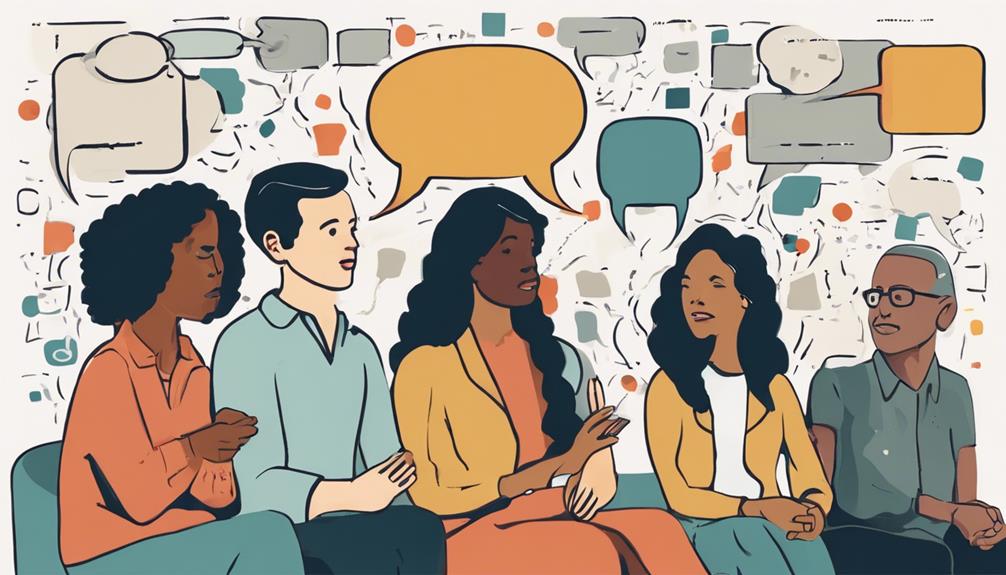
Recall Techniques for Retention

- Chunking Techniques : Breaking down complex information into smaller, manageable chunks aids in easier retention.
- Rehearsal Strategies : By repeating information aloud or mentally, memory retention for auditory information is strengthened.
- Mnemonic Devices : Acronyms and visualization techniques assist in remembering and retaining crucial details effectively.
- Active Listening Practices : Summarizing and paraphrasing spoken information actively engages the brain, leading to improved retention of auditory content.
Memory Aids for Learning
Repetition strategies for recall.
- Enhanced Recall: By consistently rehearsing information through repetition, individuals can improve their ability to recall spoken words.
- Neural Strengthening: Repetition aids in strengthening neural connections associated with memory, facilitating better retention and retrieval.
- Improved Communication: Regular practice of repetition techniques can lead to enhanced communication skills and clearer expression.
- Memory Enhancement: Utilizing repetition strategies can help individuals retain and recall information more effectively, boosting overall auditory memory abilities.
Strengthening Recall Abilities
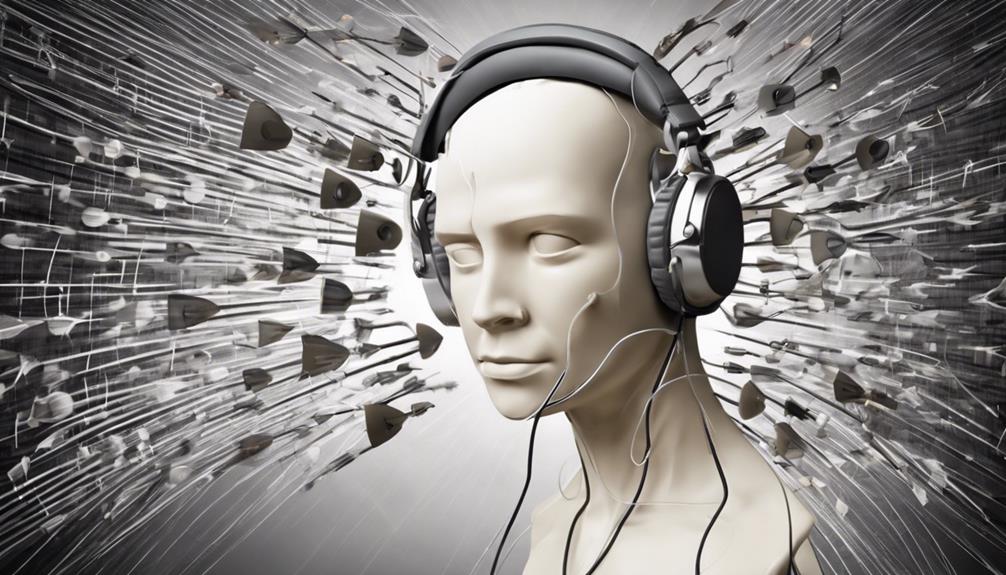
Memory Recall Techniques
- Mnemonic Devices : Engage in creating memory aids like acronyms or rhymes.
- Chunking Information : Break down information into smaller, manageable parts for easier recall.
- Practicing Retrieval : Regularly test yourself on the information you want to remember.
- Consistent Implementation : Make these techniques a habit to see significant improvements in memory recall and communication skills.
Enhancing Memory Skills
Memory improvement strategies.
- Engage in memory exercises regularly to keep the brain sharp and improve recall abilities.
- Use visual aids to supplement auditory information and enhance memory encoding.
- Practice association techniques to link new information with existing knowledge for better retention.
- Explore multisensory approaches that involve multiple senses to reinforce memory pathways and boost recall effectiveness.
Boosting Communication Proficiency
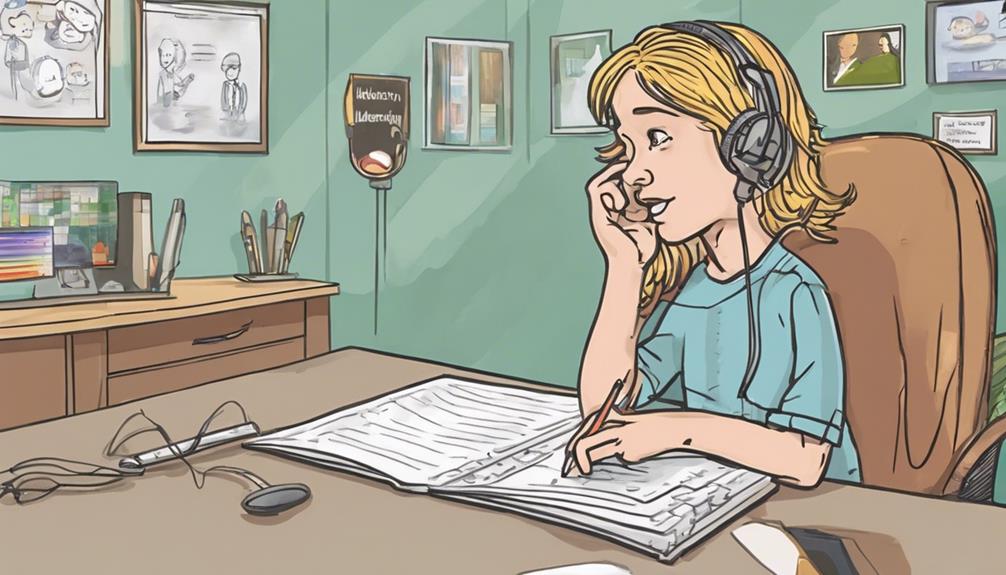
Enhancing Auditory Comprehension
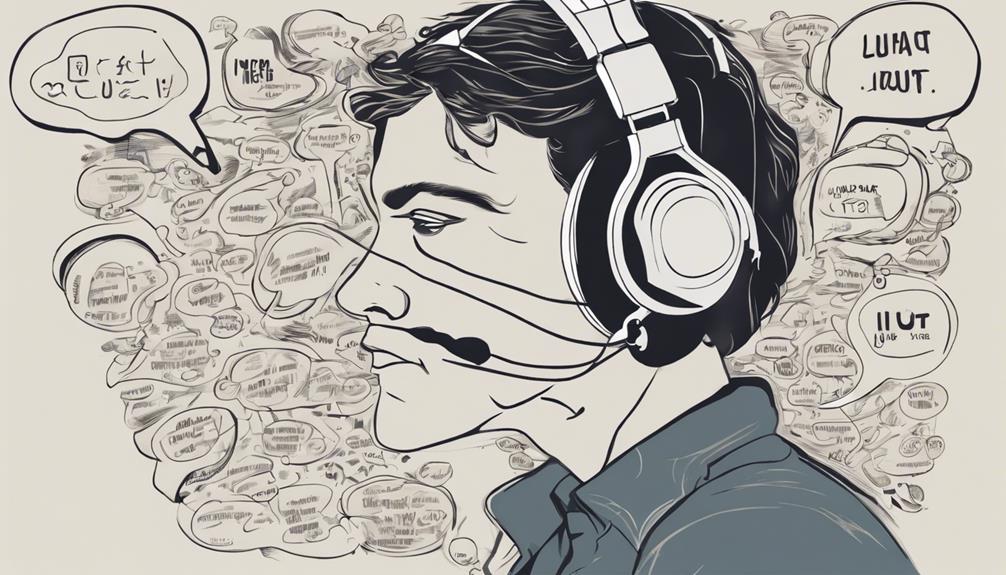
- Increased Confidence : As auditory comprehension improves, individuals may feel more confident in social situations where listening and understanding spoken language is crucial.
- Enhanced Relationships : Better auditory comprehension can lead to improved relationships with friends, family, and colleagues by reducing misunderstandings and enhancing communication.
- Improved Academic Performance : Strong auditory comprehension skills are vital for educational success, as they aid in following lectures, understanding instructions, and retaining information.
- Boosted Independence : Individuals with enhanced auditory comprehension skills may experience increased independence in daily tasks, such as following directions, engaging in conversations, and participating in group activities.
Developing Memory Strategies

Improving Verbal Processing
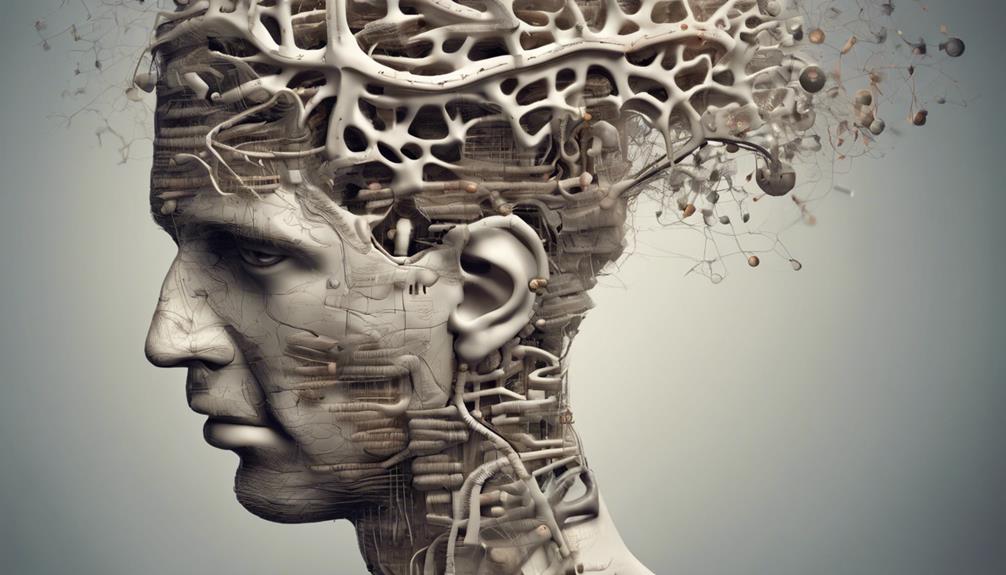
- Utilize Multisensory Techniques : Engage multiple senses like hearing, seeing, and touching to reinforce verbal information, making it easier to remember and process.
- Implement Structured Practice Sessions : Regular practice sessions with a structured format can help strengthen auditory memory skills and improve verbal processing abilities over time.
- Encourage Active Listening : Actively engaging with spoken information by asking questions, summarizing content, or paraphrasing can boost auditory memory and enhance comprehension.
- Incorporate Visual Aids : Visual cues such as charts, diagrams, or written notes can complement auditory information, aiding in better retention and processing of verbal content.
Enhancing Speech Clarity

Boosting Conversation Recall

- Practice Active Listening : Engage fully in conversations by concentrating on the speaker, making eye contact, and asking clarifying questions. Active listening helps imprint information in memory for easier recall later.
- Utilize Mnemonic Devices : Create mnemonic devices or mental associations to link new information to existing knowledge. This technique aids in retaining spoken details and recalling them when needed.
- Repetition and Summarization : Repeat key points during a conversation and summarize them afterward. This reinforces memory retention and aids in recalling important aspects of the discussion.
- Visualize Information : Create mental images or visual representations of what's being said. Visual cues can enhance memory recall and make it easier to remember conversations accurately.
Strengthening Communication Effectiveness

Communication Strategies for Clarity
- Visual Aids : Incorporate visual cues to reinforce key points and support auditory memory.
- Active Listening : Encourage active listening techniques like summarizing and asking clarifying questions to enhance comprehension.
- Repetition and Rehearsal : Practice repeating important information to strengthen auditory memory skills.
- Mnemonic Devices : Utilize memory techniques to aid in remembering crucial details during conversations.
Memory Exercises for Recall
Practice for fluency.
- Enhanced confidence in social interactions.
- Improved clarity in expressing ideas.
- Better engagement in public speaking.
- Increased effectiveness in conveying thoughts.
Frequently Asked Questions
What are the iep goals for auditory memory?, what are the memory strategies goal for speech therapy?, what is a smart goal for auditory comprehension?, how can auditory memory be used to improve effective oral instruction?.

Jamie is one of the creative forces behind the words that resonate with our audience at Deaf Vibes. With a passion for storytelling and advocacy, Jamie delves into topics that matter deeply to the deaf and hard-of-hearing community. Jamie’s articles are crafted with empathy, insight, and a commitment to positive change, from exploring the latest advancements in hearing technologies to shedding light on the everyday challenges and victories of those within the community. Jamie believes in the power of shared stories to inspire action, foster understanding, and create a more inclusive world for everyone.
7 Free Speech Therapy Programs You Should Know About
What Can Auditory Sensitivity Occupational Therapy Offer for Sensory Challenges?

You may like
What are the benefits of outpatient speech therapy?.
Peek into the world of outpatient speech therapy and discover the personalized advantages that could revolutionize your communication skills.
- Convenient locations save time and effort, reducing travel costs and promoting consistent attendance.
- Customized therapy programs cater to unique needs, ensuring effective outcomes and optimal benefits.
- Enhanced patient engagement in familiar environments lowers anxiety levels, fostering trust and progress.
- Collaborative care plans ensure sustained progress, empowering families for long-term success in outpatient speech therapy.
Convenient Location for Therapy Sessions

Individualized Treatment Plans

Customized Therapy Programs
Personalized intervention techniques.
- Conducting comprehensive evaluations to identify areas of difficulty.
- Customizing intervention techniques to target specific communication skills like articulation and language.
- Focusing on improving fluency and voice modulation through tailored strategies.
- Maximizing therapy sessions by addressing each client's unique needs.
- Providing specialized care to optimize results and enhance communication abilities.
Flexibility in Scheduling Appointments
Continuity of Care

- Regular Assessment: Through ongoing therapy sessions, adjustments to treatment plans can be made promptly.
- Structured Approach: Outpatient speech therapy provides a framework for achieving therapy goals and addressing new communication challenges.
- Family Involvement: Involving family members fosters a comprehensive approach to enhancing communication skills and establishing a strong support system.
- Convenience: The ease of scheduling outpatient appointments aids in the long-term management of speech disorders, ensuring sustained progress.
- Holistic Progress: Continuity of care allows for a holistic view of the individual's journey, promoting steady improvement in communication abilities.
Access to Specialized Therapists

Comfortable and Familiar Environment

Home-Based Therapy Benefits
- Comfortable Environment : Patients can receive treatment in a familiar setting.
- Convenience : Eliminates the need for traveling to a clinic.
- Family Involvement : Family members can participate in therapy sessions, enhancing outcomes.
- Personalized Care : Tailored treatment plans lead to improved communication skills.
- Reduced Stress : Being in a familiar environment can lower anxiety levels during therapy.
Enhanced Patient Engagement
Enhanced focus on communication skills.

- Individualized Approach: Therapy sessions are customized to meet the specific communication needs of each person.
- Family Involvement: Involving family members in therapy sessions can enhance progress and support communication development beyond the therapy room.
- Consistency: Regular therapy sessions in outpatient settings lead to faster improvements and better outcomes in communication skills.
- Real-Life Application: Skills learned in therapy are directly applicable to daily life situations, promoting functional communication.
- Specialized Care: Outpatient speech therapy offers specialized attention to effectively address speech and language challenges, ensuring comprehensive support and progress.
Greater Privacy and Confidentiality

Reduced Travel Time and Costs

Time-Saving Therapy Sessions
- Flexible scheduling : Easily fit therapy sessions into your busy schedule.
- Specialized care : Receive tailored treatment without extended hospital stays.
- Family involvement : Encouraged participation creates a supportive environment.
- Consistent progress : Regular sessions lead to faster improvement in communication skills.
- Convenient location : Access therapy closer to home, saving time and money on travel.
Cost-Effective Treatment Options
Family involvement in therapy.

- Support and Encouragement: Family members can provide emotional support and encouragement, creating a positive environment for the individual undergoing therapy.
- Understanding Communication Goals: Involving family members helps in understanding the communication goals set during therapy, ensuring everyone is on the same page.
- Promoting Carryover: Family participation promotes the application of learned skills into daily interactions, reinforcing the benefits of therapy.
- Holistic Approach: Collaboration with family allows for a holistic approach to therapy, addressing communication challenges in various settings.
- Encouraging Practice: Family involvement fosters a supportive environment that encourages practice, communication, and skill development beyond therapy sessions.

Integration of Therapy Into Daily Life

Improved Long-Term Outcomes
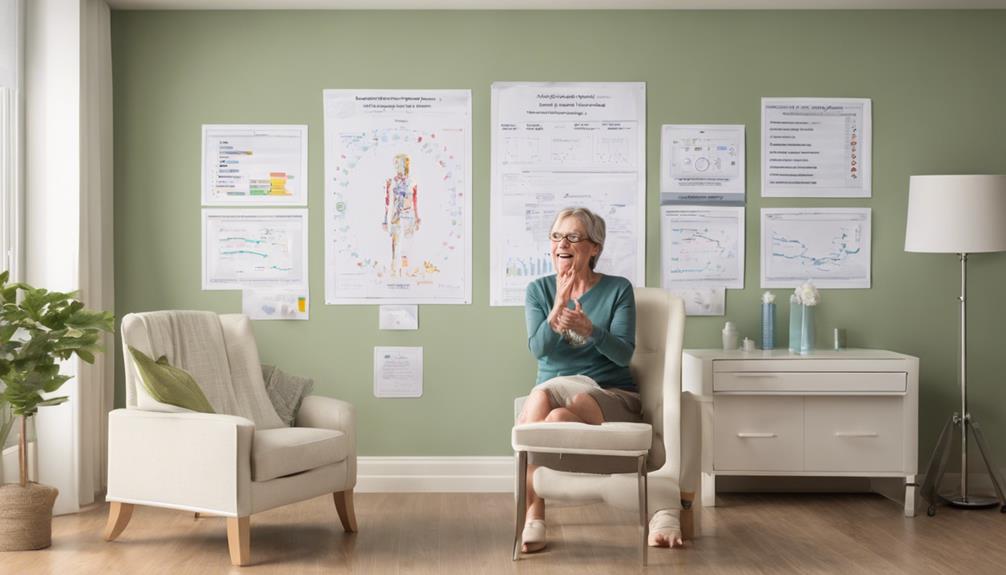
- Sustained progress over time
- Enhanced communication skills
- Greater confidence in social settings
- Improved quality of life
- Better relationships and overall well-being
Collaborative Approach to Treatment

Team-Based Therapy Plans
- Speech therapists work closely with interdisciplinary teams to create individualized treatment plans.
- Multidisciplinary collaboration tailors treatment to each patient's unique communication challenges.
- Team-based therapy plans promote continuity of care and information sharing.
- The approach involves coordinated efforts to optimize the patient's progress.
- Collaborative efforts help ensure the patient's success in outpatient speech therapy.
Patient and Family Involvement
Cost-effective therapy options.
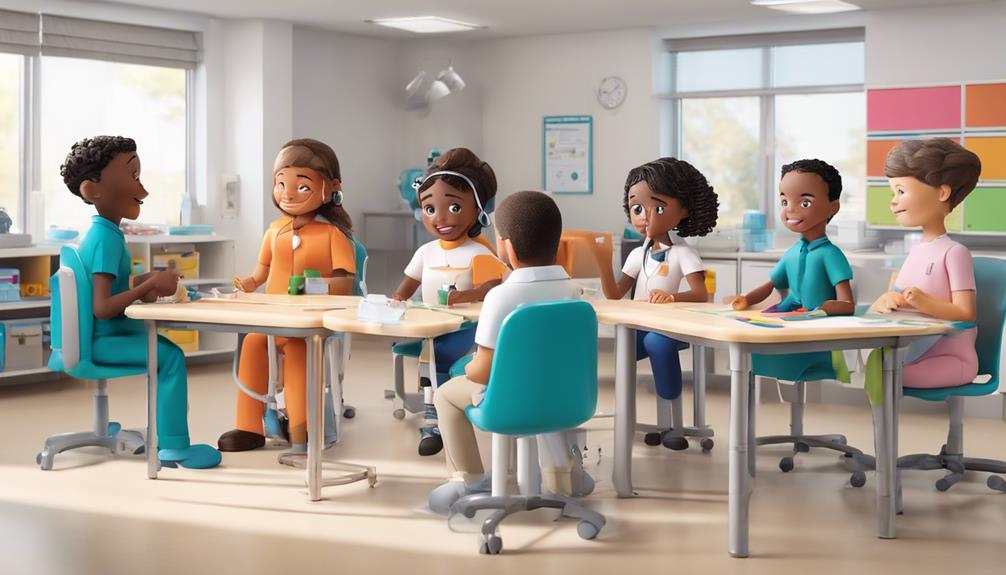
- Affordable Treatment : Outpatient speech therapy is often more affordable than inpatient or residential programs.
- Comprehensive Insurance Coverage : Many insurance plans offer extensive coverage for outpatient therapy, reducing financial burdens on patients.
- Tailored Treatment Plans : Patients receive personalized care without the higher costs associated with inpatient therapy.
- Consistent Care : Cost-effective outpatient options enable individuals to access regular therapy sessions without prolonged hospital stays.
- Reduced Healthcare Costs : By providing specialized care on an outpatient basis, overall healthcare expenses can be minimized, benefiting both patients and healthcare systems.
Support Network for Patients and Families
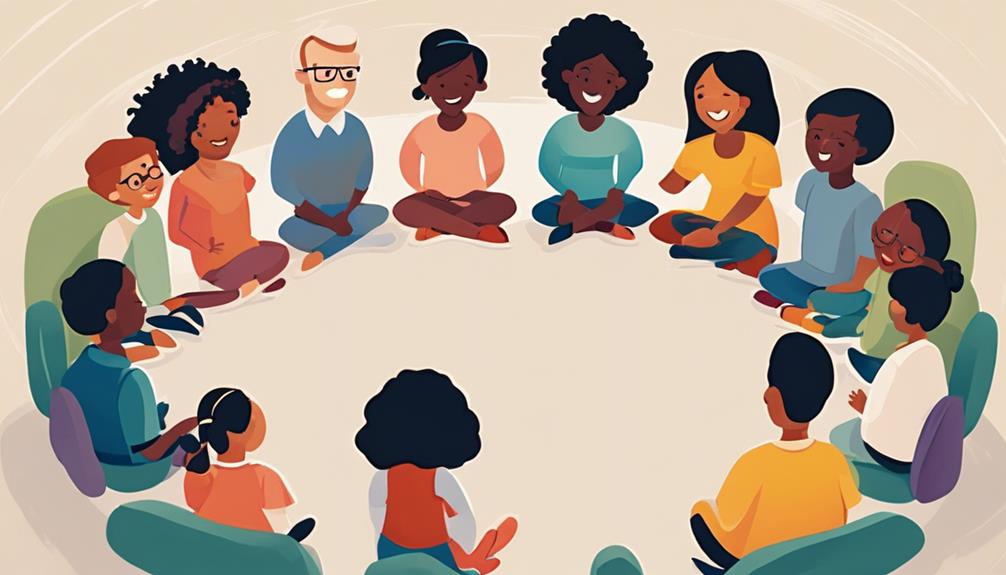
What Is the Role of an SLP in an Outpatient Setting?
What are the benefits of pull out speech therapy?, what are the benefits of speech therapy?, what are the benefits of telehealth speech therapy?.

Alex leads our content strategy and ensures that all information presented is accurate, insightful, and empowering. With a keen eye for detail and a deep understanding of the community’s needs, Alex guides the team in creating meaningful content that educates, inspires, and connects.
Exploring Listening Therapy for Auditory Processing Challenges
Marvel at the transformative effects of listening therapy on auditory processing challenges and discover the potential it holds for revolutionizing support methods.
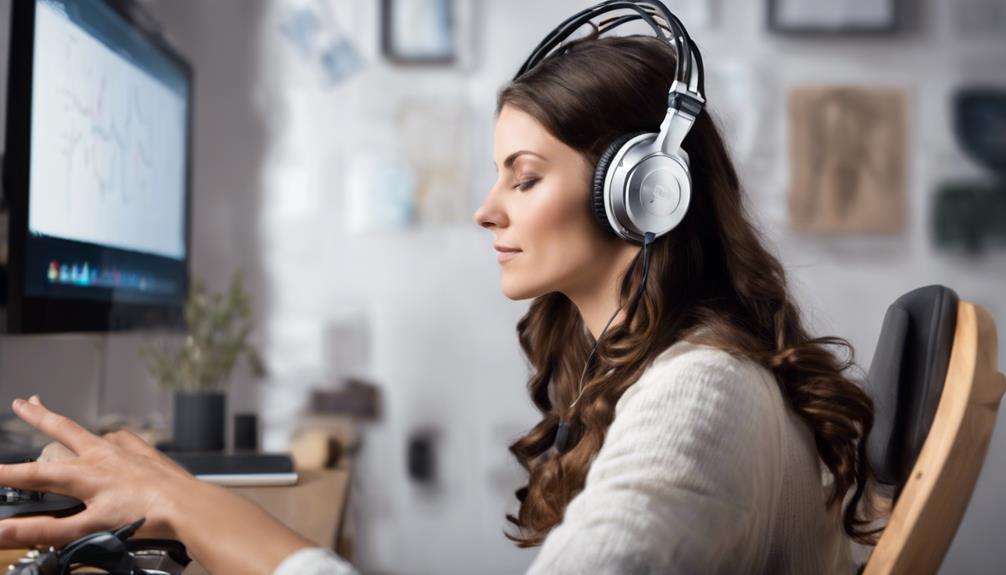
- Listening therapy like The Listening Program addresses auditory processing challenges effectively.
- Daily sessions with acoustically modified music yield notable improvements in auditory skills.
- Early intervention with listening therapy enhances academic performance and social interactions.
- Research-backed efficacy supports the benefits of listening therapy in improving auditory processing.
Understanding Auditory Processing Challenges
Benefits of Listening Therapy

How Listening Therapy Works
Types of Listening Therapy Programs

Program Approaches
- The Listening Program (TLP): Utilizes acoustically modified music for auditory processing support.
- Specialized Headphones: Utilized in TLP for bone conduction and air conduction music training.
- Settings: TLP can be implemented in clinics, schools, and homes for convenience.
- Research Findings: Show significant improvements in auditory processing post TLP training in individuals aged 5-50.
Efficacy and Benefits
Effectiveness of listening therapy.

- Listening therapy, such as TLP, involves daily sessions of modified music to enhance auditory processing abilities.
- Research has shown significant improvements in auditory processing skills in individuals aged 5-50 after completing listening therapy programs like TLP.
- The effectiveness of listening therapy extends beyond enhancing auditory processing skills to improving communication, social interaction, and emotional functioning.
- Utilizing specialized headphones for bone and air conduction music training, listening therapy is widely used in various settings for individuals with auditory processing challenges.
Incorporating Listening Therapy Into Treatment
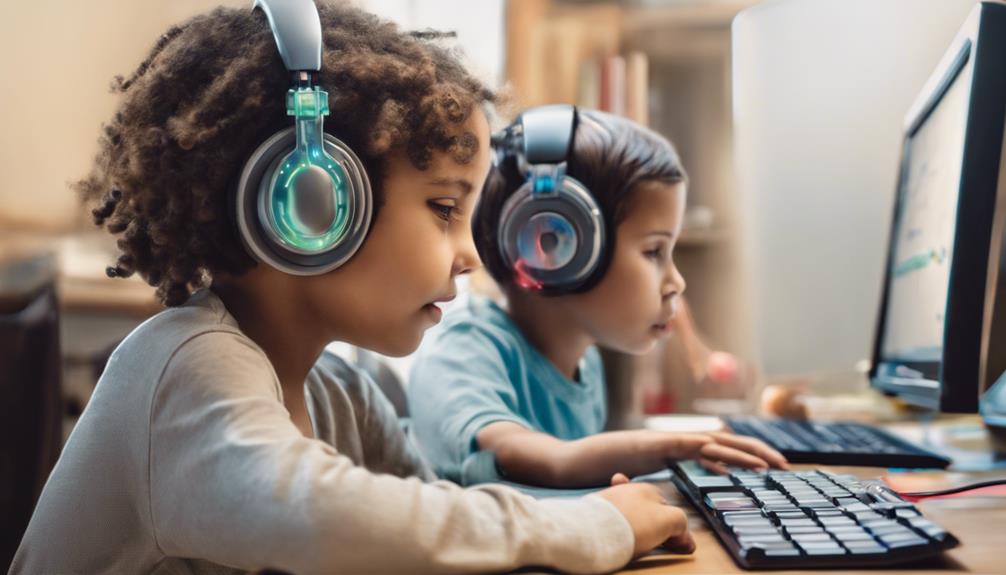
Therapy Techniques
- Acoustically Modified Music: Tailored music is used to stimulate auditory pathways.
- Specialized Headphones: These facilitate bone conduction and air conduction music training.
- The Listening Program (TLP): Daily sessions support executive function, communication, and auditory processing.
- Research Findings: Studies show significant improvements in auditory processing abilities post-TLP training.
Patient Progress
Personalized approaches to listening therapy.

- Sound Distinction Exercises : Activities aimed at improving the ability to differentiate between similar sounds, enhancing phonological skills crucial for language development.
- Memory Enhancement Techniques : Techniques to boost auditory memory, helping individuals better retain and recall auditory information.
- Sequencing Tasks : Exercises focusing on the order of sounds or words, aiding in the comprehension of spoken language and improving sequencing abilities.
- Environmental Modifications : Adjustments to the listening environment to reduce auditory distractions and enhance focus during therapy sessions.
Enhancing Communication Skills Through Listening Therapy

Future Trends in Listening Therapy

- Technology Integration : Advancements in technology, such as virtual reality and interactive tools, are revolutionizing the field of listening therapy, enhancing the overall treatment effectiveness.
- Neuroplasticity Research : Ongoing research into the neuroplasticity of the brain in response to listening therapy is paving the way for novel interventions that leverage the brain's ability to reorganize and adapt, leading to improved outcomes.
- Interdisciplinary Collaboration : Collaborations between professionals in audiology, speech-language pathology, and neuroscience are driving the development of cutting-edge listening therapy techniques that are comprehensive and evidence-based.
- Holistic Approaches : The integration of holistic approaches, including mindfulness and sensory-based interventions, is emerging as a promising trend in enhancing the effectiveness of listening therapy for auditory processing challenges.
How Do You Fix Auditory Processing Issues?
What are the coping skills for auditory processing disorder?, what tools help auditory processing disorder?, what are the 4 types of auditory processing disorder?.
- Auditory discrimination involves difficulty distinguishing similar sounds.
- Figure-ground discrimination is the struggle to pick out important sounds in noise.
- Memory challenges impact information recall.
- Sequencing difficulty involves understanding sound or word order.
How Does Listening Therapy Help with Auditory Processing Challenges?

Enhancing Listening Skills: Auditory Verbal Therapy Activities
Amplify your auditory abilities with engaging therapy activities designed to elevate your listening skills—discover the transformative impact awaiting you!

- Auditory Verbal Therapy (AVT) enhances listening skills for improved communication.
- Activities in AVT target auditory processing skills crucial for language development.
- Integrating AVT into daily routines boosts natural language acquisition.
- Monitoring progress in AVT shows increased speech clarity and communication proficiency.
Importance of Listening Skills
Understanding auditory verbal therapy.

Key Benefits of AVT Activities
Targeting Auditory Processing Skills

Incorporating AVT Into Daily Routine
Daily AVT Integration
Practical routine applications.
- Mealtime : Engage in conversation during meals to encourage focused listening.
- Playtime : Use auditory games or toys that promote listening and language development.
- Bedtime : Read stories aloud to enhance auditory processing and comprehension skills.
- Daily Interactions : Encourage active listening during daily interactions to reinforce AVT principles.
Engaging Activities for Auditory Attention

Enhancing Speech Recognition Abilities

- Speech Sound Discrimination: Engage in activities that help distinguish between similar speech sounds to improve accuracy in recognizing words and phrases.
- Accent and Speech Pattern Recognition: Practice listening to various accents and speech patterns to enhance the ability to understand different speakers more effectively.
- Contextual Listening: Work on understanding language in different contexts to improve comprehension and interpret spoken language accurately.
- Repetition and Reinforcement: Consistent practice of auditory verbal therapy activities is key to reinforcing speech recognition skills and achieving long-term improvements in listening abilities.
Strategies for Auditory Memory Improvement
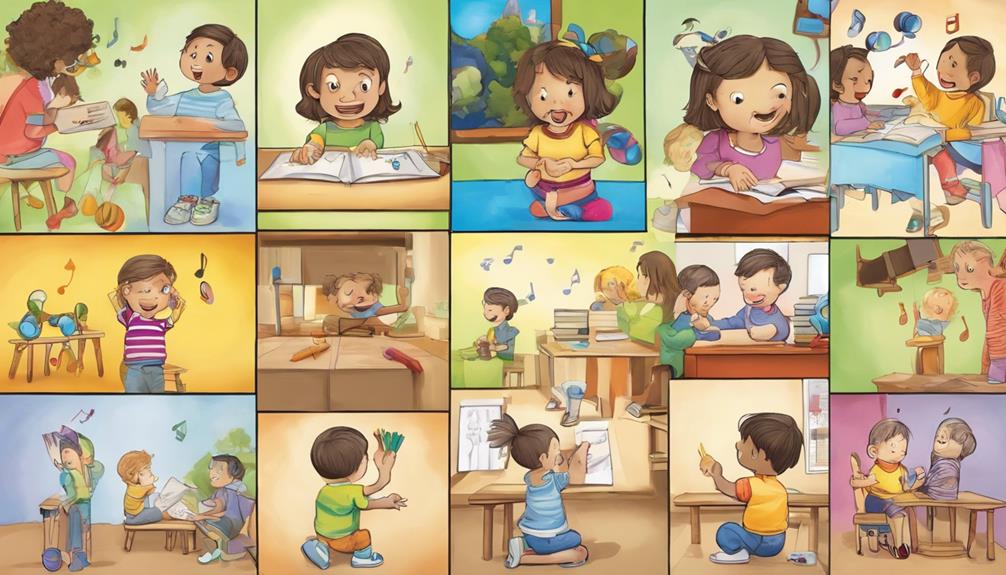
- Acronyms and Visualization: Creating acronyms or vivid mental images related to the information being learned can aid in better retention.
- Repetition and Active Listening: Repeating information and actively engaging in conversations to reinforce the details can strengthen auditory memory skills.
- Memory Games and Exercises: Engaging in activities like word association games or retelling stories can improve auditory memory retention.
- Active Listening Practices: Summarizing what's heard, taking notes, and using auditory cues to reinforce information help boost auditory memory capabilities.
Mnemonic Devices
Techniques for auditory learners.

- Utilize Audio Resources : Incorporate podcasts, audiobooks, and educational recordings to provide auditory learners with rich auditory stimuli that reinforce learning concepts effectively.
- Engage in Group Discussions : Encourage group discussions and debates to promote active participation and enhance listening skills through dialogue and conversation.
- Repeat and Recap : Emphasize the importance of repeating and summarizing key points to reinforce learning and help auditory learners retain information through auditory repetition.
- Provide Oral Instructions : Give clear, concise oral instructions for tasks and assignments, allowing auditory learners to process information effectively through listening and verbal communication.
Maximizing Listening Skills Through Play

Play-Based Learning Benefits
- Improved Attention : Playful activities capture children's focus, leading to increased attention to auditory stimuli.
- Enhanced Memory : Through engaging in play, children are more likely to remember auditory information and instructions.
- Better Comprehension : Play-based learning helps children understand and interpret verbal communication more effectively.
- Natural Skill Development : Activities like pretend play and interactive games provide a natural setting for children to practice listening, following directions, and understanding verbal cues.
Interactive Listening Games
Fun sensory sound activities.
- Utilize music: Introducing different genres and rhythms can help children distinguish between various auditory stimuli.
- Explore nature sounds: Incorporating sounds from nature like birds chirping or waves crashing can enhance listening skills in a calming environment.
- Integrate tactile materials: Using textured items while playing sound games can stimulate multiple senses simultaneously.
- Encourage movement: Pairing auditory stimuli with physical movements can improve focus and concentration during listening tasks.
Effective Auditory Training Games

Monitoring Progress in AVT
- Auditory Skills Assessment : Regular evaluations of auditory skills help determine improvements in sound discrimination, auditory memory, and auditory processing abilities.
- Speech Production Monitoring : Tracking speech production development aids in assessing articulation, phonation, fluency, and voice modulation progress.
- Language Comprehension Evaluation : Assessing language comprehension skills involves measuring vocabulary acquisition, grammatical understanding, and semantic knowledge.
- Communication Proficiency Observations : Monitoring communication proficiency includes assessing conversational abilities, social interaction skills, and pragmatic language use.
Success Stories in Auditory Verbal Therapy

What Are the Activities for Auditory Learners?
What are the exercises for auditory processing?, what are the activities to develop auditory memory?, what is auditory verbal therapy technique?, what are some effective auditory verbal therapy activities for enhancing listening skills.

The content provided is for entertainment and informational purposes only and should not be considered a substitute for professional legal, medical, or mental health advice, diagnosis, or treatment. It is not a replacement for a formal consultation with a qualified legal, medical, or mental health professional. If you have any legal concerns, medical issues, or mental health questions, please seek the advice of a licensed attorney, healthcare provider, or mental health provider respectively. Never disregard professional legal, medical, or mental health advice or delay in seeking it because of something you have read or seen in this content. Additionally, for specific legal issues, always consult with an attorney licensed to practice law in your jurisdiction.

Exciting Deaf Events Near Me in 2022

What Is Open Sign Language and How Does It Differ From Traditional Sign Language?

15 Best Hearing Aids for Musicians – Enhance Your Musical Experience Now

How to Stop Hearing Whistling: What to Do to Keep Quiet

Exciting Deaf Events Near Me in 2024

10 Auditory Processing Goals for Effective Speech Therapy

Mastering the Art of Signing Letters in Sign Language

Medical Sign Language PDF: A Comprehensive How-To Guide

5 Auditory Comprehension Goals for Speech Therapy Success

VA Disability Qualification for Hearing Loss

VA Disability Rating for Tinnitus Explained

National Technical Institute for the Deaf Overview

Top Deaf Schools in NYC – Education & Support

Top Deaf Schools in Minnesota – Learn More Here
Affiliate disclaimer.
As an affiliate, we may earn a commission from qualifying purchases. We get commissions for purchases made through links on this website from Amazon and other third parties.

VA Hearing Loss Rating Chart: Understanding Disability Compensation

15 Best Oticon Hearing Aids to Improve Your Hearing in 2024

VA's Rating System for Tinnitus and Hearing Loss Explained

Understanding Bilateral Hearing Loss VA Rating Criteria

Sign Language Emoji Translator: How to Communicate With Gestures

10 Deaf-Friendly Dating Sites to Find Your Perfect Match

An SLP writes about swallowing, communication, and cognition
- Browse by topic
- Eat (swallowing)
- Speak (communication)
Think (cognition)
- Being an SLP
- Continuing Education
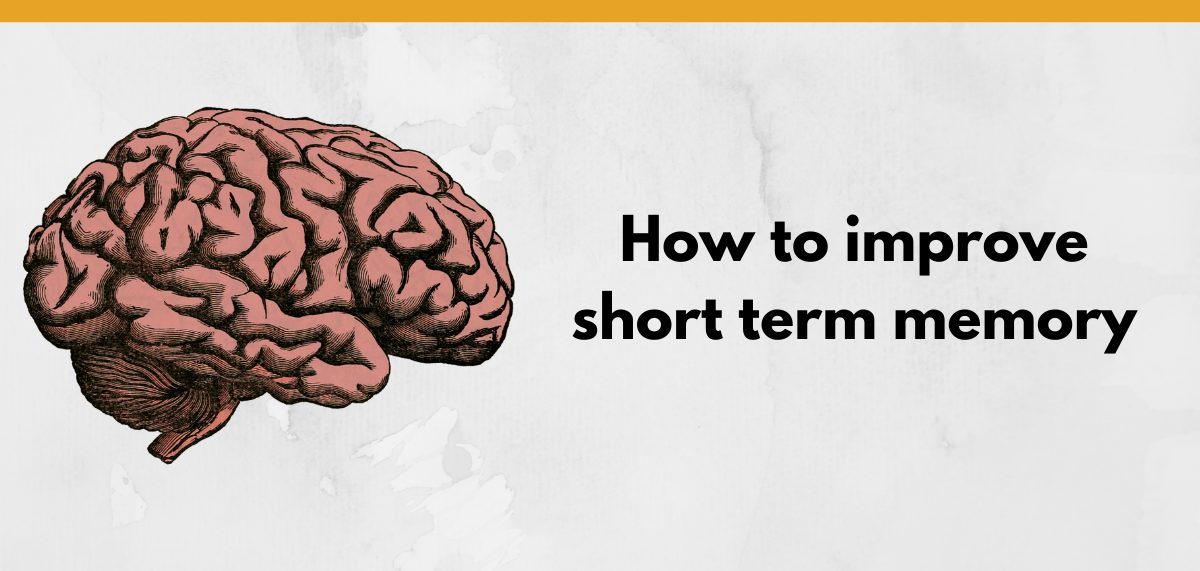
How to improve short term memory
One of the most common questions I get is “How do I improve my short term memory?” By “short term memory”, they mean remembering things over the course of a short period of time, such as over a day, week or month.
Short term memory problems are pretty common, based on my caseload. Even the spouses of my patients complain that they’re forgetful. It’s not surprising, since so many things can affect short term memory, including stress. The good news is that, in many cases, it’s possible to improve short term memory.
Free DIRECT download: WRAP memory strategies (patient handout). ( Email subscribers get free access to all the resources in the Free Subscription Library .)
- Practice what you want to improve .
- Deciding what to practice .
- Make it stick in your memory: WRAP IT UP .
- Important information .
- Recalling past events .
- Remembering to do things .
- Listening and remembering .
Reading and remembering
- Keys, phone, glasses, and other important things .
- Tasks and activities .
- Printables .
- Online exercises, games, and activities .
- What are your go-to short term memory exercises ?
- Related Eat, Speak, & Think posts .
- References .
Practice what you want to improve
Many people enjoy memory games or other brain-training games, since they’re fun and often addictive. We’d like to think that they actually improve our attention, memory, and other cognitive skills for our day-to-day activities. But unfortunately, there is little objective research to back this up.
For example, the Simons et al (2016) review of the brain-training literature finds strong evidence that brain-training improves performance on the trained tasks, and less evidence that it improves performance on closely-related tasks. They find that there is not much evidence that doing brain-training exercises improves performance on day-to-day tasks.
Instead of playing games, research suggests that we should practice doing the thing we want to improve.
This means that if you want to improve your ability to remember people’s names, then you should practice remembering people’s names.
Or if you want to remember how to use the remote control, practice using it.
Depending on what you want to improve, you may get some benefit from brain-training games. Just make sure it’s challenging and related in some way to WHY you want to improve your memory.
return to top
Deciding what to practice
Short term memory plays a role in just about everything we do. The key is to think of the situations that are bothersome or embarrassing when your short term memory lets you down.
For instance, I hate to forget someone’s name, but I couldn’t care less if I remember what I ate for dinner last Tuesday. So I practice remembering people’s names, and I don’t bother trying to remember past meals.
On the other hand, I had a patient who REALLY wanted to remember what she had to eat over the past 24 hours, because different family members would ask her about it, just as a general topic of conversation. Since it was important to her, that’s what we worked on.
Make it stick in your memory: WRAP it up.
McCabe et al (2016) tells us that improving memory takes effort. The first rule is to pay attention. If you don’t notice something now, you’re not likely to remember it later. If you try any of these WRAP memory strategies , you’ll automatically be paying attention.
- Write it down.
- Associate it.
- Picture it.
Writing something down once may be enough for it to stick in your memory, especially if you combine it with the other three tips. Say it aloud as you write it, try to connect it with something you already know, and imagine it.
Repetition is very helpful for remembering things. You can repeat something several times in row, especially to make sure you’re remembering correctly. But then it’s helpful to space it out. Do something else for a bit, then try to remember the thing you are practicing. This is called spaced retrieval. You can do it informally, like I describe here, or you can be more systematic with an app like Anki . If the memory problem is more serious, try a system like spaced retrieval with errorless learning .
Association is a powerful memory tool . It’s basically linking the thing you want to remember to something you already know. It’s best if the learner comes up with their own association, but it also works if another person helps them out. If an association doesn’t immediately come to mind, try to think of a funny, strange, or outrageous association. This will make it stick better in the memory.
“Picture it” means visualization or imagination. I tell my patients to try to put the thing they want to remember into a mental cartoon, movie, or documentary. As with association, making it funny or outrageous will increase the memorability factor.
Examples of what you could practice
Here are some things that my patients have wanted to remember better.
Important information
- Current date and time, or where to look to find the information.
- People’s names and relationships.
- Own address and phone number.
- Birthdays and ages.
- Cities or states where family live.
- Names of politicians or actors.
- Medication names and reasons for taking them.
- Where to look for information, such as facility activity schedule.
- Facts such as no longer having a driver’s license.
Recalling past events
- Accident, illness, or hospitalization information.
- Details of past events, such as a wedding.
- Events of recent past, such as meals, appointments, activities.
Remembering to do things
- Household chores.
- Going to appointments.
- Attending activities.
- Taking medication.
- Making phone calls.
Listening and remembering
People often have trouble remembering details from conversations they have. Some people are also bothered that they can watch something on TV and not really remember anything.
- Instructions from medical or rehab staff.
- Other interactions with professional staff (ex, bank, electric company, etc).
- Conversations with family or friends.
- The news or on-screen entertainment.
- Audiobooks or radio.
Some of my patients complain that they can’t retain what they read. This may affect daily activities such as reading the newspaper and mail, filling out forms, and paying the bills. It can also affect life participation activities such as reading for pleasure or emailing family and friends.
- Dealing with the mail.
- Written instructions.
- Filling out forms.
- Paying bills.
- Reading the newspaper, books, or magazines.
- Remembering a phone number long enough to dial it.
Keys, phone, glasses, and other important things
You’ve probably heard that having a “home” for important items is helpful, and I can attest to that after working with older adults for years. Muscle memory is a powerful force. If you get into the habit of keeping things in a certain place, it can save a lot of time and aggravation.
The problem arises in establishing that habit once short term memory problems have started. What I’ve found helpful is to use a labeled container kept in a prominent place. For some people we added a bright sticky note where they’d be sure to see it, just a reminder to put the thing in the container.
For instance, place a small bowl on a table inside the front door, with a sign peeking up that says KEYS. The new habit to form is to drop the keys into the bowl as soon as you walk through the door. If you tend to walk by without seeing it, put a bright note on the wall somewhere along the route where you’d quickly notice it. Depending on privacy, you could put a note on the outside of the door so you see it as you walk in. Chances are, after a few days, you won’t need the note anymore.
Tasks and activities
Many people want to improve their memory for procedures. These are some of the tasks and activities that my patients have want to improve their memory for:
- Using the remote control.
- Accessing voice mail.
- Using a phone to make calls, text, or take and send pictures.
- Facebook or other social media sites.
- Using the microwave.
- Remembering the safety rules for using a cane or walker.
- Using a chin tuck consistently so they could avoid thickened liquids.
- Looking at the clock or calendar, rather than repeatedly asking a family member for the information.
Looking for memory exercises online?
There are many, many things you can find online to use to practice memory. Here are just a few.
- UAB cognitive stimulation workbook .
- HappyNeuronPro shares free worksheet packets , each on a different area of cognition.
- Taking Charge After Stroke .
- CommonLit offers free fiction and non-fiction reading material , with questions, from grades 3 to 12.
When you’re looking for an app, try an online search for “best app for X”, where X is what you want to improve. Here are ones that I’ve use over the past year.
- TactusTherapy’s Conversation Therapy and Visual Attention Therapy.
- MakeChange .
- iBrainHD (geared for kids, but my patients don’t mind that.)
- Chain of Thought .
Online exercises, games, and activities
- TalkPath and TalkPath News , by Lingraphica.
- Constant Therapy includes cognitive exercises.
- Honeycomb Speech Therapy offers printables and possible goals for 8 TED talks .
- TED-Ed talks are informative, entertaining, and short.
- MathGames.com . I especially like the money and time games.
- Around Town , interactive lessons for real-life activities from GCFGlobal.
- Eye-Search , “a free reading therapy for patients with hemianopic alexia”.
- Phonak’s The Listening Room , which includes a second for teens and adults.
What are your go-to short term memory exercises?
I love hearing about how other people work on improving short term memory. What do you find helpful?
Related Eat, Speak, & Think posts
- Why I sometimes recommend brain-training games .
- 10 practical cognitive therapy activities .
- Useful tools to help people with cognitive impairment .
- Free multimedia resources for the SLP .
- How to use spaced retrieval with errorless learning to improve memory .
- McCabe, J. A., Redick, T. S., & Engle, R. W. (2016). Brain-Training Pessimism, but Applied-Memory Optimism. Psychological science in the public interest : a journal of the American Psychological Society , 17 (3), 187–191. https://doi.org/10.1177/1529100616664716
- Simons, D. J., Boot, W. R., Charness, N., Gathercole, S. E., Chabris, C. F., Hambrick, D. Z., & Stine-Morrow, E. A. (2016). Do “Brain-Training” Programs Work?. Psychological science in the public interest : a journal of the American Psychological Society , 17 (3), 103–186. https://doi.org/10.1177/1529100616661983
Featured image by holdentrils from pixabay .

Lisa A Young M.A. CCC-SLP
Lisa earned her M.A. in Speech-Language Pathology from the University of Maryland, College Park and her M.A. in Linguistics from the University of California, San Diego.
She participated in research studies with the National Institute on Deafness and other Communication Disorders (NIDCD) and the University of Maryland in the areas of aphasia, Parkinson’s Disease, epilepsy, and fluency disorders.
Lisa has been working as a medical speech-language pathologist since 2008. She has a strong passion for evidence-based assessment and therapy, having earned five ASHA Awards for Professional Participation in Continuing Education.
She launched EatSpeakThink.com in June 2018 to help other clinicians be more successful working in home health, as well as to provide strategies and resources to people living with problems eating, speaking, or thinking.
- Home health SLP survey results may surprise you
- An easy way to write participation-level speech therapy goals
- Learn how Goal Attainment Scaling makes SMART goals better
- Quick guide to self-management training in Parkinson's
I am a speech language pathologist and I do not work in the hospital setting. My mom recently had a bilateral stroke in her occipital lobe and I’m looking for activities to address short term memory loss. She is still in recovery but will be transferred to acute care soon. The current hospital does not have an Slp
Hi Elizabeth, I’m sorry to hear about your mother’s difficulties. I don’t work in the hospital setting, but whenever she is ready to work on short term memory, this is what you may want to try. [DISCLAIMER: This is not medical advice and is for informational purposes only.]
First, figure out what she is forgetting. Then, have her practice remembering that kind of thing. For instance, if she is forgetting information that she hears, then have her practice remembering it. Have her write it down, study it, recall it. If you check out the post above, you’ll find many suggestions. I hope that’s helpful!
I hope that she will have access to an SLP once she is out of the hospital.
[…] How to improve short term memory. […]
Leave a Reply Cancel reply
Your email address will not be published. Required fields are marked *
Your Comment
Your Website URL
This site uses Akismet to reduce spam. Learn how your comment data is processed .

How to Write Cognition Goals for Speech Therapy [with goal bank]
Cognition goals for speech therapy include the areas of attention, memory, problem-solving, executive functions, and using compensatory strategies. Individuals with cognitive-communicative deficits may benefit from speech therapy to address these areas and improve cognitive functioning.
Cognition and Speech Therapy
Individuals with diagnosed cognitive-communicative disorders are usually referred for speech therapy services. These cognitive-communicative disorders may result from a brain injury or acquired neurological disease. Often, individuals with cognitive-communicative disorders receive speech therapy because they have communication difficulties, which impact their ability to participate in day-to-day activities that they once were able to. These may include social interactions, job duties, or academics.
Areas of cognitive-communicative challenges may include:
- Executive functions
- Problem-solving
- Language (often related to semantics and pragmatics)
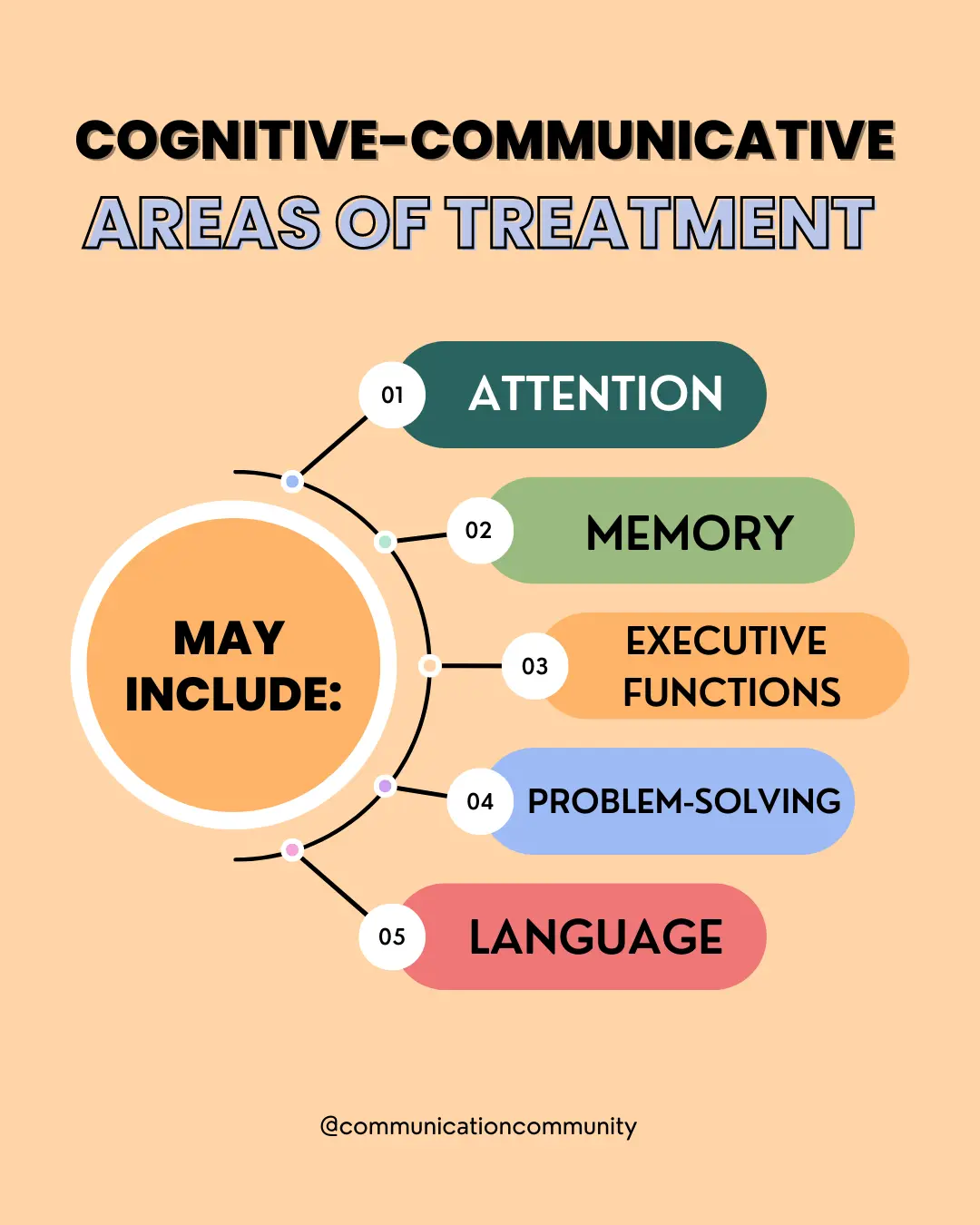
How to Write Cognition Goals
If you haven’t already, check out our article that outlines How to Write Speech Therapy Goals.
For the purpose of this article, we will discuss the process of goal writing for individuals receiving speech therapy for cognitive-communicative challenges.
The first step to writing goals is identifying the area(s) of need . These needs may be identified through formal and informal assessments, observations, and interviews. For example, a formal assessment to test cognitive-communicative function may include the RBANS , and an informal assessment may include a questionnaire about how the individual’s memory and attention skills may be impacting their life.
Getting a detailed case history and asking specific questions about what has been affecting the client and what they want to work on is key! For example, if they want to return to work, goals may be tailored to their job. If they want to live independently, goals may be related to completing activities of daily living (ADLs). For individuals receiving cognitive-communication services, person- and/or family-centered care has shown to be greatly beneficial for personal outcomes and clinical decision-making (like developing goals!).
Once you have identified the area(s) or need, you can begin creating the goals you are going to write and target.
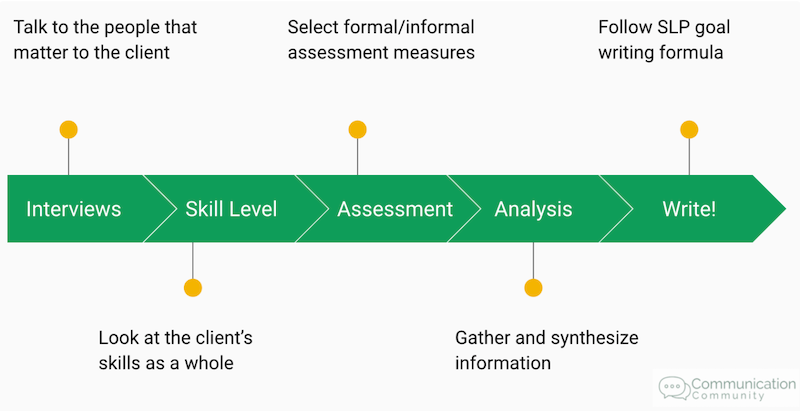
As seen above, speech goals should be written with 3* components in mind: the DO statement , the CONDITION statement , and the CRITERION statement .
*Also commonly included is consistency (we incorporate this!). Aka: does the individual have to meet a specific criterion more than once? A common example of this may include across 3 consecutive sessions . This is usually something understood by the therapy organization/service provider and is sometimes/sometimes not included in the written goal itself. Including consistency statements ensure that the skill has been generalized and provides more reliable data that the skill has been properly mastered.
DO statement
What the client is actually going to DO and the specific skill they will be working towards.
Example: complete divided attention tasks
CONDITION statement
T he specific setting and/or context where your client will work on this skill.
Example: related to their profession
CRITERION statement
How the client’s performance will be measured.
Example: with 85% accuracy
DO + CONDITION + CRITERION
Example: [Client] will complete divided attention tasks, related to their profession, with 85% accuracy.
There you have it! An example using our Goal Writing Formula containing the DO + CONDITION + CRITERION (don’t forget to think about consistency!) for increasing communication skills for services targeting cognitive skill areas.
Cognition Goal Bank
The following are some examples of speech therapy goals that may be targeted in sessions. You can take these goals as is, or take the “do” statement from one, the “condition” from another, and the “criterion” from another. Remember: the best goals are the ones that most closely align with the client’s needs, and all clients are different!
Example #1: [Client] will complete divided attention tasks, related to their profession, with 85% accuracy.
Example #2: [Client] will complete alternating attention tasks, in structured settings, with 90% accuracy, across 2 consecutive sessions.
Example #3: [Client] will complete a sustained attention task, in a quiet environment, for 15 minutes, in 2/3 opportunities.
Example #1: [Client] will use external memory aids to retell daily activities, while communicating with a familiar partner, in 7/10 trials, across 2 out of 3 sessions.
Example #2: [Client] will use internal memory aids to recall the steps of a simple recipe (i.e., 3 to 4 steps), in a natural setting, with 75% accuracy.
Example #3: [Client] will recall at least 4/5 of their daily medications, using learned strategies, for 3 consecutive days.
Executive Functions
Example #1: [Client] will determine 3 tasks to complete each day, related to their occupation, in 90% of opportunities.
Example #2: [Client] will self-monitor their ability to complete activities of daily living (ADLs), using a checklist while at home, with 80% accuracy.
Example #3: [Client] will create a grocery list for a week of meals, in a natural setting, with 80% accuracy, across 3 consecutive weeks.
Problem-Solving
Example #1: [Client] will identify a basic problem and its corresponding solution, related to personal ADLs, in 75% of opportunities.
Example #2: [Client] will identify whether or not they can solve a problem independently, while working on an academic assignment, in 8/10 trials.
Example #3: [Client] will state 2 possible problems, related to a medical issue, in 80% of opportunities.
We hope you found this helpful! Find more goal banks below.
- How to Write Aphasia Goals
- How to Write Executive Functions Goals
- How to Write Self-Determination Goals
- How to Write AAC Goals

Looking for a goal bank that we don’t have? Let us know! You can email us at [email protected] or DM us on Instagram @communicationcommunity.
https://www.asha.org/policy/pp2004-00191/#sec1.3.23
https://www.asha.org/slp/clinical/cognitive-communication/
https://www.asha.org/practice-portal/clinical-topics/aphasia/person-and-family-centered-care/
You might also like
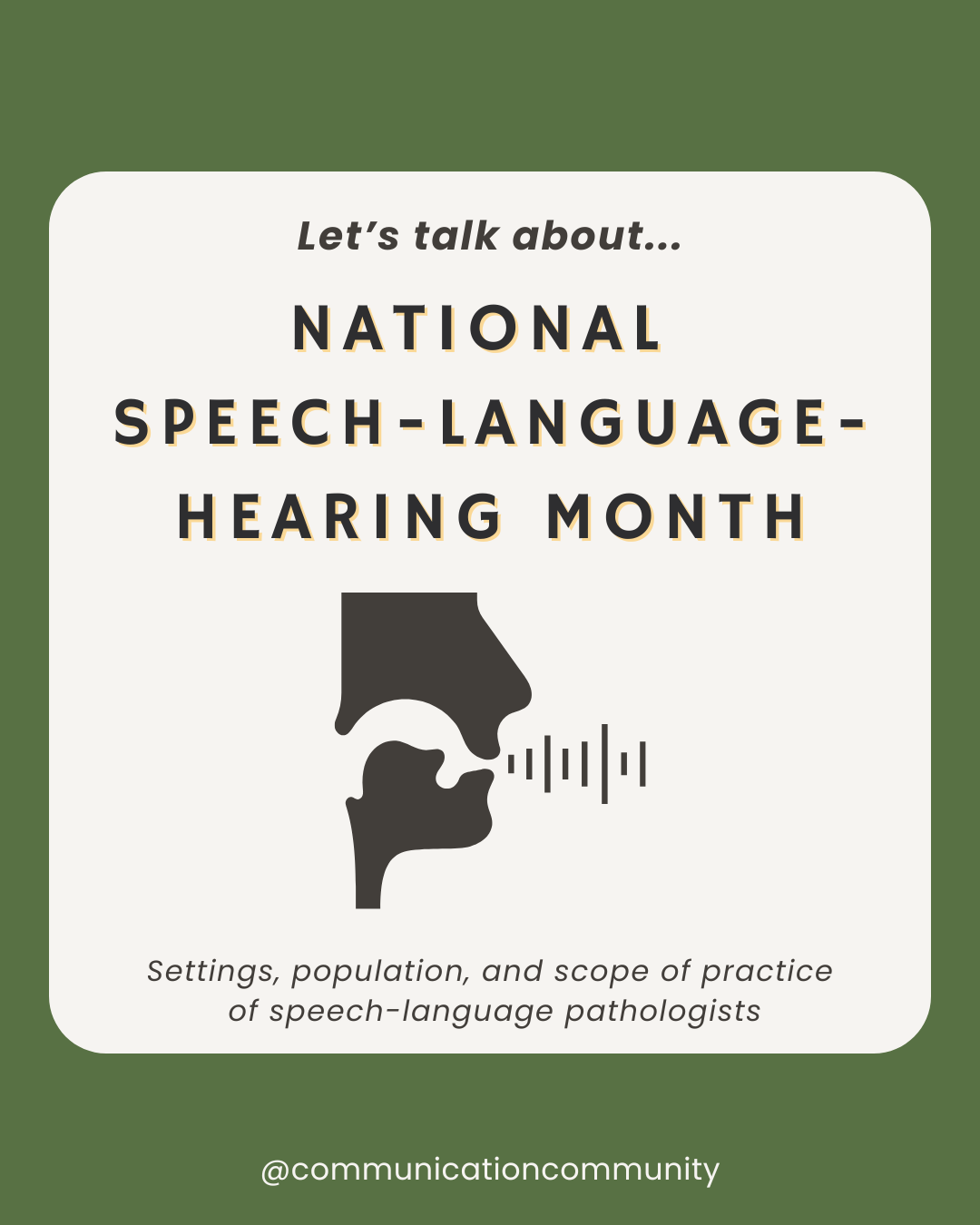
National Speech-Language-Hearing Month | What Does a Speech-Language Pathologist Do?
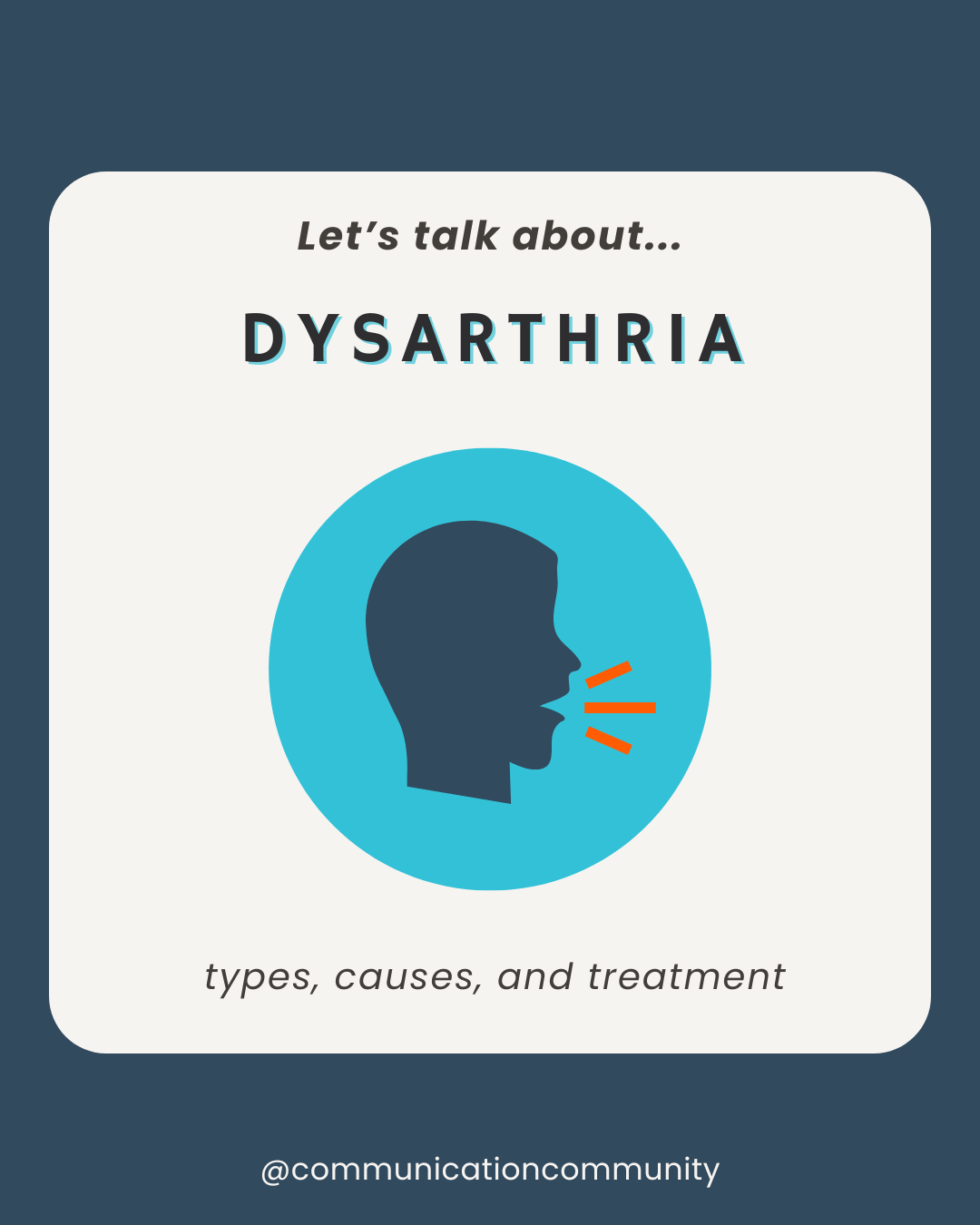
What is Dysarthria? (7 Types, Causes, and Treatment)
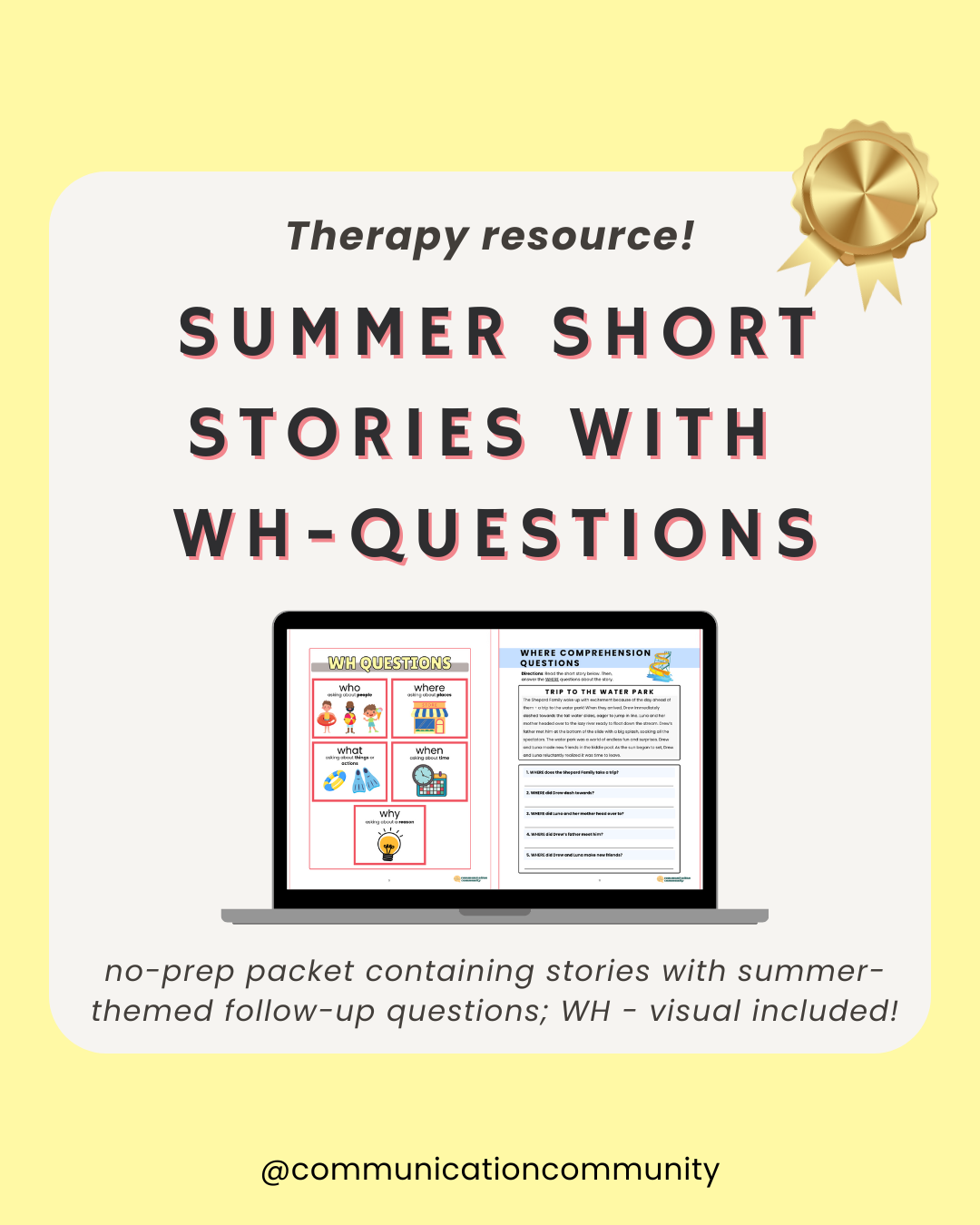
Summer Short Stories with WH Comprehension Questions for ELA/Speech Therapy
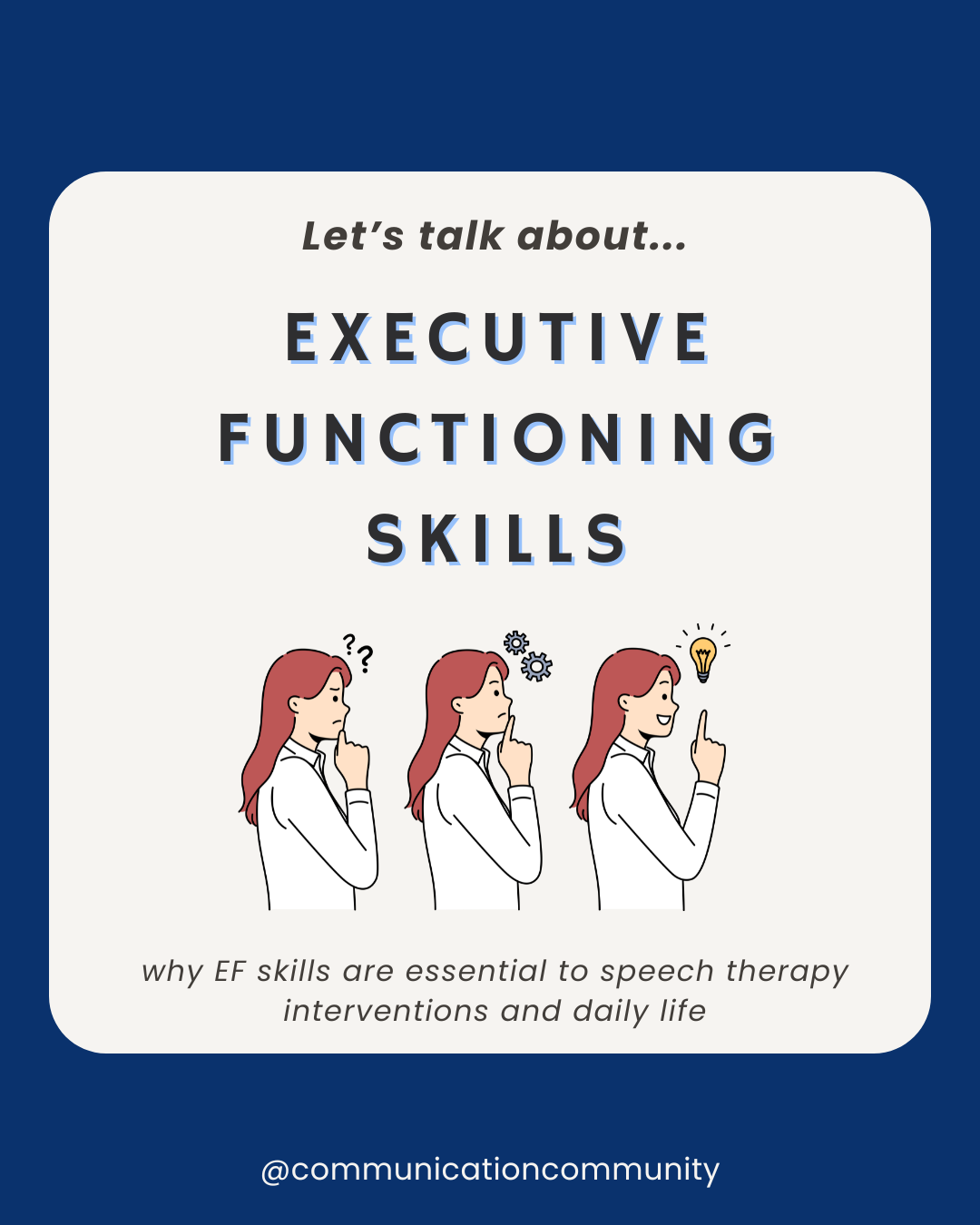
Executive Functioning and Speech Therapy: Why is it Relevant to Treatment and Day-to-Day Life?
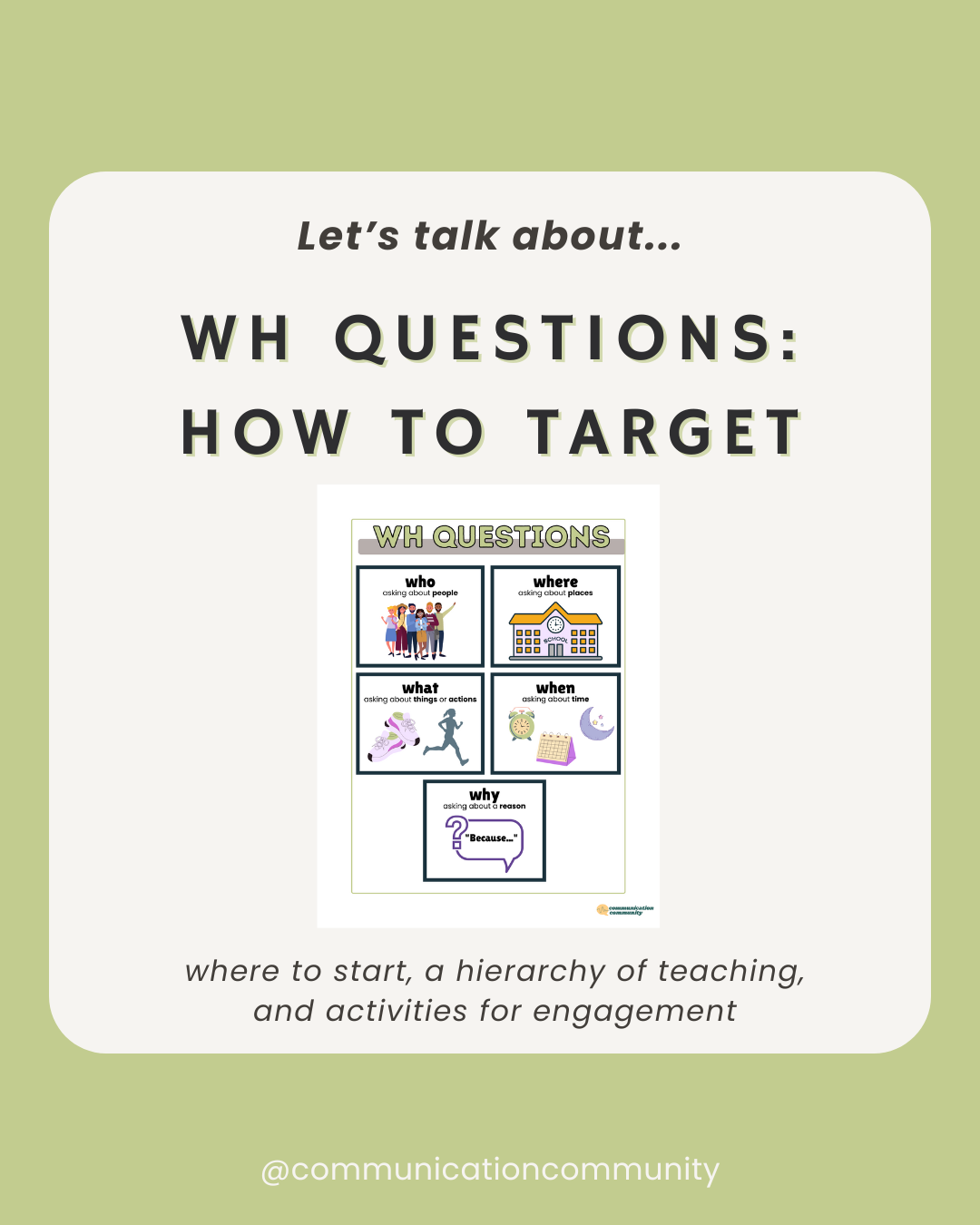
WH Questions for Speech Therapy: How to Target
Subscribe to new posts., subscribe to be notified of new content and support communication community, help keep this site independent..

Thank you for visiting nature.com. You are using a browser version with limited support for CSS. To obtain the best experience, we recommend you use a more up to date browser (or turn off compatibility mode in Internet Explorer). In the meantime, to ensure continued support, we are displaying the site without styles and JavaScript.
- View all journals
- My Account Login
- Explore content
- About the journal
- Publish with us
- Sign up for alerts
- Open access
- Published: 15 May 2024
Volatile working memory representations crystallize with practice
- Arash Bellafard ORCID: orcid.org/0009-0003-1845-5628 1 ,
- Ghazal Namvar 1 ,
- Jonathan C. Kao 2 ,
- Alipasha Vaziri 3 , 4 &
- Peyman Golshani ORCID: orcid.org/0000-0002-5406-7695 1 , 5 , 6 , 7 , 8
Nature ( 2024 ) Cite this article
9243 Accesses
211 Altmetric
Metrics details
- Neural circuits
- Working memory
Working memory, the process through which information is transiently maintained and manipulated over a brief period, is essential for most cognitive functions 1 , 2 , 3 , 4 . However, the mechanisms underlying the generation and evolution of working-memory neuronal representations at the population level over long timescales remain unclear. Here, to identify these mechanisms, we trained head-fixed mice to perform an olfactory delayed-association task in which the mice made decisions depending on the sequential identity of two odours separated by a 5 s delay. Optogenetic inhibition of secondary motor neurons during the late-delay and choice epochs strongly impaired the task performance of the mice. Mesoscopic calcium imaging of large neuronal populations of the secondary motor cortex (M2), retrosplenial cortex (RSA) and primary motor cortex (M1) showed that many late-delay-epoch-selective neurons emerged in M2 as the mice learned the task. Working-memory late-delay decoding accuracy substantially improved in the M2, but not in the M1 or RSA, as the mice became experts. During the early expert phase, working-memory representations during the late-delay epoch drifted across days, while the stimulus and choice representations stabilized. In contrast to single-plane layer 2/3 (L2/3) imaging, simultaneous volumetric calcium imaging of up to 73,307 M2 neurons, which included superficial L5 neurons, also revealed stabilization of late-delay working-memory representations with continued practice. Thus, delay- and choice-related activities that are essential for working-memory performance drift during learning and stabilize only after several days of expert performance.
Similar content being viewed by others
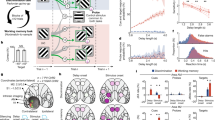
Cortical feedback loops bind distributed representations of working memory
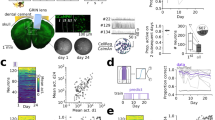
A persistent prefrontal reference frame across time and task rules
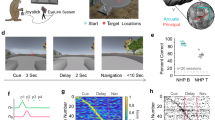
Neuronal activation sequences in lateral prefrontal cortex encode visuospatial working memory during virtual navigation
Working memory (WM)—the ability to temporarily store and manipulate information—is essential for most cognitive functions 1 , 2 , 3 , 4 and is impaired in several neurological and psychiatric disorders 5 , 6 , 7 . The maintenance of information in WM is thought to be mediated by persistent, sequential or oscillatory activity 8 , 9 , 10 , and its representation in the state space of dynamical systems is often modelled as discrete or continuous attractors 11 , 12 , 13 , 14 , 15 . The mechanism of generation and maintenance of WM-related neural representations during learning and their evolution with continued expert performance remains unclear. A key challenge has been to record and manipulate the same neuronal populations over a long period of time while the animal learns and becomes an expert in the task. Here we pose two fundamental questions concerning the stability and causality of WM representations, examining (1) the stability of WM representations across time as the mouse learns the task and attains expertise through practice; and (2) the role of these representations in driving task performance.
To address these questions, we trained mice to perform an olfactory delayed-association WM task 16 (Fig. 1a,b ). In this task, water-deprived head-fixed mice were presented with odours A or B for 1 s. After a 5 s delay period, the mice were presented with odours C or D for another second. If odour C followed odour A or odour D followed odour B, the mice were rewarded with water after licking during the 3 s choice period after the second odour (Fig. 1b ). For the other odour combinations, the animals learned to withhold licking. The mice were not punished for false alarms or for licking during the delay period, but their licking patterns after learning showed that licking was restricted to the choice period (Fig. 1d and Extended Data Fig. 1b ). The mice learned to perform the task after training for around seven sessions, with an accuracy level of 94.2 ± 1.3% (discriminability index, D ′ > 3) (Fig. 1c and Extended Data Fig. 1a ). The performance was assessed as the ratio of hits and correct rejections over the total number of trials that the mouse completed during the training session. Several behavioural control experiments and photoionization detector measurements demonstrated that odour residues did not linger during the delay period (Extended Data Fig. 1c ). Moreover, airflow modulation did not affect the animal’s performance. However, performance decreased with increasing duration of the delay period or decreasing levels of odorant concentration, as expected (Extended Data Fig. 1d ).

a , The experimental set-up. b , The delayed-association WM task trial types; licking was assessed during the 3 s choice period, with early- and late-delays periods noted. c , Learning progress across eight sessions, measured on the basis of the percentage of correct responses. d , Learning session example, with licks marked. e , Photoinhibition effect during different task epochs on the animal’s performance (fourth second of the delay period, P = 0.009; fifth second of the delay period, P = 0.005; second odour, P = 0.0004; first second of choice epoch, P = 0.0001). Statistical analysis was performed using paired t -tests. f , Photoinhibition of the M2 during the last 2 s of the delay period across the first 7 days of training impairs task performance. n = 4 (stGtACR2-expressing) and n = 4 (mCherry-expressing) mice. The P values determined using two-sample t -tests for sessions 1–10 were as follows: P 1 = 0.8425, P 2 = 0.4610, P 3 = 0.6904, P 4 = 0.0724, P 5 = 0.0463, P 6 = 0.0146, P 7 = 0.0161, P 8 = 0.7065, P 9 = 0.6530 and P 10 = 0.7955. For c , e and f , data are mean ± s.e.m. NS, not significant; * P ≤ 0.05, ** P ≤ 0.01, *** P ≤ 0.001, **** P ≤ 0.0001. Details of the statistical analyses are provided in the Methods .
Source Data
To ensure that different odours or odour combinations result in similar behavioural responses, we measured the lick time distributions while the mice performed the task at an expert level (performance ≥ 80%). Lick time distributions for AC versus BD trials, as well as AD versus BC trials, showed no statistically significant differences (Extended Data Fig. 1e ). This indicates consistent behavioural responses across different odour combinations. We also measured pupil diameter changes to distinct odour combinations and found highly consistent pupillary responses within individual animals. Pupillary responses were similar across animals for odour combinations associated with rewards (AC and BD trials) and those without rewards (AD and BC trials) (Extended Data Fig. 1n ). To ensure that the neural activity that we measured in the next section was not simply a correlate of motor movements, we recorded paw movement during the delay period for different odour combinations and found no significant differences in paw movements for different trial types, suggesting that delay-related activity does not simply correlate with motor movements (Extended Data Fig. 1o ). Furthermore, we measured forelimb speed distribution across odour combinations and different task epochs. Partitioning each trial into six intervals revealed marked heterogeneity in forelimb movement speed among the examined animals, indicating that different odours do not differentially and consistently impact motor behaviour (Extended Data Fig. 1p ).
Importance of late-delay epoch activity pattern
To assess the role of M2 neurons in the performance of the olfactory delayed-association WM task, expert mice received bilateral injections of either saline or muscimol into the M2 1 h before testing. M2-localized (Extended Data Fig. 1f ) muscimol injections led to a performance drop (70.5% ± 1.8% versus 92.8% ± 1.2% with saline; Extended Data Fig. 1g ). Licking behaviour remained unaffected by muscimol (Extended Data Fig. 1g ). The performance on a non-WM task was not impaired by muscimol (Extended Data Fig. 1h ), suggesting the specific importance of the M2 for WM task performance, but not simple decision-making.
We investigated the impact of inhibiting CaMKII + neurons in the M2 at different task stages using soma-targeted anion channelrhodopsin (stGtACR2), which effectively suppressed neuronal firing without rebound activity (Extended Data Fig. 1i,j ). Inhibition of M2 neurons only during the fourth and the fifth second of the delay period, during the second odour, and during early-choice epochs significantly degraded performance by 24.7 ± 9.6% ( n = 5), 29.2 ± 5.4% ( n = 5), 34.6 ± 5.9% ( n = 10) and 31.9 ± 3.3% ( n = 8), respectively (Fig. 1e and Extended Data Fig. 1l ). By contrast, inactivation at other times did not affect performance. Illumination of the M2 in control mice injected with AAV-CaMKIIa-eGFP did not affect performance. Thus, neuronal activity in late-delay but not early-delay periods is essential for performance of the WM task.
We next examined whether suppression of late-delay activity in the M2 impedes learning of the WM task. To answer this question, we inhibited the M2 activity of mice during the last 2 s of the delay period for every trial while the animal learned the task for the first seven sessions. M2 inhibition significantly impaired performance during learning sessions in comparison to the control mice that were injected with AAV-CaMKIIa-mCherry (Fig. 1f ). However, when we stopped the photoinhibition during sessions 8 to 10, the performance of the mice rapidly converged to the level of performance of the control mice, suggesting that learning had proceeded despite the deficient performance of the animal in the previous sessions (Fig. 1f and Extended Data Fig. 1q ), consistent with ‘silent learning’ 17 . In all instances, we histologically verified the injection site, confirming its localization to the M2 region. In no case was the M1 labelled (Extended Data Fig. 1k ).
Thus, M2 neuronal late-delay and choice-period activity causally drives WM performance but, while sufficient, it is not necessary for learning of the task.
The M2 contains task-related selective neurons
We recorded neuronal activity in M2 L2/3 using mesoscopic two-photon calcium imaging while C57BL/6JTg (Thy1-GCaMP6s) GP4.12Dkim/J mice performed the task at expert level (Fig. 2a ). We typically recorded 622 ± 295 neurons simultaneously during each session. Within each day, we observed selective and reliable responses to the first odour during the first-odour, early-delay, late-delay and choice epochs (Fig. 2b,c ). A total of 46.5 ± 4.5% of cells showed selectivity during at least one of the epochs. We quantified the selectivity of individual cells by comparing the distribution of their calcium activity based on the identity of the first odour presented at different time intervals. Neurons with selective activity during a single epoch were rare. In expert mice, 5.0 ± 0.8%, 2.3 ± 0.8%, 1.3 ± 0.5% and 18.3 ± 7.4% ( n = 4 mice) of neurons showed pure selectivity during first-odour, early-delay, late-delay and choice epochs (Fig. 2b,d ). By contrast, a larger proportion of neurons (13.0 ± 2.6%, 8.5 ± 1.9%, 5.8 ± 0.8 and 10.3 ± 1.9%) showed mixed selectivity 18 and had strong activity during multiple task epochs (Fig. 2c,d ).
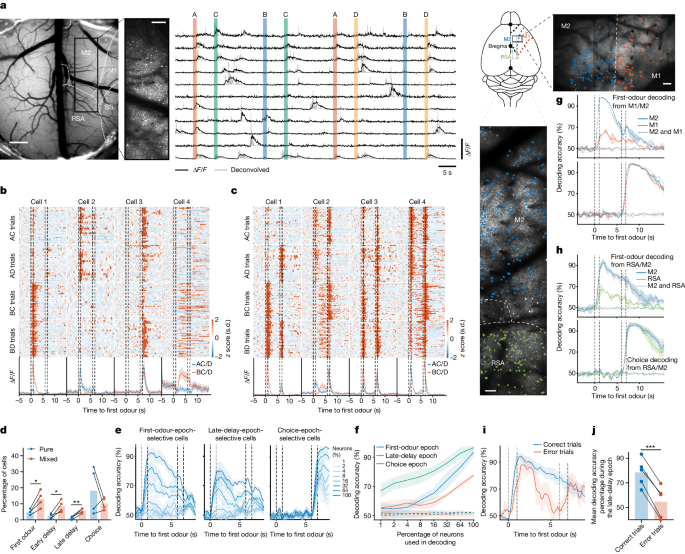
a , Imaging set-up and calcium activity of representative neurons across trials from one of the animals. Images of the other mice looked similar. Scale bars, 500 μm (left), 200 μm (left inset) and 100 μm (top and bottom right). ∆ F/F , fluorescence signal change; SS, somatosensory. b , z -scored activity of four example neurons selectively responsive to specific odours, choices or delay epochs. c , Example neurons exhibiting mixed selectivity. In b and c , cells were sampled from at least 2 days after the animal achieved expert-level performance. d , The percentage of neurons exhibiting pure or mixed selective activity ( n = 4 expert mice; first odour, P = 0.022; early delay, P = 0.035; late delay, P = 0.006; choice, P = 0.353). Statistical analysis was performed using paired t -tests. e , The accuracy of decoding the first odour (left and middle) or choice (right) using N % of the most selective neurons. n = 5 mice performing at expert level. f , The maximum decoding accuracy compared with shuffled data. g , h , The decoding accuracy of predicting the first odour and choice from the activity of M1 and M2 ( g ) and RSA and M2 ( h ) neurons separately and combined. The same number of neurons was used to ensure a fair comparison. i , j , Decoding accuracy comparison between correct and error trials in expert mice ( i ; n = 5), demonstrating significant predictive value during the late-delay epoch ( P = 0.0001, paired t -test). The analysis in g – j is based on data from the last imaging day. For e , f and i , data are mean ± s.e.m. Details of the statistical analyses are provided in the Methods .
We also quantified the proportion of trials with active delay cells in well-trained mice (Extended Data Fig. 2h,i ). In novice mice (performance < 65%) on the first training day, delay cells were active in 85.8 ± 2.6% of trials. On the last recording day for expert animals, delay cells were active in 82.8 ± 2.9% of trials, indicating little change in the reliability of the responses with learning. Notably, the number of active cells during the delay period was significantly lower in novice mice (Extended Data Fig. 2h ).
To ensure that the slow decay of calcium transients did not artificially give the appearance of delay-related activity, we performed single-unit electrophysiological recordings in expert animals as they performed the WM task. Consistent with our imaging experiment, these recordings showed odour-selective activity during the odour period and odour-selective ramping activity during the late-delay period (Extended Data Fig. 2g ). Thus, delay-related activity recorded with calcium imaging was not an artifact of the decay of calcium transients.
The neural activity patterns recorded with calcium imaging did not correlate with the movements of the mice. From 2,611 recorded cells in five mice, only 32 cells (1.2 ± 0.2%) showed a significant correlation with the limb movements of the mice ( Methods and Extended Data Fig. 2d ).
Late-delay M2 activity contains WM information
As single-neuron activity patterns showed mixed selectivity, we examined whether population decoding techniques could better reveal WM information content represented within the ensemble. We trained a linear support vector machine (SVM) to decode the identity of the first odour from the deconvolved calcium signals of populations of M2 neurons recorded when the animal performed at expert level. When trained with data from all simultaneously recorded neurons, the decoder could successfully decode the odour identity during the odour period and the delay period. SVM decoders could also decode the choice of the animals with high accuracy. To determine whether a small number of selective neurons is sufficient to encode the WM, we investigated how the decoding accuracy changes with the number of neurons used to train the network. We first used the data from the last day of calcium imaging during which all five mice were performing the task at expert level and ranked the selectivity of each recorded neuron. We then trained the decoder using the top N % of the most selective neurons, where N ∈ {1, 2, 4, …, 64, 100}. We found that the accuracy of decoding the first-odour identity during the first-odour and late-delay epochs and choice during the choice epoch increased with N at different rates (Fig. 2e,f ). The first-odour identity representation during the late-delay epoch required a much higher number of neurons for adequate decoding than the first-odour identity representation during odour presentation, or the animal’s choice. In further support of this, we performed t -distributed stochastic neighbour embedding ( t -SNE) analysis of the mean activity of neurons to reduce the dimensionality of the population activity during the first-odour, late-delay and choice epochs. The first two t -SNE dimensions were sufficient to disentangle the trial type (whether odour A or B was presented during the first odour presentation period) and choice during the first-odour and choice epochs. However, the model could not cluster the trial types from the activity of the late-delay epoch (Extended Data Fig. 3a ), reaffirming the notion that late-delay representations were high dimensional. To confirm that the unsuccessful clustering of trial types during the late-delay epoch did not result from the absence of WM representation in the neuronal population activity, we applied SVM decoding to the identical dataset. As illustrated in Extended Data Fig. 3a , SVM decoding successfully identified trial types during the late-delay epoch based on neuronal population activity.
To eliminate the possibility that neuronal activity merely mirrored mouse behaviour, we focused on a subset of neurons exhibiting selectivity during the choice epoch—a crucial period for decision-making in the task. Using these choice-epoch-selective neurons, we attempted to decode the identity of the first odour presented in the task. As shown in Extended Data Fig. 3h , during the late-delay epoch, decoding the first odour identity was not reliably achieved with up to 64% of the choice-epoch selective neurons. However, using all choice-epoch selective neurons (100%) significantly improved decoding performance to 69 ± 3%. This observation suggests that mixed selectivity probably contributes to the decoding process during this epoch.
To determine the specificity of these results, we recorded the activity of M1 and M2, or RSA and M2 neurons simultaneously. We chose the RSA because this region is involved in cognitive tasks 19 and makes monosynaptic connections with the M2 (ref. 20 ). In expert animals, we could decode the identity of the first odour during the delay period from the activity of the M2 but not the M1 or RSA neurons; the addition of M1 or RSA neurons to M2 neurons did not improve the performance of the decoder beyond what could be decoded from the M2 alone. Even so, we could decode choice from the activity of all three regions (Fig. 2g,h ). Thus, successful decoding of odour identity during the late-delay epoch was only possible in the M2.
To assess whether the linearity of the SVM decoder posed limitations on decoding WM during the delay period, we used a nonlinear long short-term memory (LSTM) recurrent neural network decoder for analogous analyses. The performance of the LSTM decoder was very similar to the SVM and did not enhance the decodability of WM information during the delay period or choice during the reward period (Extended Data Fig. 3i–l ).
As another control, we conducted calcium imaging recordings of M2 neurons in mice engaged in a go/no-go task that lacked a WM component (Fig. 1h ). The mice rapidly acquired proficiency in the task, achieving high performance within a single session. We successfully decoded the identity of the presented odour with a high degree of accuracy (Extended Data Fig. 3b,c ). In this task, because the animal has to lick in response to one odour and withhold licking in response to the other, the odour decoding is similar to choice decoding in the delayed association WM task, in which choice decoding exhibited a high level of accuracy for a similar duration of 3 to 4 s subsequent to the introduction of the second odour.
To investigate late-delay activity when the initial odour lacks relevance to the reward, we also conducted calcium imaging of M2 neurons during a WM task with randomized reward contingencies. In this task variant, the reward outcome was not tied to specific odour sequences, and the mice could not discern precise odour combinations associated with the reward. In response to this uncertainty, the mice adopted a strategy of engaging in licking behaviour for all trials, anticipating a water reward in approximately half of them. During the odour presentation and early delay epochs, we could accurately decode the first odour’s identity from the first-odour epoch selective neurons. However, the decoding accuracy progressively declined during the late-delay epoch and beyond, reaching chance levels (Extended Data Fig. 3d ). We could not decode the identity of the first odour during the first-odour or late-delay epochs when we used the activity of the late-delay-epoch selective neurons. This decline in decoding accuracy for the first odour can be attributed to the absence of WM representation during the late delay when reward outcomes lack a structured relationship with presented stimuli. The absence of a reward structure prompted consistent licking behaviour in all trials and, notably, we could decode whether the mouse received water (Extended Data Fig. 3d ). The decoding accuracy diverged only after a delay following the second odour, presumably once the animal internally processed reward consumption.
To further examine the importance of the late-delay period activity, we compared the accuracy of decoding the identity of the first odour during the late-delay epoch using the activity of the neurons in correct and error trials. The decoding accuracy of the error trials during the first-odour epoch was statistically indistinguishable from the correct trials. However, the decoding accuracy during the late-delay period of the error trials was significantly lower and at chance (54.7 ± 5.2%, n = 5) compared with the decoding accuracy of the correct trials (78.5 ± 4.5%; Fig. 2i,j ). Thus, population representations of the first odour during the late-delay period are behaviourally relevant.
Late-delay selectivity emerges after learning
We followed the deconvolved calcium activity of the same population of L2/3 M2 neurons over 10 days and examined the stability of WM neural correlates throughout learning and expert behaviour (Fig. 3a,b ). From the first day of training, we observed neurons with significant activity fields during different task epochs ( Methods and Extended Data Fig. 2a ). A neuron was considered to have significant activity if the distribution of its activity within a specific epoch was significantly different from the distribution of its circularly shuffled activity. In novice mice, 43.3 ± 3.1%, 42.3 ± 3.9%, 52.0 ± 5.5% and 41.3 ± 3.2% of neurons had significant activity fields during the first-odour, early-delay, late-delay and choice epochs, respectively ( n = 4 mice). As the mice learned the task, more neurons were recruited during all time epochs. In expert mice, the proportion of neurons with significant activity fields during first-odour, early-delay, late-delay and choice epochs increased to 58.5 ± 3.7%, 68.5 ± 2.5%, 61.3 ± 6.0% and 54.3 ± 2.5%, respectively (Extended Data Fig. 2a ).
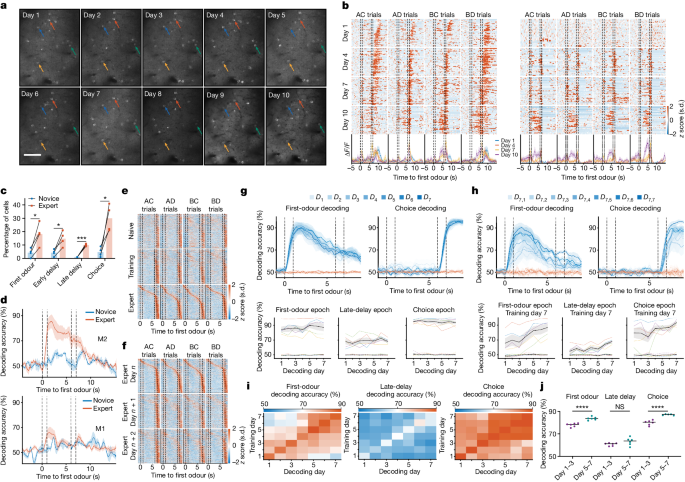
a , Example of the same field of view over 10 days from one of the animals. Images of the other mice looked similar. Scale bar, 100 μm. b , z -scored activity of two example neurons over 10 days. c , The percentage of neurons ( n = 4 mice) exhibiting selective activity for the first odour during different task epochs (first odour, P = 0.023; early delay, P = 0.022; late delay, P = 0.0002; choice, P = 0.026). Statistical analysis was performed using paired t -tests. d , Improvement in first-odour decoding from M2 and M1 cortices as mice progress from novice to expert stages. n = 4 mice. Decoding was performed using overlapping neurons on both novice and expert sessions. All recorded neurons were used for decoding. Novice, the animal’s performance is less than 65%; expert, the animal’s performance is 80% or greater. e , The z -scored activity of 290 neurons ( n = 4 mice) across naive, training and expert days, ordered by the response magnitude of the expert day. During the first-odour, early-delay, late-delay and choice epochs, 8.2 ± 5.2%, 6.9 ± 4.5%, 0.2 ± 0.2% and 1.0 ± 0.7% of neurons maintained their selectivity throughout all three stages, respectively. f , The z -scored activity of 289 neurons ( n = 4 mice) across 3 days of expert performance, ordered according to the response magnitude of the first day. During the first-odour, early-delay, late-delay and choice epochs, 3.9 ± 2.2%, 4.8 ± 1.7%, 1.0 ± 0.7% and 10.3 ± 4.9% of cells maintained their selectivity across all 3 days, respectively. g , Decoding first-odour and choice across 7 days using a daily-trained decoder (top) ( n = 4 expert mice). Bottom, quantification of decoding accuracy by task epoch; the dashed red lines represent shuffled data accuracy. h , Similar to g , but the network, trained on day 7 (first subscript value), was tested across all days (1–7; second subscript value). i , The decoding accuracy for first odour and choice, trained and tested on all day pairs. j , The average decoding accuracies for early versus late days ( n = 4 mice), showing significant differences (first-odour and choice, P < 0.0001; late delay, P = 0.12). Statistical analysis was performed using unpaired t -tests. For d , g and h , data are mean ± s.e.m. Details of the statistical analyses are provided in the Methods .
As mice learned the task, the proportion of neurons that fired selectively to odour A or B during the first-odour, early-delay and late-delay epochs, and lick or no-lick during choice epoch significantly increased (Fig. 3b,c and Extended Data Fig. 2e ). Importantly, odour-selective firing during the late-delay epoch emerged only after the mice learned the task.
In the RSA and M1, the proportion of selective neurons during the first-odour, early-delay and late-delay epochs did not increase with learning. However, the proportion of cells activated during the choice epoch increased in the expert phase in both the M1 and RSA (Extended Data Fig. 2j,k ).
To determine whether individual neurons encode the association of rewarded odours, we examined whether any neurons were selectively activated by associated pairs of rewarded odours (odours A and C, or odours B and D). In novice mice, no cells demonstrated selectivity for both odours A and C, or both odours B and D. By contrast, among expert mice, only 1.4 ± 0.5% exhibited selectivity for both odours A and C, or both odours B and D. Consistent with the presence of these neurons, we were able to train a decoder to discriminate between trial categories (AC, AD, BC or BD) during the second odour using population activity patterns (Extended Data Fig. 3m ).
Late-delay WM representation emerges after learning
To determine how WM population representations emerge with learning, we used the activity of the same overlapping population of neurons when the mouse was a novice and after it became an expert in the task to train the network and decode for each day separately. In novice mice, the cross-validated first-odour identity decoding accuracy during the first-odour and late-delay epochs were at chance level. Conversely, in expert animals, the accuracy of first-odour identity decoding during the first-odour and late-delay epochs significantly increased to 80.3 ± 5.3% and 73.0 ± 4.2%, respectively (Fig. 3d ). To determine whether WM-related activity was specific to the M2 or was present within other structures implicated in motor execution or rule-based task performance 21 , we performed a similar analysis in recorded neurons in the M1. The decoder performed significantly worse, with a decoding accuracy of near chance (53.6 ± 2.4%) in novice and 64.7 ± 4.0% in expert mice during the first-odour epoch. During the late-delay epoch, the accuracy of decoding the first odour identity from M1 neurons was near chance levels at both the novice and expert stages of task performance (Fig. 3d ).
Stabilization of activity patterns over days
Our analyses demonstrated gradual and pronounced changes in M2 neuronal responses across days (Fig. 3b ). We quantified the specificity of neurons for different parameters during different task epochs at different learning stages (Extended Data Fig. 2e,f ). Single neurons either gained or lost responsiveness to a specific odorant and rarely exhibited stable responses across sessions. First-odour information during the late-delay epoch emerged as the animals became experts in task performance. Critically, changes in the responses of individual neurons were due to continual alterations in responses across sessions, not to a global loss of responsiveness in the M2.
To understand how stable the WM representation was across days, even after the animal became an expert, we tracked the activity of 290 cells ( n = 4 mice) during the learning phase in naive, training and expert mice ( Methods ). In total, 8.2 ± 5.2% of tracked neurons maintained their selectivity during the first-odour epoch throughout all three stages (Fig. 3e ). For the early-delay, late-delay and choice epochs, 6.9 ± 4.5%, 0.2 ± 0.2% and 1.0 ± 0.7% neurons remained stable. During the expert phase (Fig. 3f ), we tracked the activity of 289 cells ( n = 4 mice) across three consecutive days; we found that only 3.9 ± 2.2%, 4.8 ± 1.7%, 1.0 ± 0.7% and 10.3 ± 4.9% of cells maintained their selectivity during first-odour, early-delay, late-delay and choice epochs across all 3 days, respectively. Thus, neurons with significant late-delay activity were the least stable during the expert phase.
To determine whether population representations of L2/3 M2 activity were stable during the expert stage, we used same-day and cross-day decoding approaches. At the population level, we determined whether decoders trained and tested on the same-day activity of expert animals could reliably predict the first odour and choice for seven consecutive days using activity recorded from L2/3 M2 neurons. The decoding accuracy for all epochs was high and remained stable across all 7 days (Fig. 3g ). There were no significant changes in performance, recorded neuron count or the percentage of neurons exhibiting selectivity across imaging days for the analysed mice (Extended Data Fig. 3e–g ). To quantify the stability of network dynamics across days, we tested whether the network that was trained to decode the identity of the first odour or choice on the expert day seven could also decode the first-odour identity or choice on the earlier days. For this analysis, we used the activity of overlapping populations of neurons on both days. If the same population of neurons shared a common representation and dynamics across days, we would expect the decoding accuracy to be independent of the day the decoder was tested. The accuracy of decoding the first odour during the first-odour epoch gradually declined over days but remained above chance (Fig. 3h ). The accuracy of choice decoding declined slowly, like that of odour decoding during the first-odour epoch. By contrast, late-delay representations drifted more rapidly to chance. To determine whether stability emerged gradually during the expert performance period, we conducted a similar analysis but trained on each of the 7 days and compared the performance on the remaining 6 days (Fig. 3i ). Our null hypothesis assumed that the decoding stability remains the same across all 7 days. To assess this, we used the cross-day decoding accuracy statistic averaged across animals for late versus early days. The decoding accuracy of the identity of the first odour during the first-odour epoch and choice during the choice epoch when decoders were trained and tested on days 5–7 was significantly higher compared with when the training and testing were performed on days 1–3, rejecting the null hypothesis (Fig. 3j ). No such pattern was evident for late-delay epoch decoding of the first odour. As a secondary measure, we performed an additional statistical test by shuffling the day identities. If the decoders show no greater stability at later days compared to earlier ones, our statistics should be similar to the one obtained by shuffling day identities. However, we observed that this is not true for the first-odour and choice epochs. Consequently, the results of this second test also rejected the null hypothesis that decoding stability remains constant across all 7 days (Extended Data Fig. 2n ). To determine whether this trend was stable across animals, we compared the mean decoding accuracy within individual mice across first and last 2 day pairs (Extended Data Fig. 2l ). Decoding showed a statistically significant improvement during the choice epoch. Thus, as the mice continue to perform the task (even as experts), their representations for the first odour and choice epochs stabilize, while representations for the late delay seem to drift daily.
Emergence and crystallization of late-delay epoch WM representation
As shown above, the activity of L2/3 neurons in expert animals demonstrated considerable representational drift during the late-delay epoch. We therefore examined whether this drift was layer specific, and whether deeper layers hold an invariant memory of representation across days. To answer this question, we performed volumetric imaging of tens of thousands of M2 neurons during the expert performance to investigate whether the late-delay representation stabilizes with continued practice.
We recorded the activity of up to 73,307 M2 neurons simultaneously in a volume of 2,000 × 2,000 × 450 μm 3 using light-bead microscopy (LBM) 22 , while TRE-GCaMP6s 23 mice performed the task (Fig. 4a ). LBM uses two-photon excitation of axially separated and temporally delayed excitation foci to record from 30 axially separated voxels over 500 μm within 200 ns. Lateral scanning and temporal demultiplexing of the signal from this column of light beads results in 6.5 Hz recording of neuronal activity within 30 imaging planes, each separated by 15 μm, extending from superficial L2/3 to superficial L5. We examined the dependence of decoding accuracy as a function of recording depth. We divided the bottom 420 μm depth of our calcium imaging volume into seven intervals of 60 μm thickness each. We identified the recorded neurons in all seven intervals and noted the layer with the fewest number of neurons recorded. We equalized the number of neurons analysed for decoding by randomly selecting neurons to match the number of neurons recorded in this layer containing the fewest neurons. We then calculated the accuracy of decoding the identity of the first odour or choice during the first-odour, late-delay or choice epochs. The accuracy of the first-odour decoding during the first-odour epoch initially increased with increasing depth and then decreased to an intermediate level (Fig. 4b ). However, the accuracy of decoding the first odour during the late-delay epoch increased monotonically with increasing depth. The accuracy of decoding choice during the choice epoch was uniformly high at all depths. There was therefore an increase in information about the first odour during the late-delay period in the deeper cortical neurons imaged.
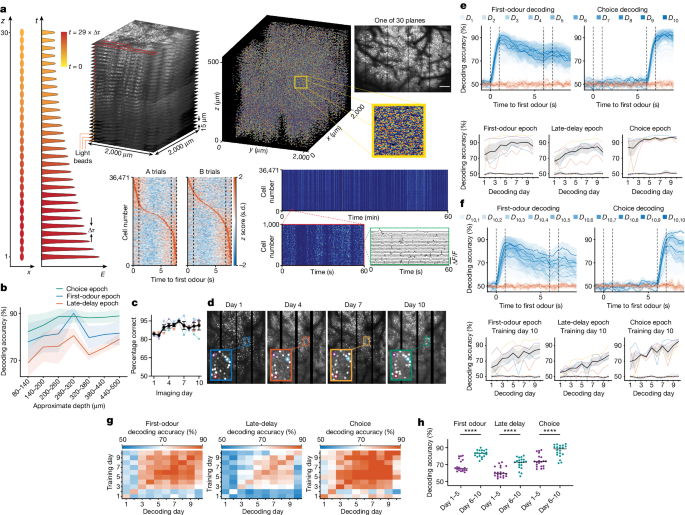
a , Schematic of LBM (left). A pump pulse is split into 30 light beads, each delayed (Δ τ ≈ 7 ns, where Δ τ represents the time delay between excitation foci) and focused at different sample depths, enabling full-volume sampling at the microscope’s frame rate. Top right, a 3D rendering of neuron locations across 30 planes. Bottom middle, the activity of 36,471 neurons during A-odour or B-odour trials, sorted by response and shown over 60 min. Bottom right, a 60 min raster of these neurons, highlighting Δ F / F activity for selected neurons. Scale bar, 500 μm. b , The accuracy of decoding the first odour and choice during the first-odour, late-delay and choice epochs using the activity of neurons at different depths. n = 4 mice. c , The performance of the mouse during the 10 days of calcium imaging. Mice ( n = 4) were performing at expert level from the first day of imaging. d , Example field of view showing 1 out of the 30 planes with the same constellation of neurons across multiple imaging days. e , Decoding first odour and choice over 10 days with a daily-trained decoder, using up to 73,307 neurons across 30 planes and 450 μm depth (top) ( n = 4 mice). Bottom, quantification of accuracy by epoch; the dashed lines indicate shuffled data decoding. f , Similar to e , with the decoder trained on day 10 and tested across days 1–10. g , The decoding accuracy for first odour during first-odour and late-delay epochs, and choice accuracy during the choice epoch. n = 4 mice. h , The average across-day decoding accuracies for early versus late days ( n = 4 mice), as depicted in the off-diagonal terms of Fig. 4g , with significant improvements (first-odour and late-delay, P < 0.0001; choice, P = 0.0003). Statistical analysis was performed using unpaired t -tests. For b , c , e and f , data are mean ± s.e.m. Details of the statistical analyses are provided in the Methods .
To determine whether individual neurons encode the association of rewarded odours, we examined whether any neurons were selectively activated by associated pairs of rewarded odours (odours A and C, or odours B and D). In expert mice, only 1.2 ± 0.5% of neurons exhibited selectivity for both odours A and C, or both odours B and D. The sequences of these cell activities during AC and BD trials, sorted on the basis of their activity in both trial types and vice versa, revealed the presence of numerous cells with mixed selectivity for A and B odours or C and D odours. Importantly, the sequences differed between the two trial types, underscoring that neurons convey content-specific information during the delay period. While some neurons exhibited a strong correlation in activity during the AC and BD trials, most did not show a significant correlation. Particularly, the correlation was weakest at the point at which the delay period sequence was formed, indicating greater dissimilarity in activity during the delay period across different trial types (Extended Data Fig. 2p ).
We wondered whether continued practice refines the WM representation of the first odour, pushing the neuronal activity to a single attractor, stable across days. To investigate this, we followed the deconvolved calcium activity of the same population of neurons over 10 days of expert performance (Fig. 4c,d ) and examined the stability of WM neural correlates throughout expert behaviour. We took great care to match the identity of neurons recorded with volumetric imaging across days, matching up to 47,384 neurons across days. Consistent with our earlier results, when the decoder was trained and tested on the activity from the same day of recording, the identity of the first odour could be decoded with high accuracy during the first-odour and late-delay periods, and choice could be decoded with very high accuracy during the choice epoch (Fig. 4e ). Also consistent with our earlier results, the identity of the first odour and choice could be decoded with relatively high accuracy when the decoder was trained on the activity of day 10 (the final day of imaging) and tested on previous days of imaging, with the decoding accuracy declining with an increasing number of days between training and testing days; this indicated the emergence of a stable representation during the final imaging days (Fig. 4f,g ). However, in contrast to our previous results using single plane L2/3 imaging, the performance of decoders in predicting the first odour during the late-delay epoch was higher when trained and tested on days 6–10 of imaging compared with when trained and tested on days 1–5 of imaging (Fig. 4g,h ). We conducted an additional statistical test by shuffling the day identities. If decoding stability is not higher in the later days compared to earlier ones, our results should resemble those obtained by randomly shuffling day identities. However, we observed that this is not the case for any of the three epochs. Consequently, our second test also rejected the null hypothesis, indicating that decoding stability does not remain constant across all 10 days (Extended Data Fig. 2m ). Moreover, to examine whether this trend holds across different animals, we compared the mean decoding accuracy within individual animals for the first and last 3 days pairs (Extended Data Fig. 2o ). The decoding accuracy demonstrated a statistically significant improvement during all three epochs. In other words, during the first 5 days of expert performance, the decoder trained on the activity on any day’s imaging could not decode the identity of the first odour during the late-delay epoch on any other day. However, as the mouse kept practicing the task, during days 6–10 of expert performance, the decoder trained on the activity of neurons during any of these later days could accurately decode the identity of the first odour during the late-delay epoch. Thus, in addition to the stabilization of activity during the first-odour and choice epochs, volumetric imaging demonstrated stabilization of the WM representation with continued practice during the late-delay epoch. The stabilization was uniform throughout the imaged volume (Extended Data Fig. 4 ).
Tracking M2 neuron activity over 10 days revealed that late-delay WM representations, which are crucial for task performance, initially fluctuate in early expert stages but stabilize with continued practice in the late expert phase.
M2 neuron activity strongly encoded odour identity in the early task stages without affecting behaviour when disrupted. This suggests that early-stage activity does not drive persistent attractors within the M2. The sensitivity to disruption emerges in late-delay and choice epochs, indicating that late-delay activity probably depends on interactions with regions projecting to the M2. This allows for recovery and realignment to the attractor state by the late-delay period despite early disruptions.
Inhibiting M2 neurons during late delay in training animals did not impair rule learning, suggesting that task learning occurs upstream of the secondary motor cortex. Alternatively, neural redundancy might explain this, whereby inhibiting one area could be compensated by other regions or pathways that are involved in the task.
Our study extends previous research performed in the premotor cortex during motor preparation and WM tasks. It was previously shown that activity in the premotor anterior lateral motor cortex during the first-odour and delay periods was important for task performance 24 . Differences in findings between our study and theirs may arise owing to differences in delay duration (1.5 s versus 5 s for our study) and differences in recording location (anterior lateral motor cortex versus M2 in our study). Chronic recordings from the same population of neurons over days to weeks have enabled investigators to track whether a population of neurons in cortical or hippocampal regions encodes sensory, motor or cognitive variables in a stable manner or whether these distributions drift over time 25 , 26 , 27 , 28 , 29 , 30 , 31 , 32 , 33 , 34 . In general, while there was variability in the engagement or selectivity of individual neuron firing rates from day to day (but see refs. 32 , 33 , 34 , 35 for highly stable reactivation), in most cases, reliable cross-day population decoding of sensory and cognitive variables was still possible for several days up to several weeks 25 , 28 , 30 , 36 . In contrast to these findings, for late-delay decoding, we saw the emergence of successful cross-day decoding only after several days of performance of the task in mice already performing the task at high accuracy levels. This reassignment of neurons participating in late-delay activity from day to day during learning and early expert performance periods may allow more rapid erasure of the WM sketchpad and may be necessary for increasing WM capacity for the large number of stimuli encountered in the world. It may also allow more flexibility for adapting to new decision-making rules as WM representations are recruited for driving distinct actions in different contexts. Future studies will dissect plasticity processes that drive dynamic learning-related activity patterns that stabilize with continued practice.
All of the experiments were conducted according to the National Institute of Health (NIH) guidelines and with the approval of the Chancellor’s Animal Research Committee of the University of California, Los Angeles. Experiments were performed with 8–15-week-old adult male and female C57BL/6J (Jackson Laboratory, 000664), C57BL/6J-Tg (Thy1-GCaMP6s), GP4.12Dkim/J (Jackson Laboratory, 025776) and B6;DBA-Tg(tetO-GCaMP6s)2Niell/J (Jackson Laboratory, 024742) mice crossed with B6.Cg-Tg(Camk2a-tTA)1Mmay/DboJ (Jackson Laboratory, 007004) mice. Mice were kept in the vivarium under a 12 h–12 h light–dark cycle.
For optogenetic experiments, CaMKIIa-driven soma-targeted anion-conducting channelrhodopsin fused to FusionRed (pAAV-CKIIa-stGtACR2-FusionRed, Addgene, 105669; titre, 1 × 10 13 viral genomes per ml) was used to express GtACR2 in the soma of excitatory neurons. For control experiments, we used pAAV-CaMKIIa-mCherry (Addgene, 114469; titre, 7 × 10 12 viral genomes per ml) or pAAV-CaMKIIa-EGFP (Addgene 50469; titre, 7 × 10 12 viral genomes per ml).
Head-bar and cranial window implantation
Adult 8-to-12-week-old male and female C57BL/6J-Tg (Thy1-GCaMP6s) GP4.12Dkim/J mice were anaesthetized with isoflurane (5% for induction, 1–2% (v/v) for maintenance). The depth of anaesthesia was monitored continuously and adjusted when necessary. After induction of anaesthesia, the mice were fitted into a stereotaxic frame (Kopf), with their heads secured by blunt ear bars and their noses placed into an anaesthesia and ventilation system (David Kopf Instruments). Body temperature was kept at 37 °C with a feedback-controlled heating pad (Harvard Apparatus). Mice were administered 0.05 ml lidocaine (2%; Akorn) subcutaneously as a local anaesthetic before surgery. The surgical incision site was cleaned three times with 10% povidone-iodine and 70% ethanol. After removing the scalp and clearing the skull of connective tissues, a custom-made lightweight metal head-bar was fixed onto the skull with cyanoacrylate adhesive and covered with black dental cement (Ortho-Jet). A circular craniotomy (diameter, 5 mm) was performed above the secondary motor cortex (centred at 1.94 mm anterior from bregma or centred at bregma for M2/RSA imaging). A cranial glass window consisting of a 5 mm diameter round #1 coverslip (Warner Instruments) was implanted in the craniotomy, flush with the skull surface and sealed in place using tissue adhesive (Vetbond). The exposed skull surrounding the cranial window was then completely covered with black dental cement to build a small chamber for imaging with a water-immersion objective. After surgery, the mice were injected with carprofen (5 mg per kg of body weight) and allowed to recover overnight in cages placed on a low-voltage heating pad. Carprofen was administered once per day for up to 2 days after surgery. Amoxicillin antibiotic (0.25 mg ml −1 ) was dispensed in the drinking water for 7 days. Animals were returned to the vivarium for 1–2 weeks for recovery before undergoing imaging experiments.
AAV injection and fibre optic cannula implantation
Adult 8-to-12-week-old male and female C57BL/6J mice were anaesthetized with isoflurane (5% for induction, 1–2% (v/v) for maintenance). Skin incisions were made, followed by craniotomies 1 mm in diameter above the secondary motor cortex (centred at 1.94 mm anterior to bregma and 0.5 mm lateral to the midline) using a small steel burr (Fine Science Tools) powered by a high-speed drill. Saline (0.9%) was applied to the skull to reduce heating caused by drilling. Bilateral viral injections were performed by using stereotaxic apparatus (David Kopf Instruments) to guide the placement of bevelled glass pipettes with a tip diameter of about 50 μm (World Precision Instruments) into the secondary motor cortex (1.94 mm anterior to bregma, 0.5 mm lateral to the midline and 0.3 mm from the pial surface). Using the Nanoject II micro-injector (Drummond Scientific), 300 nl of 1:100 PBS-diluted AAV was bilaterally injected using a syringe pump. Glass pipettes were left in place for at least 10 min after virus injection.
A ferrule-terminated optical fibre (Thorlabs) was placed above the injected site. The fibre tip was aimed to terminate at the pial surface. The optical fibre was secured to the skull using cyanoacrylate adhesive and black dental cement (Ortho-Jet). After surgery, the mice were left overnight in cages placed on a low-voltage heating pad. Mice were allowed to recover for 2–3 weeks before the experiments. The locations of injections and implanted optical fibres were validated histologically for all experimental mice.
Behavioural training
After recovery from surgery, mice were handled and water-restricted to 85–90% of their original weight. The mice were subsequently habituated to head fixation, airflow and water port for two sessions (one session per day). During the two shaping days, the mice were presented only with the combination of the odours (A, 1-pentanol; B, butyl formate; C, 3-methyl-2-buten-1-ol; and D, ethyl acetate; Sigma Aldrich, 138975, 261521, 162353 and 270989) that led to reward (AC and BD trials) and water was automatically delivered. After 2 days of shaping, the mice were trained to perform the complete delayed-association WM task. The lick port was connected to a touch sensor, and mouse tongues had to touch the lick port at least once to receive a water reward. Each training session consisted of 150 to 250 trials. Odour combinations were presented in a random order. Responses were assessed based on mouse licking during the choice window. If any licks occurred during the choice window, the trial was considered to be a hit for AC and BD trials or false alarm for AD and BC trials. If no licking occurred during the choice window, the trial was considered to be a miss for AC and BD trials or correct rejection for AD and BC trials. Mice were not punished for miss or false alarm trials. A training session was aborted early if a mouse had more than three misses within the most recent ten trials, indicating the animal’s lack of motivation to obtain the water reward. Performance was quantified as the number of hits and correct rejections over the total number of completed trials. The airflow and odour delivery were frequently monitored using an Aurora Scientific photo-ionization detector at the beginning of each training session.
In vivo calcium imaging
Two-photon laser-scanning microscopy was conducted using the Thorlabs multiphoton mesoscope using a 12 kHz resonant scanner with a water-immersion objective with 0.6 excitation NA, 1.0 collection NA and 2.7 mm working distance. The excitation laser was a 920 nm Tiberius Ti:Sapphire Femtosecond Laser, and the laser intensity was 30–80 mW at the sample. Images were acquired using the ScanImage software (Vidrio Technologies). Fully awake mice were mounted in a 2-inch-diameter transparent tube by securing its head bar onto a custom-made head-bar holder under the microscope. 600 px × 1,200 px to 600 px × 2,500 px images were acquired at 8–17 Hz at 150–250 μm depth. To track the mouse movement, a camera mounted underneath the animal acquired the paw location of the animals at 30 Hz. The locomotion data were acquired simultaneously with the calcium imaging data and synchronized with the scanning mirror signals. The microscope and behavioural set-up were encased in a light-tight box, and the mice were kept in darkness during the imaging sessions. We performed online image processing at the beginning of every session to align cells across days. We tried to maximize the correlation between the moving average of frames of the current field of view and the average of frames of the previous sessions.
Two-photon LBM was conducted using a custom-built microscope equipped with a 960 nm, 4.89 MHz repetition rate optical parametric chirped-pulse amplification (OPCPA) pumped by an ytterbium laser at 1,030 nm with 80 W power, delivering a 2 μJ pulse energy and a 90 fs pulse width. The LBM featured a rapid 12 kHz resonant scanner and was paired with a 0.6 excitation NA, 1.0 emission water-immersion objective lens with a 2.7 mm working distance. The LBM technique divided a single pulse into 30 distinct subpulses of varying intensities, targeting 30 separate depths of the specimen separated by 15 μm, yet eliciting a consistent level of fluorescence across these layers 22 . In our initial LBM experiments, we successfully recorded a region measuring 1,450 × 1,825 × 450 μm 3 at a frequency of 7.95 Hz in two mice. Subsequent experiments extended the recorded area to 2,000 × 2,000 × 450 μm 3 , recorded at 6.45 Hz, in another two animals.
Optogenetics
Optical stimulation was applied through a ferrule-terminated 200 μm core and 0.39 NA optical fibre (Thorlabs) attached to the 200 μm core and 0.39 NA patch cable using a 1.25 mm ceramic mating sleeve (Thorlabs). We used a blue-fibre-coupled light emission diode ( λ = 470 nm, Thorlabs, M470F3). The light was delivered at 20 Hz with a 0.4 duty cycle at an irradiance of 10 mW mm −2 at the output tip of the fibre.
Optogenetic experiments commenced only when the animals achieved a behavioural performance threshold exceeding 90% accuracy for at least three consecutive sessions. This criterion ensured that the animals were well-trained and proficient in reliably executing the behavioural tasks before the introduction of optogenetic manipulations.
Electrophysiology
For in-vivo electrophysiology recordings, expert mice were anaesthetized with isoflurane (5% for induction, 1–2% (v/v) for maintenance). They underwent a 2 mm craniotomy (centred at 1.94 mm anterior to bregma and 0.5 mm lateral to the midline) and silver wire ground (Warner Instruments) implantation surgery over the cerebellum 1 day before recording. The ground wire was fixed in place with dental cement. The exposed skull was covered with Kwik-Sil, and the mouse was allowed to recover overnight. On the day of the recording, the mice were head-fixed into a tube, the Kwik-Sil covering the craniotomy was removed and replaced with buffered artificial cerebrospinal fluid, and the mouse was aligned to the micromanipulator. A 128-channel silicon microprobe 37 was slowly lowered using a micromanipulator into M2, and the surface of the exposed brain was covered with mineral oil. The process was monitored using a surgical microscope (Zeiss, STEMI 2000). The microprobe contained 128 channels that were densely distributed (honeycomb layout with 20 μm spacing between nearest-neighbour channels) on two shanks (placed 0.4 mm apart). After insertion, the microprobe was allowed to settle for at least 30 min before the recording began and continued for the entire duration of the session. The electrophysiological and behavioural data acquisitions were synchronously performed using custom MATLAB software while the mouse performed the task. The probe readout was achieved using a detachable head stage module (Intan Technologies RHD 128). Head stages contained commercial integrated electronic circuits (Intan Technologies RHD 2000 USB interface board) providing a multiplexed signal recorded with open source software (Intan Technologies) at 25 kHz per channel.
At the end of experiments, the mice were deeply anaesthetized under isoflurane and transcardially perfused with 40 ml 1× PBS followed by 40 ml 4% paraformaldehyde in 1× PBS at a rate of approximately 4 ml min −1 . After perfusion, the brains were rapidly extracted and post-fixed in 4% paraformaldehyde. Coronal sections (thickness, 100 μm) were collected using a vibratome. The sections were mounted onto glass slides. The slides were then cover-slipped with mounting medium DAPI. Images were acquired using the Leica DM6 B microscope.
Quantification and statistical analysis
Calcium imaging data processing, including motion correction, segmentation, fluorescence signal extraction and deconvolution, was performed using the Python implementation of Suite2P 38 . Before segmentation, we performed several steps to enhance image quality, including noise reduction, background subtraction and image registration to correct for tissue movement. We validated our segmentation results by comparing the automated segmentation to manually annotated ground truth data. Adjustments to parameters and algorithms were done to achieve optimal results. We used the deconvolved signal for all our analyses. Silicon probe data processing and spike sorting were performed using custom code, KiloSort 39 and Phy 40 .
To visualize the calcium activity of individual neurons, we computed a peristimulus time histogram averaged across all trials for all four combinations of odours, smoothed using a moving average over a 400 ms window. To generate response maps for each neuron, we subtracted its mean spontaneous baseline calcium activity across all trials on a given day during the baseline epoch (5 s before the first-odour onset). We divided it by the s.d. of calcium activity during the baseline epoch. Thus, the response maps show changes in calcium activity in units of the s.d. of spontaneous activity. This method was used for visualization purposes only. Unless stated otherwise, all statistical analyses were performed on unsmoothed, deconvolved calcium activity without baseline calcium activity subtracted.
A neuron was considered to have a significant activity field during a specific time epoch if its activity within that epoch significantly differed from the distribution of its 1,000 times circularly shuffled mean activity.
The first-odour selectivity of a neuron was assessed by comparing the distribution of its mean deconvolved calcium activity over a time epoch for A and B odour trials using the Wilcoxon rank-sum test with a confidence interval of 99%. A neuron was considered to be purely selective if it exhibited selectivity for a specific odour or choice during a specific epoch and did not show selectivity for any other parameter at any other time. Conversely, a neuron was considered to be mixed selective if it showed selectivity for more than one odour or choice at different epochs.
We considered an animal naive, training or expert if its behavioural performance ( p ) was, respectively, p < 65%, 65% ≤ p < 80% or p ≥ 80%. An animal was considered a novice during the first training day.
To determine whether a neuron’s response was related to the animals’ motor activity, we used DeepLabCut 41 to find the position of the animals’ paws from which we extracted the animals’ movements. We calculated the correlation coefficient between the activity of each neuron and the unshuffled and 1,000 times circularly shuffled locomotion activity. A neuron was considered to be significantly correlated if its correlation coefficient was at least 2 s.d. away from the mean value of the correlation coefficients of shuffled distribution.
We assessed the WM information content in a population activity of neurons by measuring the classification performance using a SVM with a linear kernel. We implemented the SVM binary classification in MATLAB and performed the computations on high-performance computing clusters using thousands of computing nodes. We used the activity of neurons in 500 ms time bins to train a decoder on 90% of randomly chosen trials and tested its accuracy on the 10% of the trials that were withheld. To ensure our model was not biased or overfit to specific data patterns, we repeated the classification measurements at least 32 times with different sets of randomly chosen trials. We then calculated the average of all measurements. This approach introduces randomness and helps to ensure that the decoding results are not a product of a model memorizing specific instances. Decoding accuracy and its standard error were then found by averaging the prediction accuracy of the decoder across all mice.
For across-day classification, we used the activity of the overlapping neurons for our analyses. We trained a model on all trials on one day and tested that model’s predictions on all trials on another day. To assess statistical significance and determine whether decoding performance surpasses chance, we randomized trial types by assigning random labels to each trial.
For the LSTM decoding analyses, we configured the recurrent neural network architecture so that the dimensions of the input layer were aligned with the number of neurons recorded in the pertinent dataset. The network comprised 128 hidden units followed by a linear layer to compute logits for a softmax classifier using cross-entropy loss. The weights and biases within the LSTM layers during the training phase were optimized using the adaptive moment estimation (Adam) optimizer. LSTMs were trained for 100 epochs (passes through the training set). For the decoding process, temporal data granularity was 500 ms. Training involved 90% of randomly selected trials, with the remaining 10% reserved for testing. Analogous to the SVM decoding procedure, the LSTM classification was iterated at least 32 times using distinct randomly chosen trial subsets. The resultant metrics were then averaged over the 32 samples. Furthermore, we performed trial shuffling to mitigate potential biases and ensure the robustness of the LSTM model’s performance assessment.
To find overlapping neurons across sessions, we used co-registration of spatial cell footprints using CellReg 42 . Neurons were modelled with a maximal centroid distance of 10 μm. Final registration used the probabilistic model with a threshold of more than 95% probability of cells being the same for all mice. We used these parameters to ensure the accuracy of matching cells.
We used t -SNE 43 to embed the high-dimensional neuronal activity into two dimensions. We calculated the time-averaged calcium activity of neurons during a specific epoch and found the pairwise distances between the high-dimensional points for each trial. For each point, we calculated a s.d. so that the perplexity of each data point matched a predefined value. Starting from an initial set of low-dimensional points, we iteratively updated the points to minimize the Kullback–Leibler divergence between a Gaussian distribution in the high-dimensional space and a t -distribution in the low-dimensional space.
Statistics and reproducibility
All statistical analyses were conducted using Prism (GraphPad), MATLAB (MathWorks) or Python. Statistical tests used in this study include Wilcoxon rank-sum tests and paired t -tests. The significance threshold was held at α = 0.05; NS, not significant ( P > 0.05); * P ≤ 0.05, ** P ≤ 0.01, *** P ≤ 0.001, **** P ≤ 0.0001. All behavioural, imaging and optogenetics experiments were replicated in multiple animals. Sample sizes were not predetermined using statistical methods.
Reporting summary
Further information on research design is available in the Nature Portfolio Reporting Summary linked to this article.
Data availability
All data and analyses necessary to understand the conclusions of the manuscript are provided in the Article. Source data are provided with this paper.
Code availability
Calcium imaging data analysis ( https://github.com/MouseLand/suite2p , https://github.com/flatironinstitute/NoRMCorre and https://github.com/zivlab/CellReg ), electrophysiology data analysis ( https://github.com/MouseLand/Kilosort and https://github.com/cortex-lab/phy ), animal paw tracking ( https://github.com/DeepLabCut/DeepLabCut ) and decoding analysis ( https://github.com/bellafard/DAT-Decoding ) are available at GitHub.
Fuster, J. M. & Alexander, G. E. Neuron activity related to short-term memory. Science 173 , 652–654 (1971).
Article ADS CAS PubMed Google Scholar
Kubota, K. & Niki, H. Prefrontal cortical unit activity and delayed alternation performance in monkeys. J. Neurophysiol. 34 , 337–347 (1971).
Article CAS PubMed Google Scholar
Funahashi, S., Bruce, C. J. & Goldman-Rakic, P. S. Mnemonic coding of visual space in the monkey’s dorsolateral prefrontal cortex. J. Neurophysiol. 61 , 331–349 (1989).
Baddeley, A. Working memory: theories, models, and controversies. Ann. Rev. Psychol. 63 , 1–29 (2012).
Article Google Scholar
Barkley, R. A. Behavioral inhibition, sustained attention, and executive functions: Constructing a unifying theory of ADHD. Psychol. Bull. 121 , 65–94 (1997).
Article PubMed Google Scholar
de Jong, P. F. Working memory deficits of reading disabled children. J. Exp. Child Psychol. 70 , 75–96 (1998).
Park, S. & Holzman, P. S. Schizophrenics show spatial working memory deficits. Arch. Gen. Psychiatry 49 , 975–982 (1992).
Constantinidis, C. et al. Persistent spiking activity underlies working memory. J. Neurosci. 38 , 7020–7028 (2018).
Article CAS PubMed PubMed Central Google Scholar
Lundqvist, M., Herman, P. & Miller, E. K. Working memory: delay activity, yes! Persistent activity? Maybe not. J. Neurosci. 38 , 7013–7019 (2018).
Roux, F. & Uhlhaas, P. J. Working memory and neural oscillations: alpha–gamma versus theta–gamma codes for distinct WM information? Trends Cogn. Sci. 18 , 16–25 (2014).
Zylberberg, J. & Strowbridge, B. W. Mechanisms of persistent activity in cortical circuits: possible neural substrates for working memory. Ann. Rev. Neurosci. 40 , 603–627 (2017).
Mante, V., Sussillo, D., Shenoy, K. V. & Newsome, W. T. Context-dependent computation by recurrent dynamics in prefrontal cortex. Nature 503 , 78–84 (2013).
Article ADS CAS PubMed PubMed Central Google Scholar
Druckmann, S. & Chklovskii, D. B. Neuronal circuits underlying persistent representations despite time varying activity. Curr. Biol. 22 , 2095–2103 (2012).
Stokes, M. G. ‘Activity-silent’ working memory in prefrontal cortex: a dynamic coding framework. Trends Cogn. Sci.s 19 , 394–405 (2015).
Wolff, M. J., Jochim, J., Akyürek, E. G. & Stokes, M. G. Dynamic hidden states underlying working-memory-guided behavior. Nat. Neurosci. 20 , 864–871 (2017).
Zhu, J. et al. Transient delay-period activity of agranular insular cortex controls working memory maintenance in learning novel tasks. Neuron 105 , 934–946 (2020).
Rossato, J. I. et al. Silent learning. Curr. Biol. 28 , 3508–3515 (2018).
Rigotti, M. et al. The importance of mixed selectivity in complex cognitive tasks. Nature 497 , 585–590 (2013).
Vann, S. D., Aggleton, J. P. & Maguire, E. A. What does the retrosplenial cortex do? Nat. Rev. Neurosci. 10 , 792–802 (2009).
Yamawaki, N., Radulovic, J. & Shepherd, G. M. G. A corticocortical circuit directly links retrosplenial cortex to M2 in the mouse. J. Neurosci. 36 , 9365–9374 (2016).
Peters, A. J., Lee, J., Hedrick, N. G., O’Neil, K. & Komiyama, T. Reorganization of corticospinal output during motor learning. Nat. Neurosci. 20 , 1133–1141 (2017).
Demas, J. et al. High-speed, cortex-wide volumetric recording of neuroactivity at cellular resolution using light beads microscopy. Nat. Methods 18 , 1103–1111 (2021).
Wekselblatt, J. B., Flister, E. D., Piscopo, D. M. & Niell, C. M. Large-scale imaging of cortical dynamics during sensory perception and behavior. J. Neurophysiol. 115 , 2852–2866 (2016).
Wu, Z. et al. Context-dependent decision making in a premotor circuit. Neuron 106 , 316–328 (2020).
Rule, M. E., O’Leary, T. & Harvey, C. D. Causes and consequences of representational drift. Curr. Opin. Neurobiol. 58 , 141–147 (2019).
Driscoll, L. N., Pettit, N. L., Minderer, M., Chettih, S. N. & Harvey, C. D. Dynamic reorganization of neuronal activity patterns in parietal cortex. Cell 170 , 986–999 (2017).
Taxidis, J. et al. Differential emergence and stability of sensory and temporal representations in context-specific hippocampal sequences. Neuron 108 , 984–998 (2020).
Shuman, T. et al. Breakdown of spatial coding and interneuron synchronization in epileptic mice. Nat. Neurosci. 23 , 229–238 (2020).
Schoonover, C. E., Ohashi, S. N., Axel, R. & Fink, A. J. P. Representational drift in primary olfactory cortex. Nature 594 , 541–546 (2021).
Ziv, Y. et al. Long-term dynamics of CA1 hippocampal place codes. Nat. Neurosci. 16 , 264–266 (2013).
Huber, D. et al. Multiple dynamic representations in the motor cortex during sensorimotor learning. Nature 484 , 473–478 (2012).
Peters, A. J., Chen, S. X. & Komiyama, T. Emergence of reproducible spatiotemporal activity during motor learning. Nature 510 , 263–267 (2014).
Rose, T., Jaepel, J., Hübener, M. & Bonhoeffer, T. Cell-specific restoration of stimulus preference after monocular deprivation in the visual cortex. Science 352 , 1319–1322 (2016).
Dhawale, A. K. et al. Automated long-term recording and analysis of neural activity in behaving animals. eLife 6 , e27702 (2017).
Article PubMed PubMed Central Google Scholar
Katlowitz, K. A., Picardo, M. A. & Long, M. A. Stable sequential activity underlying the maintenance of a precisely executed skilled behavior. Neuron 98 , 1133–1140 (2018).
Clopath, C., Bonhoeffer, T., Hübener, M. & Rose, T. Variance and invariance of neuronal long-term representations. Philos. Trans. R. Soc. B 372 , 20160161 (2017).
Shobe, J. L., Claar, L. D., Parhami, S., Bakhurin, K. I. & Masmanidis, S. C. Brain activity mapping at multiple scales with silicon microprobes containing 1,024 electrodes. J. Neurophysiol. 114 , 2043–2052 (2015).
Pachitariu, M. et al. Suite2p: beyond 10,000 neurons with standard two-photon microscopy. Preprint at bioRxiv https://doi.org/10.1101/061507 (2016).
Pachitariu, M., Sridhar, S., Pennington, J. & Stringer, C. Spike sorting with Kilosort4. Nat. Methods https://doi.org/10.1038/s41592-024-02232-7 (2024).
Rossant, C. et al. Spike sorting for large, dense electrode arrays. Nat. Neurosci. 19 , 634–641 (2016).
Mathis, A. et al. DeepLabCut: markerless pose estimation of user-defined body parts with deep learning. Nat. Neurosci. 21 , 1281–1289 (2018).
Sheintuch, L. et al. Tracking the same neurons across multiple days in Ca2 + imaging data. Cell Rep. 21 , 1102–1115 (2017).
Maaten, L. V. D. & Hinton, G. E. Visualizing data using t -SNE. J. Mach. Learn. Res. 9 , 2579–2605 (2008).
Google Scholar
Paxinos, G. & Franklin, K. B. J. The Mouse Brain in Stereotaxic Coordinates 2nd edn (Academic, 2001).
Download references
Acknowledgements
We thank A. Arac, D. Buonomano, J. Couto, W. Hong, G. Orban and M. Shtrahman for feedback on the manuscript. This work was supported by the US National Institutes of Health (1R01NS116589; T32-NS058280) and by the National Institute of Neurological Disorders and Stroke of the National Institutes of Health under award numbers 5U01NS115530 and 5U01NS126057 to A.V. and the Kavli Foundation through the Kavli Neural Systems Institute.
Author information
Authors and affiliations.
Department of Neurology, David Geffen School of Medicine, University of California, Los Angeles, CA, USA
Arash Bellafard, Ghazal Namvar & Peyman Golshani
Department of Electrical and Computer Engineering, Henry Samueli School of Engineering, University of California, Los Angeles, CA, USA
Jonathan C. Kao
Laboratory of Neurotechnology and Biophysics, The Rockefeller University, New York, NY, USA
Alipasha Vaziri
The Kavli Neural Systems Institute, The Rockefeller University, New York, NY, USA
Greater Los Angeles VA Medical Center, Los Angeles, CA, USA
Peyman Golshani
Semel Institute for Neuroscience and Human Behavior, University of California, Los Angeles, CA, USA
Integrative Center for Learning and Memory, University of California, Los Angeles, CA, USA
Intellectual and Developmental Disability Research Center, University of California, Los Angeles, CA, USA
You can also search for this author in PubMed Google Scholar
Contributions
A.B. and P.G. designed the experiments. A.B. performed the experiments, analysed the data and generated the figures. G.N. helped with experiment preparation, training, data acquisition and histology. J.C.K. provided support for decoding analysis. A.V. facilitated the LBM. A.B. and P.G. wrote the paper.
Corresponding authors
Correspondence to Arash Bellafard or Peyman Golshani .
Ethics declarations
Competing interests.
The authors declare no competing interests.
Peer review
Peer review information.
Nature thanks the anonymous reviewers for their contribution to the peer review of this work.
Additional information
Publisher’s note Springer Nature remains neutral with regard to jurisdictional claims in published maps and institutional affiliations.
Extended data figures and tables
Extended data fig. 1 behavioural and physiological responses in mice undergoing task learning and optogenetic manipulation..
(a) Performance of the animals while they learned the task over eight days assessed with discriminability index (D’). (b) Normalized licking distribution of novice and expert mice during the 20 second trial period. (c) Odour intensity measured by photoionization detector (PID). (d) Effect of airflow (left), delay period duration (middle), and odour concentration (right) on animal’s task performance. (e) Licking distribution for different trial types in expert animals. (f) Schematic from Paxinos and Franklin 44 illustrating the muscimol injection target and a histological section after the fluorescent dye (DiI) injection marking the injection location. (g) Muscimol’s impact on expert mice’s performance and licking, indicating significant performance disruption (paired t -test; 95% CI; performance p = 0.0001; licking p = 0.159). Mice received muscimol or saline randomly across consecutive sessions. Each colour indicates one mouse with two mice being experimented with twice. (h) Schematics and effect of muscimol inhibition on mice in a non-working memory task. (i) Schematic from Paxinos and Franklin 44 illustrating the injection target and a histological section after the stGtACR2 showing injection localization. (j) Blue light illumination silences stGtACR2-expressing neurons, as demonstrated by a neuron’s activity raster plot and its averaged firing rates during photostimulation, alongside the collective activity of 20 recorded units before, during, and after inhibition, showing significant changes (paired t -test; before-during p = 0.026; during-after p = 0.020; before-after p = 0.235). The right panel is another example of the effect of blue light on modulating the activity of stGtACR2-expressing neurons showing the activity of 102 electrophysiologically recorded units before, during, and after photoinhibition (paired t -test; before-during p = 1.28 × 10 −7 ; during-after p = 1.01 × 10 −6 ; before-after p = 0.70). (k) Illustration of bilateral optogenetic setup and histology showing stGtACR2-expressing neurons. (l) Optogenetic inhibition during different task epochs reduces expert mice’s task performance (paired t -tests: delay 4, p = 0.0088; delay 5, p = 0.005; second odour, p = 0.0004; choice 1, p < 0.0001). (m) Effect of blue light on the performance (top) and licking (bottom) of expert mice expressing EGFP. The plot titles indicate the epochs at which the illumination was done. Each colour indicates one mouse. (n) Normalized pupil diameter for various trial types in three distinct animals exhibiting expert-level performance. (o) Normalized paw position across different trial types in three distinct animals demonstrating expert-level performance. (p) Distribution of forelimb speed in three individual expert animals across various odour combinations and temporal segments. (q) Photoinhibition of the M2 during the last 2 seconds of the delay period across the first 7 days of training impairs task performance. Performances are calculated over twenty-trial blocks in each session (n = 4 stGtACR2-expressing mice; n = 4 mCherry-expressing mice). (a), (b), (d), (e), (g)–(j), (l)–(o), and (q) Mean ± s.e.m. * p ≤ 0.05, ** p ≤ 0.01, *** p ≤ 0.001, **** p ≤ 0.0001, ns, not significant. See Methods for details of statistical analyses.
Extended Data Fig. 2 Neural selectivity and activity dynamics in mice performing a delayed-association WM task.
(a) Percentage of cells with significant activity field during different task epochs. (n = 4 mice; paired t -tests; first odour, p = 0.050; early-delay, p = 0.011; late-delay, p = 0.351; choice, p = 0.085). (b) Selectivity distribution during different task epochs. Shades denote the significantly selective cells. (c) Percentage of selective cells overlapping during different task epochs. (d) Distribution of correlation coefficient between animal’s body movement and calcium activity of 2611 neurons (n = 5 expert mice) with mean correlation value of 0.007 ± 0.003. (e) Evolution of selective cells during different task epochs over different learning stages. The numbers denote percentages. Radius of the circles and the line thicknesses are properly scaled. (f) Similar to (e) but for expert animals over three consecutive days. (g) Electrophysiology recording of four example M2 neurons. (h) Proportion of late-delay neurons that are active in novice and expert animals (paired t -test). (i) Percentage of trials with active delay cells in novice and expert animals (paired t -test). Note that novice animals exhibit a significantly lower proportion of delay cell activity compared to experts as shown in (h). (j) Percentages of selective neurons during the first-odour ( p = 0.11), early-delay ( p = 0.2), late-delay ( p = 0.51), and choice ( p = 0.13) epochs in M1 among novice and expert mice, with statistical analyses conducted using paired t -tests. (k) Proportions of selective neurons in the first-odour ( p = 0.18), early-delay ( p = 0.63), late-delay ( p = 0.59), and choice ( p = 0.09) epochs within the RSA of both novice and expert mice. Statistical analyses were conducted using paired t -tests. (l) Average across-day decoding accuracy for individual animals in the early (first two days) and late (last two days) expert phase of task performance (paired t -tests) in the first-odour ( p = 0.11), late-delay ( p = 0.06), and choice ( p = 0.04) epochs, extracted from Fig. 3i . (m) Similar to (l), but with corresponding p-values of 0.05, 0.03, and 0.02 for the first-odour, late-delay, and choice epochs, respectively, extracted from Fig. 4g . (n) Distribution of difference in the mean decoding accuracies when shuffling day identities. The red dashed line represents the mean change in decoding accuracy between the last three and first three days without shuffling. The p-value ( z -test) suggests a significant difference in decoding accuracy for the first-odour and choice epochs but not for the late-delay epoch. This indicates that representations for the first-odour and choice epochs stabilize, while those for the late delay appear to drift daily. (o) Similar to (n), but using LBM data and the difference in decoding accuracies between the first and last five days. The p-value indicates a significant difference in decoding accuracy for all three epochs, suggesting that representations for the late-delay epoch also stabilize as mice continue practicing the task. (p) Z-scored activity of neurons exhibiting selectivity for A and C or B and D, sorted by their activity during AC and BD trials, and vice versa. The right panel illustrates the correlation coefficient of the neurons’ activity when sorted by AC or BD trials. Neuron activity was temporally shuffled 10,000 times to determine the significance of actual correlations against the distribution. Red markers indicate the 95th percentile. * p ≤ 0.05, ** p ≤ 0.01, *** p ≤ 0.001, **** p ≤ 0.0001, ns, not significant. See Methods for details of statistical analyses.
Extended Data Fig. 3 Decoding neuronal representations of the first-odour identity and choice across different task epochs.
(a) Visualization of the first odour identity and choice during different task epochs using t-distributed stochastic neighbour embedding (t-SNE), in an expert animal performing at 92%. The decoding accuracy of the SVM decoder, presented in the right panel, illustrates the presence of working memory information in the neuronal population activity during the late-delay epoch for the same dataset. (b) Decoding accuracy for odour identification in the go/no-go task, devoid of a working memory component (n = 3 mice). (c) Distribution of the animal’s licking behaviour during the go/no-go task (n = 3 mice). (d) Left panel: Decoding accuracy for the first odour in normal and confusion tasks with randomized reward contingencies, using N% of the top selective neurons during first-odour and late-delay epochs. Notably, in the confusion task, decoding accuracy during the late-delay epoch approaches chance level (n = 3 mice). Right panel: Evaluation of choice decoding in both normal and confusion tasks using the activity of all neurons. Shuffled data pertains to the confusion task. (e) Behavioural performance of mice at expert proficiency levels, featuring the identical mice analysed in Fig. 3g-j ( p = 0.25; one-way ANOVA). (f) Number of imaged neurons for each imaging day, showcasing the same mice examined in Fig. 3g-j ( p = 0.25; one-way ANOVA). (g) Percentage of neurons exhibiting selectivity in each time epoch on every imaging day, featuring the identical mice analysed in Fig. 3g-j (first-odour epoch p = 0.69, late-delay epoch p = 0.46, choice epoch p = 0.34; one-way ANOVA). (h) Decoding accuracy for the first odour using N% of choice epoch’s most selective neurons. (i) Decoding accuracy in predicting the initial odour identity and choice based on the separate and combined activity of M1 and M2 neurons using a non-linear Long Short-term Memory (LSTM) recurrent neural network decoder. Equal numbers of M1 and M2 neurons are employed in the decoding process to ensure a fair comparison. (j) Similar to (i), but using simultaneous recordings of the retrosplenial and secondary motor cortices. (k) Decoding accuracy for the first odour (left two) or choice (right) using N% of selective neurons during the first-odour (left), late-delay (middle), or choice (right) epochs. The analysis is performed with a non-linear LSTM decoder using the identical data from n = 5 mice performing at expert level showcased in Fig. 2e . (l) Maximum decoding accuracy during the first-odour, late-delay, or choice epochs using N% of each epoch selective neurons. Dashed lines represent decoding from shuffled data. (m) Trial category prediction accuracy (AC, AD, BC, BD; n = 5 mice). Chance level, represented by the red trace, is 25% due to the four possible categories. (a)–(m), Mean ± s.e.m.
Extended Data Fig. 4 Cortical depth-dependent neural decoding accuracy of the first-odour identity and choice in mice across task epochs.
(a) Accuracy of decoding the first odour identity during the first-odour (left column) and late-delay (middle column) epoch using neurons at different depths. The right column is the accuracy of decoding choice during the choice epoch. (b) Mean decoding (n = 4) accuracy obtained by training the decoder on data from a specific depth on one of the five days (1–5 or 6–10), followed by testing the decoder on the data of the same depth from the remaining four days. Each data point represents the outcome of one of the 20 permutations (one-way ANOVA; first-odour epoch, p < 0.0001; late-delay epoch, p < 0.0001; choice epoch, p < 0.0001). * p ≤ 0.05, ** p ≤ 0.01, *** p ≤ 0.001, **** p ≤ 0.0001, ns, not significant. See Methods for details of statistical analyses.
Supplementary information
Reporting summary, source data, source data fig. 1, source data fig. 2, source data fig. 3, source data fig. 4, source data extended data fig. 1, source data extended data fig. 2, source data extended data fig. 3, source data extended data fig. 4, rights and permissions.
Open Access This article is licensed under a Creative Commons Attribution 4.0 International License, which permits use, sharing, adaptation, distribution and reproduction in any medium or format, as long as you give appropriate credit to the original author(s) and the source, provide a link to the Creative Commons licence, and indicate if changes were made. The images or other third party material in this article are included in the article’s Creative Commons licence, unless indicated otherwise in a credit line to the material. If material is not included in the article’s Creative Commons licence and your intended use is not permitted by statutory regulation or exceeds the permitted use, you will need to obtain permission directly from the copyright holder. To view a copy of this licence, visit http://creativecommons.org/licenses/by/4.0/ .
Reprints and permissions
About this article
Cite this article.
Bellafard, A., Namvar, G., Kao, J.C. et al. Volatile working memory representations crystallize with practice. Nature (2024). https://doi.org/10.1038/s41586-024-07425-w
Download citation
Received : 28 March 2022
Accepted : 15 April 2024
Published : 15 May 2024
DOI : https://doi.org/10.1038/s41586-024-07425-w
Share this article
Anyone you share the following link with will be able to read this content:
Sorry, a shareable link is not currently available for this article.
Provided by the Springer Nature SharedIt content-sharing initiative
By submitting a comment you agree to abide by our Terms and Community Guidelines . If you find something abusive or that does not comply with our terms or guidelines please flag it as inappropriate.
Quick links
- Explore articles by subject
- Guide to authors
- Editorial policies
Sign up for the Nature Briefing newsletter — what matters in science, free to your inbox daily.
Study links sleep apnea severity during REM stage to verbal memory decline
Novel findings among elders at risk for alzheimer's open door to personalized interventions.
A research team led by the University of California, Irvine has revealed the link between the frequency of sleep apnea events during the rapid-eye-movement stage and the severity of verbal memory impairment in older adults at risk for Alzheimer's disease. Verbal memory refers to the cognitive ability to retain and recall information presented through spoken words or written text and is particularly vulnerable to Alzheimer's.
The study, recently published online in the journal Alzheimer's Research & Therapy , discovered a specific correlation between the severity of sleep apnea -- when breathing pauses while an individual is sleeping -- and diminished cognition. Higher ratios during REM compared to non-REM stages were associated with worse memory performance.
"Our findings identified the specific features of sleep apnea that are associated with memory, which is important because clinically, events occurring during REM sleep are often overlooked or minimized," said co-corresponding author Bryce Mander, UC Irvine associate professor of psychiatry & human behavior. "Most hours of sleep are non-REM, so the overall averages of apnea severity can look much lower than what is typically observed during REM sleep. This means that someone at risk can be misdiagnosed and undertreated because current evaluation standards are not focused on sleep-stage-specific apnea severity."
"Furthermore," said co-corresponding author Ruth Benca, professor and chair of psychiatry and behavioral medicine at Wake Forest University School of Medicine, "we found that women are more likely to have a greater proportion of their apneic events in REM sleep in comparison to men, which could potentially be contributing to their greater risk for Alzheimer's disease."
The study involved 81 middle-aged and older adults from the Wisconsin Alzheimer's Disease Research Center with heightened risk factors, of whom 62 percent were female. Participants underwent polysomnography -- a comprehensive test that records brain waves, eye movements, muscle activity, blood oxygen levels, heart rate and breathing during sleep -- and verbal memory assessments. Results showed apnea events during REM to be a critical factor contributing to verbal memory decline, especially among individuals with a genetic predisposition to Alzheimer's and those with a parental history of the disease.
"Our findings highlight the intricate relationship among sleep apnea, memory function and Alzheimer's risk," Mander said. "Identifying and addressing REM-specific events are crucial for developing proactive, personalized approaches to assessment and treatment that are tailored to individual sleep patterns."
The team also included lead author Kitty K. Lui, a graduate student in the San Diego State University/University of California, San Diego joint doctoral program in clinical psychology, and faculty and graduate students from UC Irvine, UC San Diego, the Wisconsin Alzheimer's Disease Research Center and the University of Kentucky.
This work was supported by the National Institute on Aging under grants R56 AG052698, R01 AG027161, R01 AG021155, ADRC P50 AG033514, R01 AG037639 and K01 AG068353; by the National Institutes of Health's Ruth L. Kirschstein National Research Service Award F31 AG048732; and by the National Center for Advancing Translational Sciences' Clinical and Translational Science Awards Program under grant UL1TR000427.
- Sleep Disorder Research
- Insomnia Research
- Alzheimer's Research
- Diseases and Conditions
- Sleep Disorders
- Obstructive Sleep Apnea
- Alzheimer's
- Alzheimer's disease
- Memory bias
- Rapid eye movement
- Sleep apnea
- Dementia with Lewy bodies
Story Source:
Materials provided by University of California - Irvine . Note: Content may be edited for style and length.
Journal Reference :
- Kitty K. Lui, Abhishek Dave, Kate E. Sprecher, Miranda G. Chappel-Farley, Brady A. Riedner, Margo B. Heston, Chase E. Taylor, Cynthia M. Carlsson, Ozioma C. Okonkwo, Sanjay Asthana, Sterling C. Johnson, Barbara B. Bendlin, Bryce A. Mander, Ruth M. Benca. Older adults at greater risk for Alzheimer’s disease show stronger associations between sleep apnea severity in REM sleep and verbal memory . Alzheimer's Research & Therapy , 2024; 16 (1) DOI: 10.1186/s13195-024-01446-3
Cite This Page :
Explore More
- Future Climate Impacts Put Whale Diet at Risk
- Charge Your Laptop in a Minute?
- Caterpillars Detect Predators by Electricity
- 'Electronic Spider Silk' Printed On Human Skin
- Engineered Surfaces Made to Shed Heat
- Innovative Material for Sustainable Building
- Human Brain: New Gene Transcripts
- Epstein-Barr Virus and Resulting Diseases
- Origins of the Proton's Spin
- Symbiotic Bacteria Communicate With Plants
Trending Topics
Strange & offbeat.

IMAGES
VIDEO
COMMENTS
Learn how to improve working memory with evidence-based tips and functional tasks for adult speech therapy patients. Find examples of verbal and visual working memory tasks, as well as compensations and materials.
10 practical cognitive therapy activities. return to top. Reference. Cowan N. (2014). Working Memory Underpins Cognitive Development, Learning, and Education. Educational psychology review, 26(2), 197-223. [HHS Public Access] return to top. Free DIRECT download: 60 quick working memory exercises (patient handout).
Learn how to improve working memory (WM) for language development and academic success. Find memory techniques, games, and compensatory strategies to practice at home and in therapy.
195 Memory and Attention Tasks for Speech Therapy Practice. As promised here are the words for your unlimited use. ... Memory Tasks. Immediate Memory - Number Sequences. 2 Numbers. 9 4. 6 8. 8 1. 5 3. 7 6. 1 5. 2 9. 4 2. 3 7. 6 4. 17 92. 23 17. 60 58. 64 12. 92 39. 65 78. 61 85.
There are 14 furniture items used in the placing furniture activities. The clinician chooses 6 of the items, 3 of the items are the pot plant, the patterned rug and the T.V. , and arranges them in a line. The student correctly selects the 3 named items in this working memory task. Activity 1B: 2.
Auditory memory refers to the cognitive ability to store, retain, and recall information presented orally or through sound. It involves the brain's capacity to temporarily or permanently retain auditory stimuli for later recall or use. Auditory working memory plays a crucial role in various cognitive tasks, particularly those related to ...
If there is a discrepancy in scores, perhaps the memory strategies need to be revisited in the clinic. Let's take a look at these 5 memory exercises. 1. Match pictures. Targeting visual memory skills, users tap on the cards to match pairs of pictured objects. 2. Match faces. Targeting visual memory skills, users tap on the cards to match ...
Goal 2: Enhancing organization and planning skills. Improving organization and planning skills can significantly impact working memory. Techniques such as creating checklists, using calendars and planners, and breaking tasks into smaller steps can be included in the IEP goal. By developing these skills, students can better manage their workload ...
Often people experiencing memory loss experience feelings of isolation, anxiety, and feeling upset about a perceived loss of independence or dignity. Speech therapy can work to address memory and other cognitive deficits. Therapy can help to stimulate parts of the brain and aid in improving speech as well as improving information retention ...
Speech therapy ideas for children in the areas of: memory, cognition, executive functioning, processing, attention, and problem solving. Speech Therapy for Memory and Cognition Skills Speech-language pathologists can help children with memory and cognitive skills.
These are not just techniques but tools that can unlock a world of potential for your child. They can turn a daunting task into a manageable one, making learning not just possible but enjoyable. Repetition. Repetition is a fundamental memory strategy in speech therapy. Repeating information multiple times, we help encode it into a child's memory.
Working memory involves the process of storing, organizing, and manipulating information for use later on. Short term memory involves temporary storage of information. Working memory allows an individual to process language that is heard or seen. When a sound, word, or sentence is heard or seen, working memory holds this information in the brain.
information. Short-term memory is one component to working memory; working memory also involves visual processing, sound processing, and high-level thinking systems. • Immediate Short-Term Memory = recall over a short-term interval, such as 30 seconds or less.
The Working Memory Activities book was formed from games and strategies that the author has developed over the last several years to engage children when working on their memory and thinking skills. This 186 page book will be of high interest to classroom teachers, speech-language pathologists and parents of children with language and literacy ...
Below are evidence-based tips to make regardless you're doing functional tasks, a estimator program, or following a protocol. 195 Memory and Attention Tasks required Speech Relief Practice These tips inhered adapted from the ACRM Cognitive Rehabilitation Guide & Textbook (Second Edition).
Improving memory skills, particularly working memory, in speech therapy can have a profound impact on an individual's ability to engage in effective communication. Memory Improvement Strategies Implementing mnemonic devices, repetition, and chunking techniques strengthens memory retention for auditory information, enhancing recall abilities in ...
Many people want to improve their memory for procedures. These are some of the tasks and activities that my patients have want to improve their memory for: Using the remote control. Accessing voice mail. Using a phone to make calls, text, or take and send pictures. Email. Facebook or other social media sites. Using the microwave.
Cognition Goal Bank. The following are some examples of speech therapy goals that may be targeted in sessions. You can take these goals as is, or take the "do" statement from one, the "condition" from another, and the "criterion" from another. Remember: the best goals are the ones that most closely align with the client's needs ...
Fig. 1: The effects of optogenetic inhibition on WM task performance. Thus, M2 neuronal late-delay and choice-period activity causally drives WM performance but, while sufficient, it is not ...
Older adults at greater risk for Alzheimer's disease show stronger associations between sleep apnea severity in REM sleep and verbal memory. Alzheimer's Research & Therapy, 2024; 16 (1) DOI: 10. ...